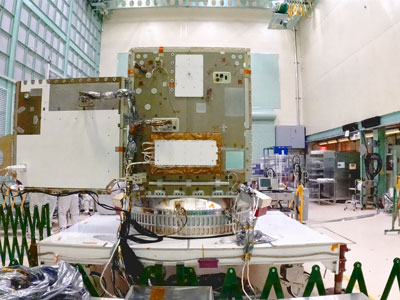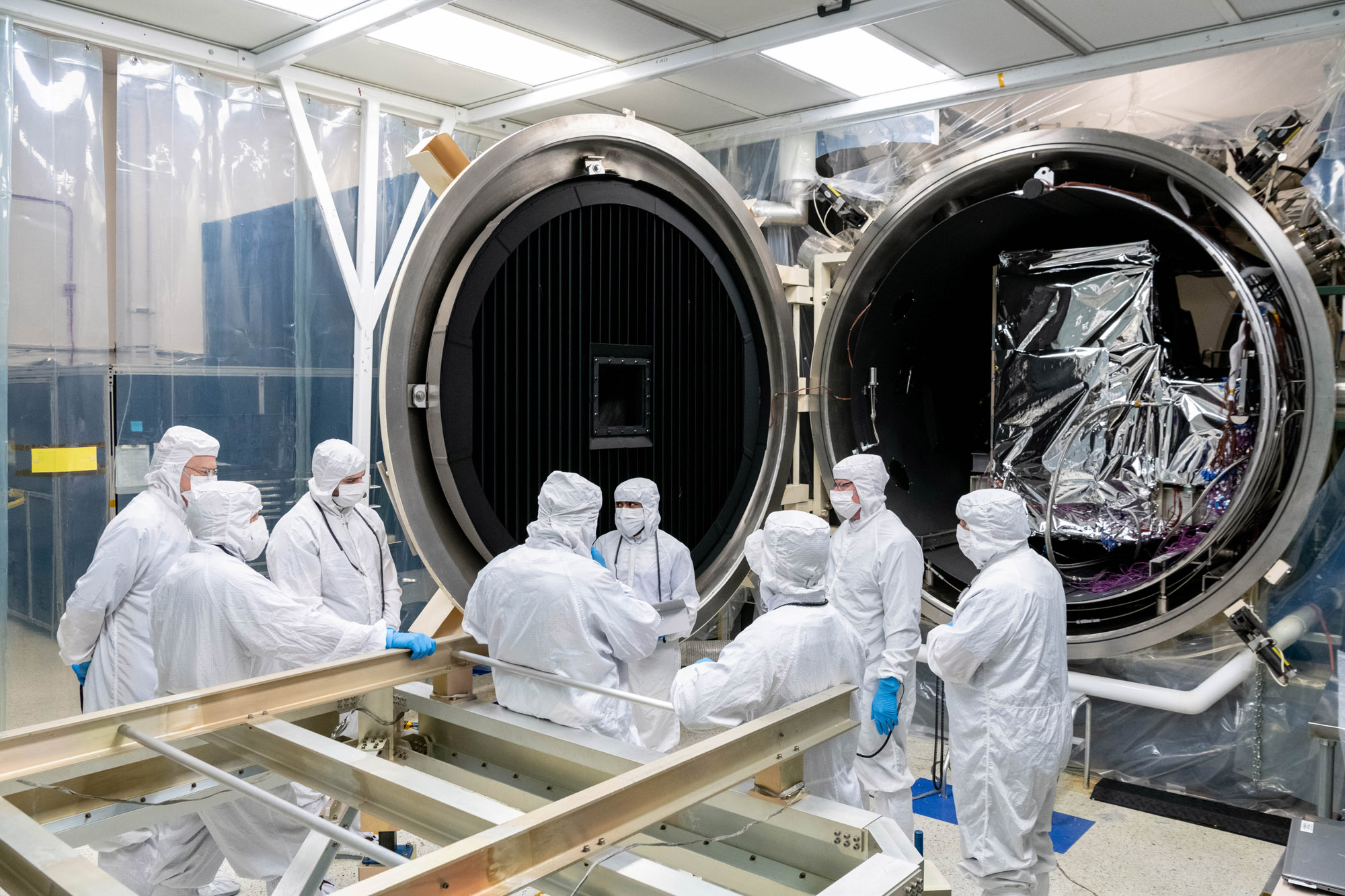
The Ocean Color Instrument team evaluates the instrument configuration in the Thermal Vacuum Chamber (TVAC) prior to closing the chamber door for testing. Credit: Mellos, Katherine
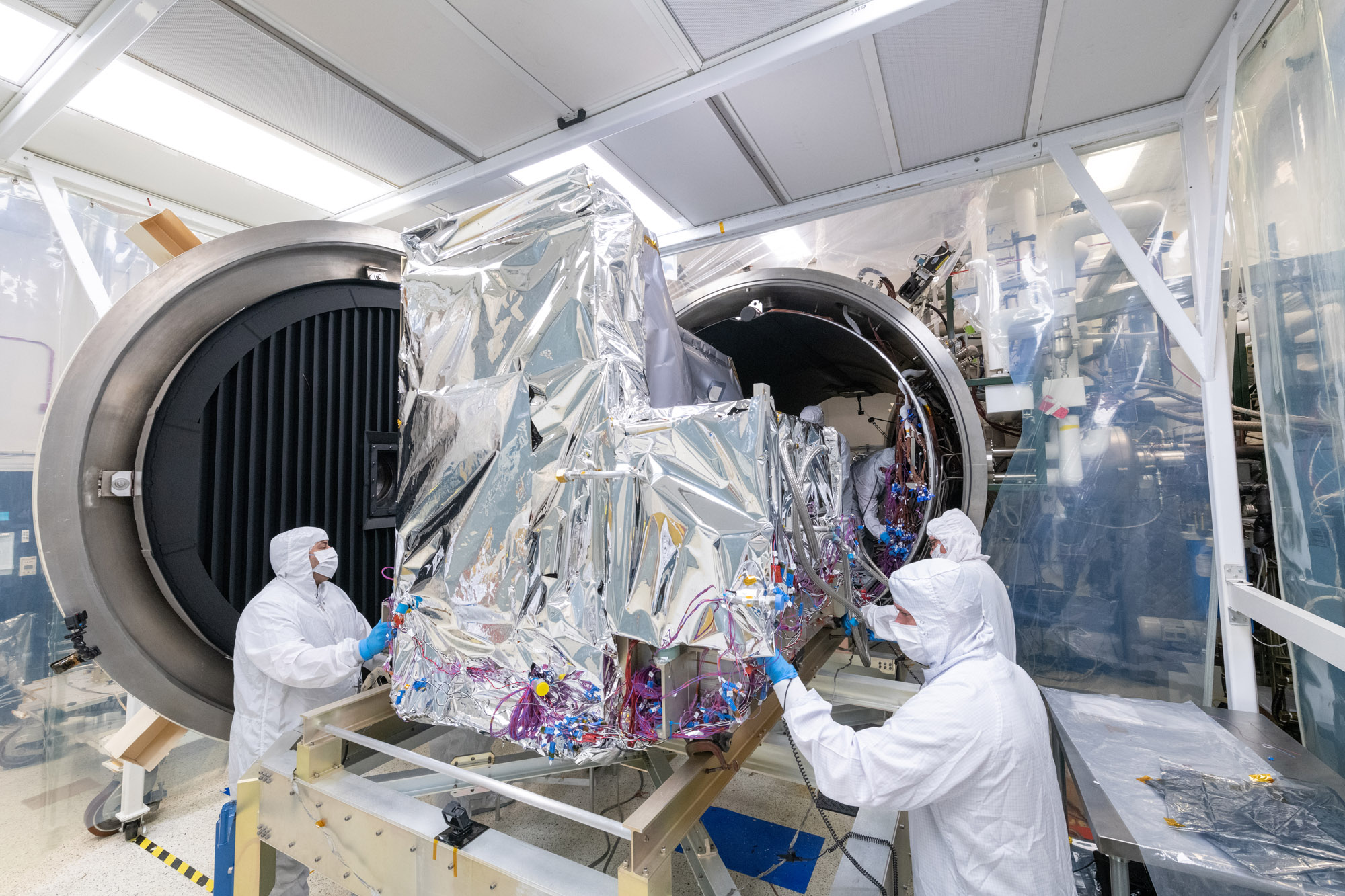
The Ocean Color Instrument team pushes the instrument into the Thermal Vacuum Chamber (TVAC) for environmental testing. Credit: Stover, Desiree
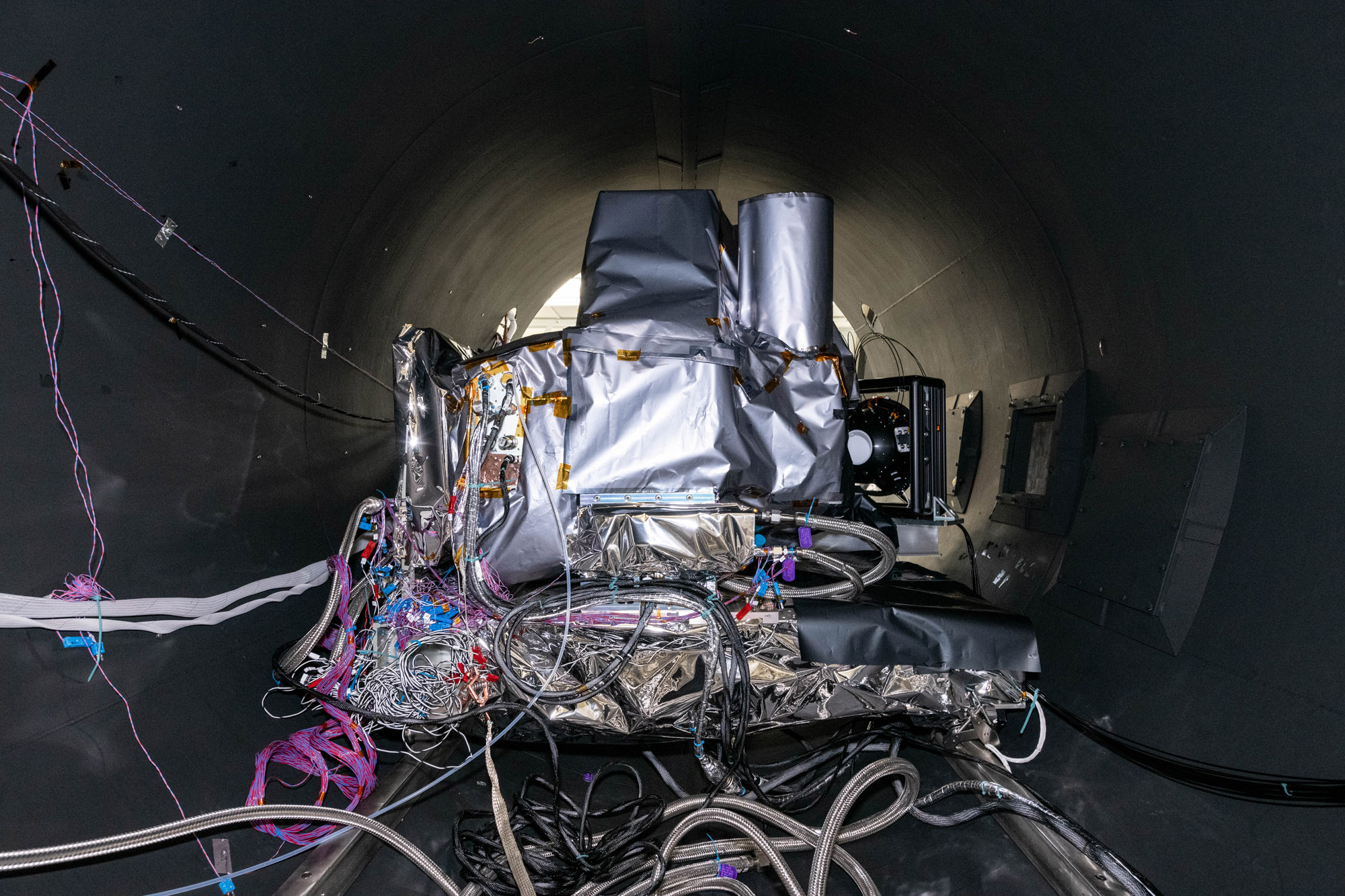
The flight Ocean Color Instrument is installed in the Thermal Vacuum Chamber (TVAC) for environmental testing. Credit: Mellos, Katherine
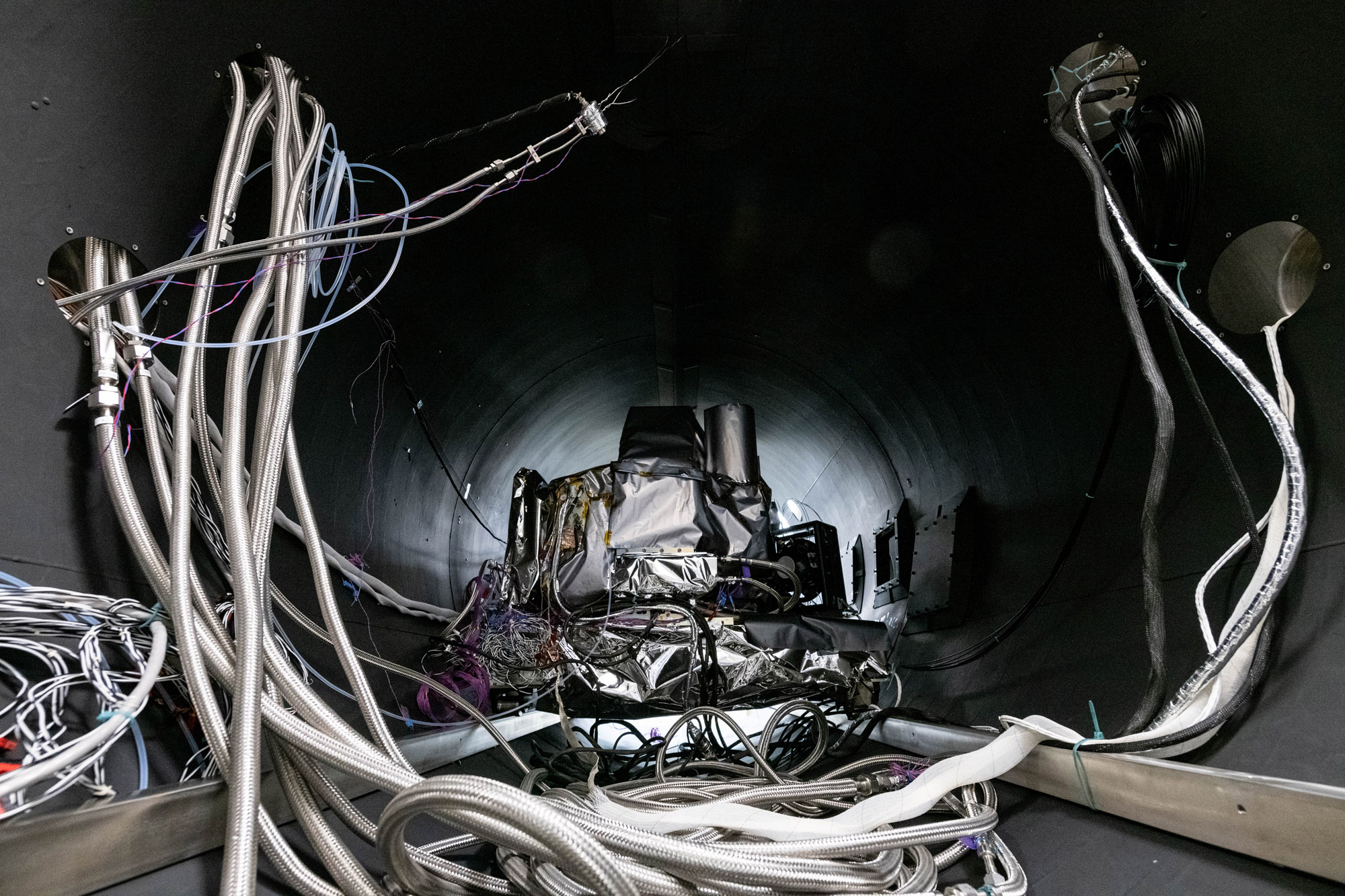
The Ocean Color Instrument is installed in the Thermal Vacuum (TVAC) chamber and prepared for thermal testing. Credit: Mellos, Katherine
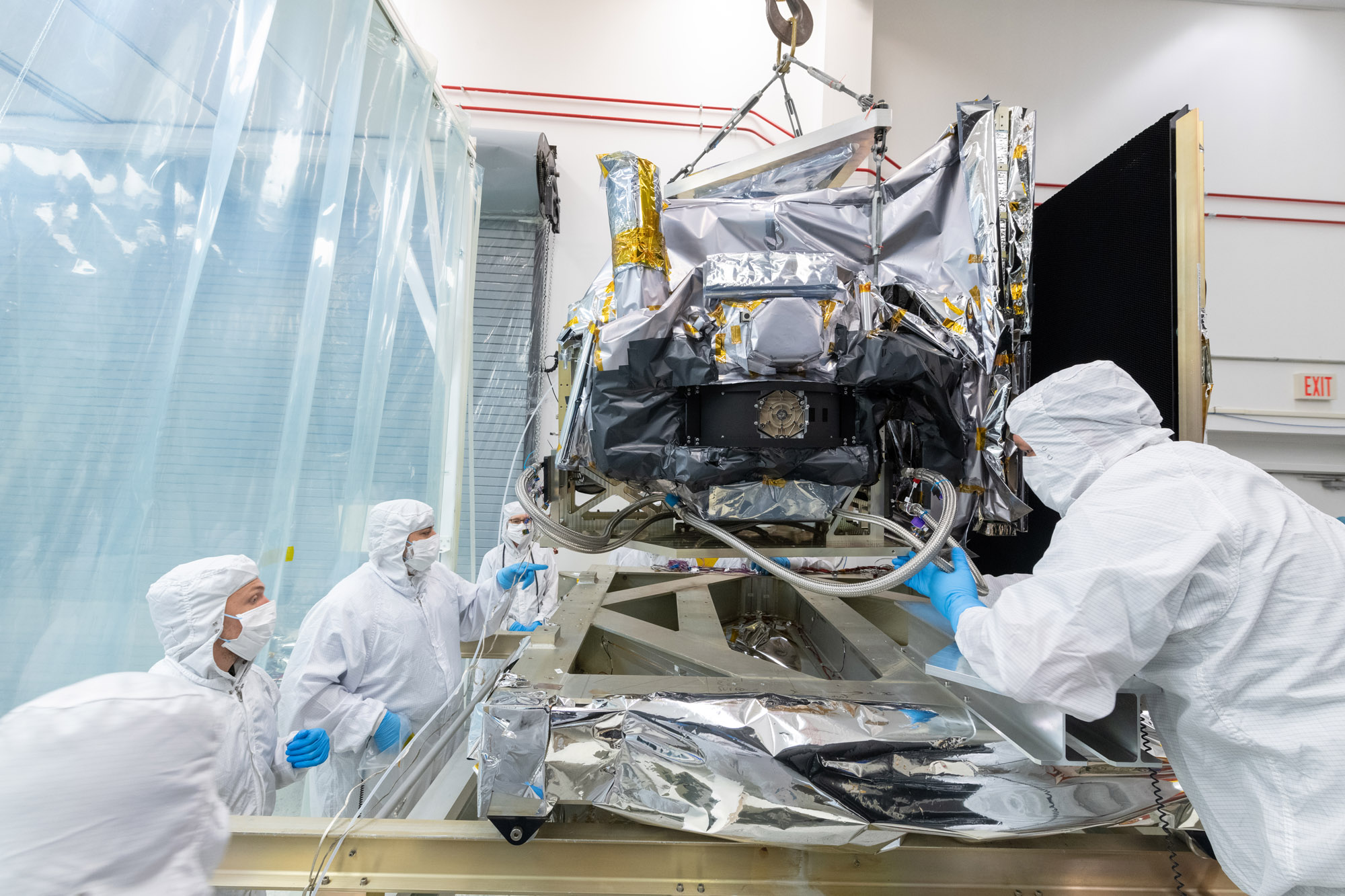
Mechanical technicians crane lift the Ocean Color Instrument on to the Thermal Vacuum Chamber (TVAC) cart. Credit: Stover, Desiree

Quality engineer Luiz Mendez observes mechanical technician Tyere Garner remove bolts before lifting the Ocean Color Instrument from Tilt Mechanism to its ground support fixture. Credit: Henry, Dennis (Denny)

Mechanical technicians crane lift the Ocean Color Instrument from the Multi-purpose Ground Support Equipment (GSE) fixture. Credit: Henry, Dennis (Denny)
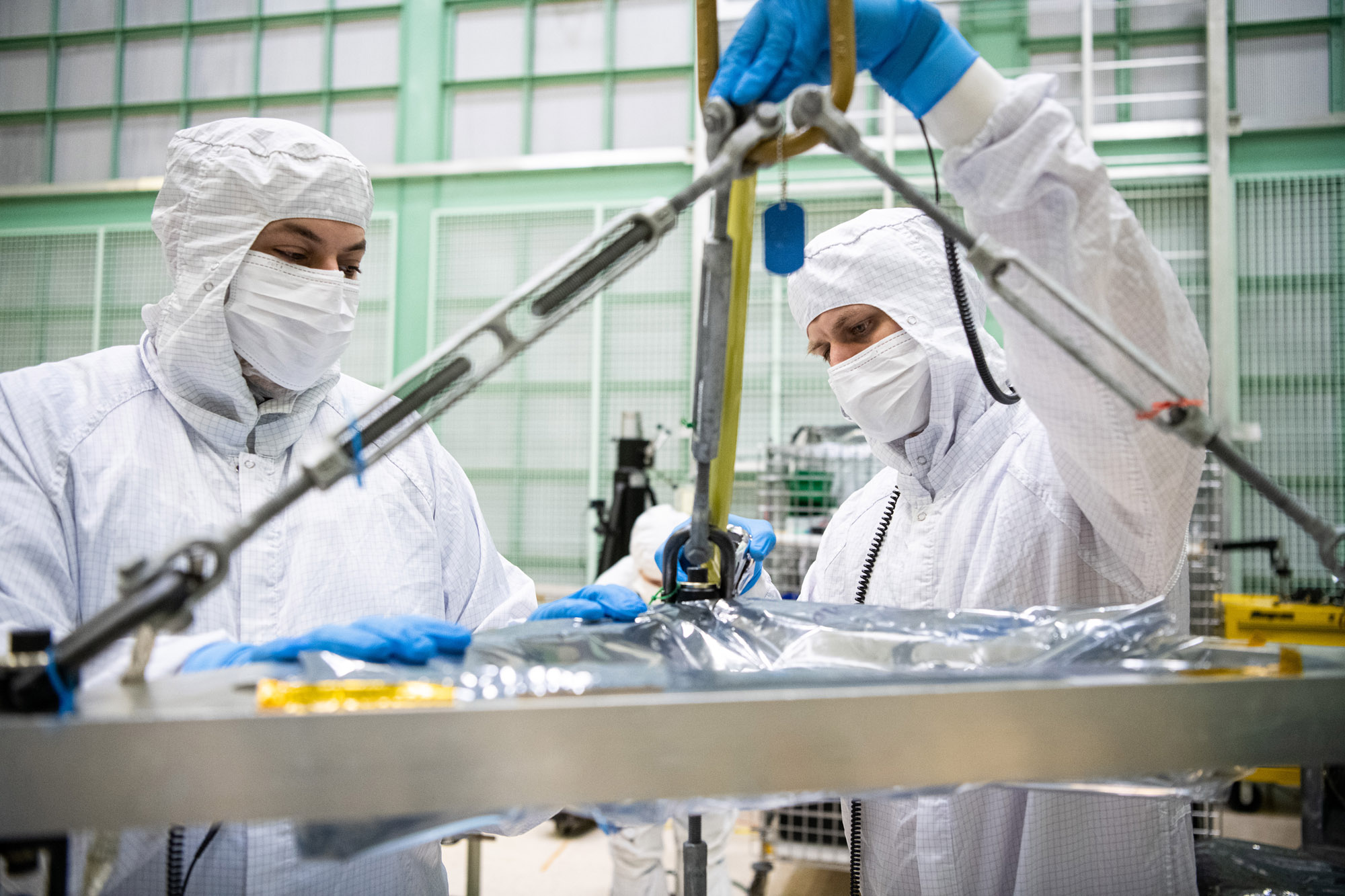
Mechanical engineer, Eduardo Rodriguez, and Mechanical Technician, Joe Eddy, prepare the vertical lift sling to crane lift the Ocean Color Instrument. Credit: Henry, Dennis (Denny)
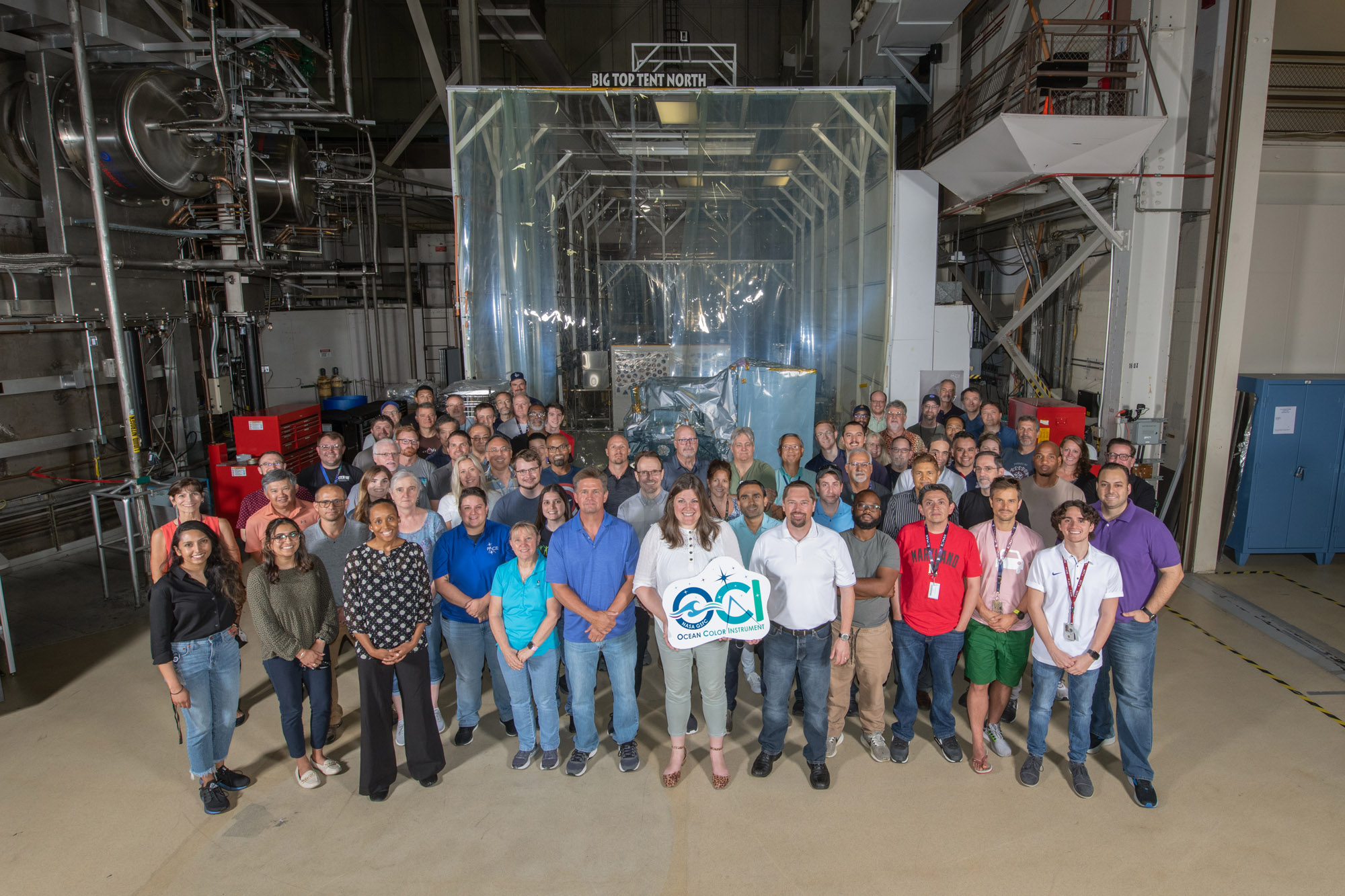
Ocean Color Instrument Team poses with the flight instrument behind them in a cleanroom tent on August 4, 2022. Credit: Stover, Desiree
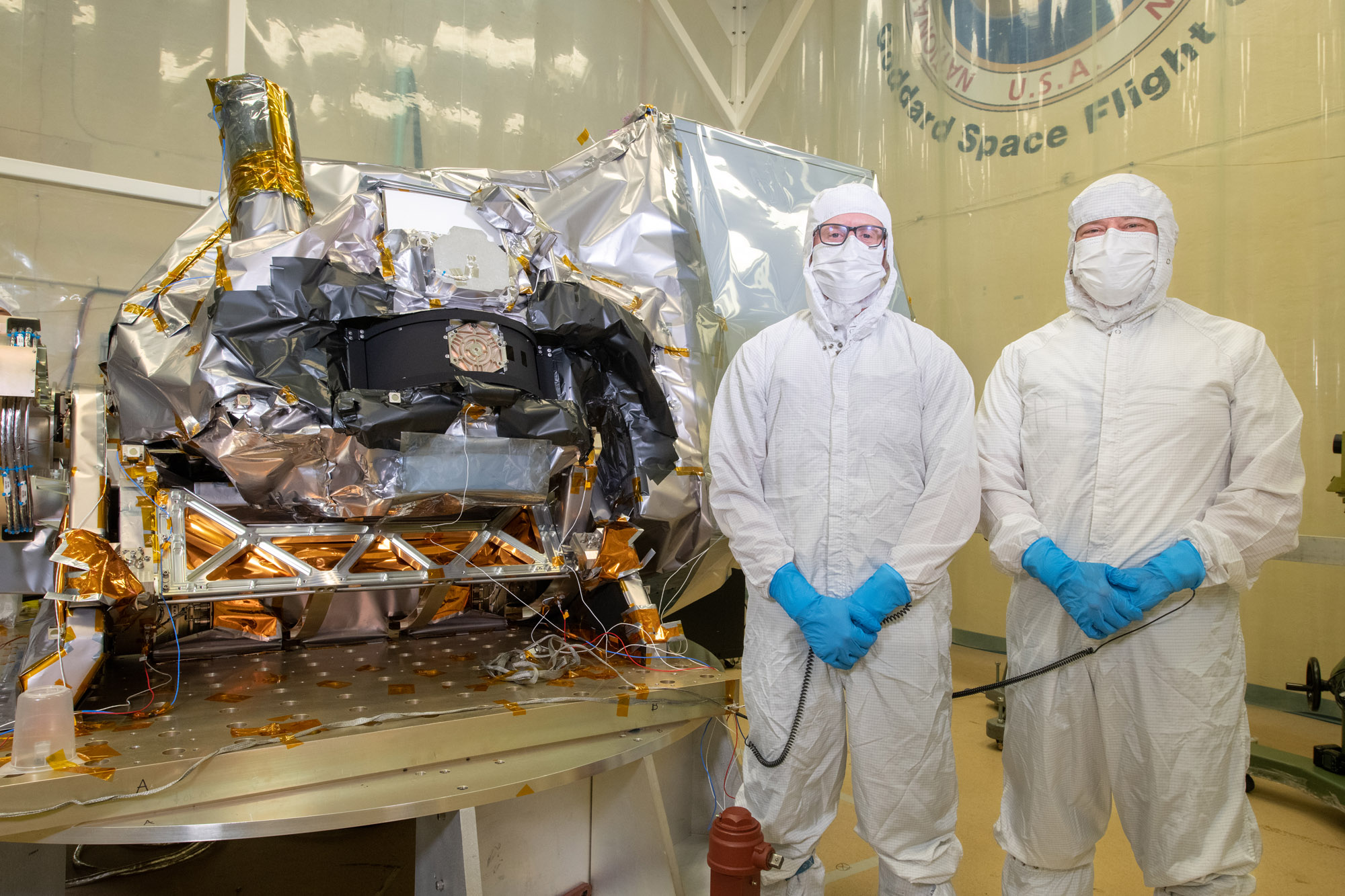
Eric Gorman & Robby Estep pose with the instrument and integrated earth shade and Tilt fixture in the acoustic chamber. Credit: Stover, Desiree
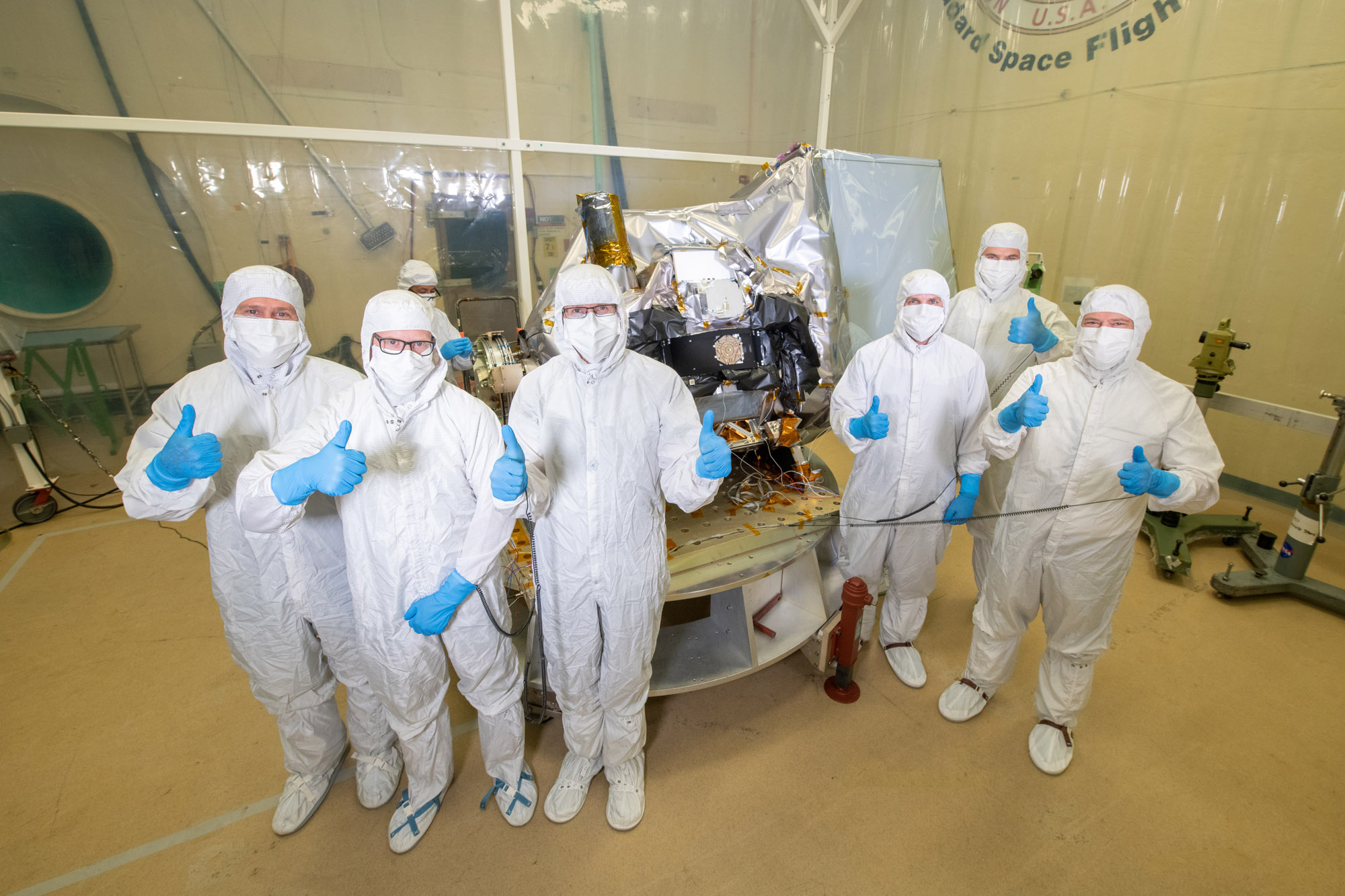
Ocean Color Instrument managers (Brian Clemons, Eric Gorman, Ulrik Gliese, Leland Chemerys, Joe Knuble, Robby Estep) pose with the instrument in the acoustic chamber. Credit: Stover, Desiree
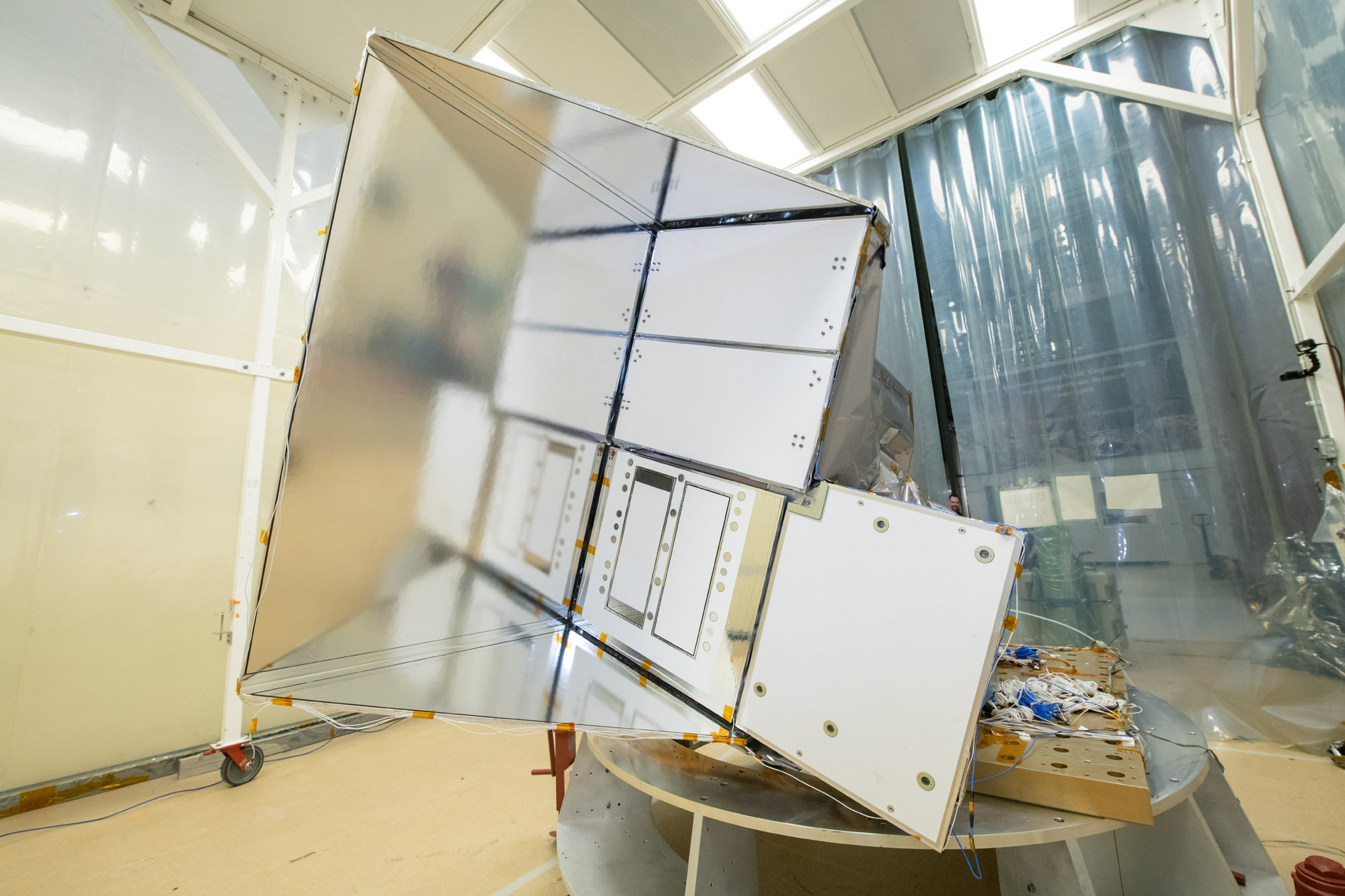
The Earth Shade (ES) radiators on the Ocean Color Instrument are displayed as it is tested in a cleanroom at Goddard Space Flight Center. Credit: Stover, Desiree
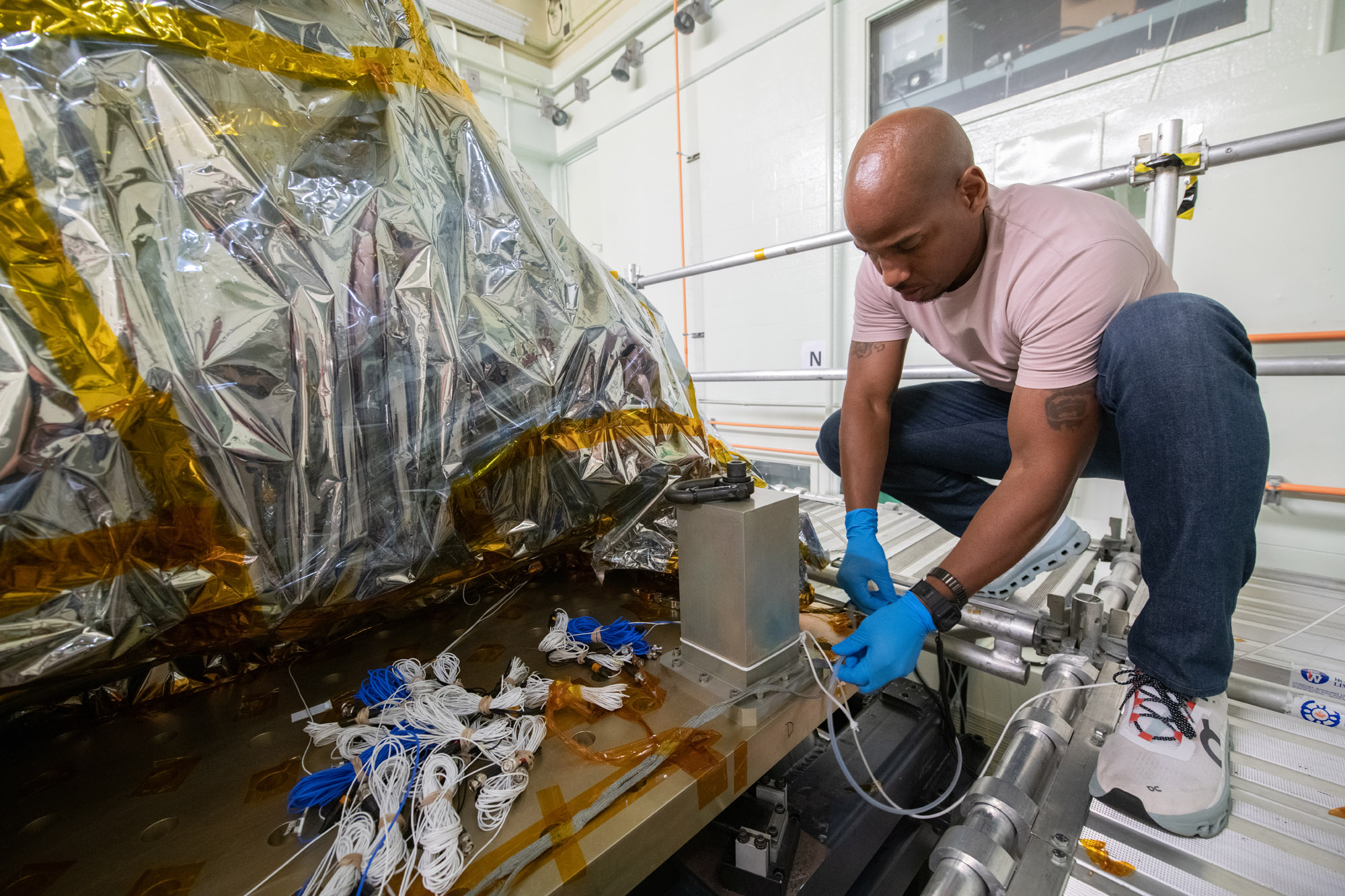
Technician Nathan Allen connects the purge line to the Ocean Color Instrument in preparation for X-Axis (vertical) vibration testing. Credit: Stover, Desiree
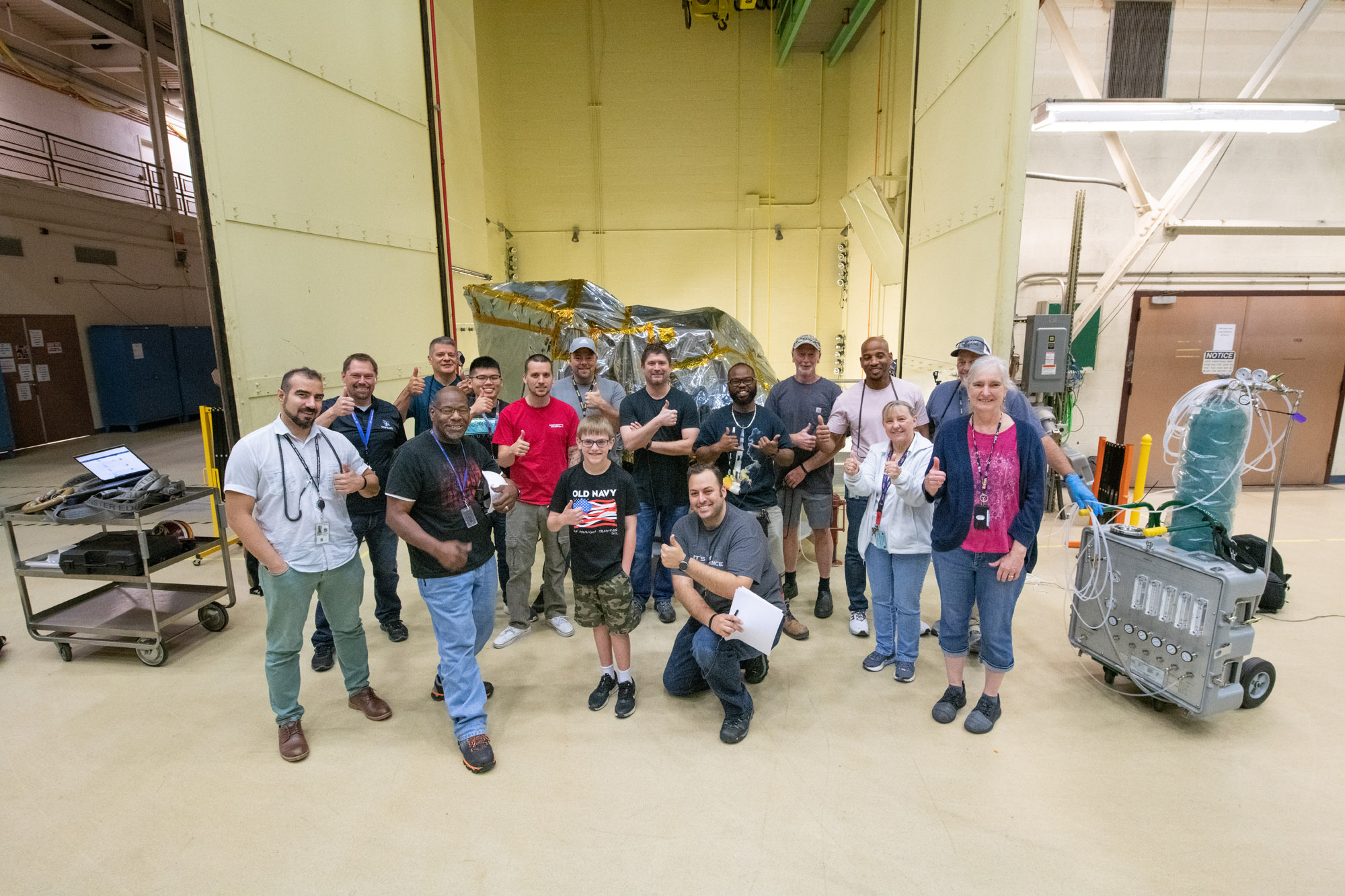
Ocean Color Instrument mechanical team poses with the bagged instrument behind them after a successful environmental testing campaign. Credit: Stover, Desiree
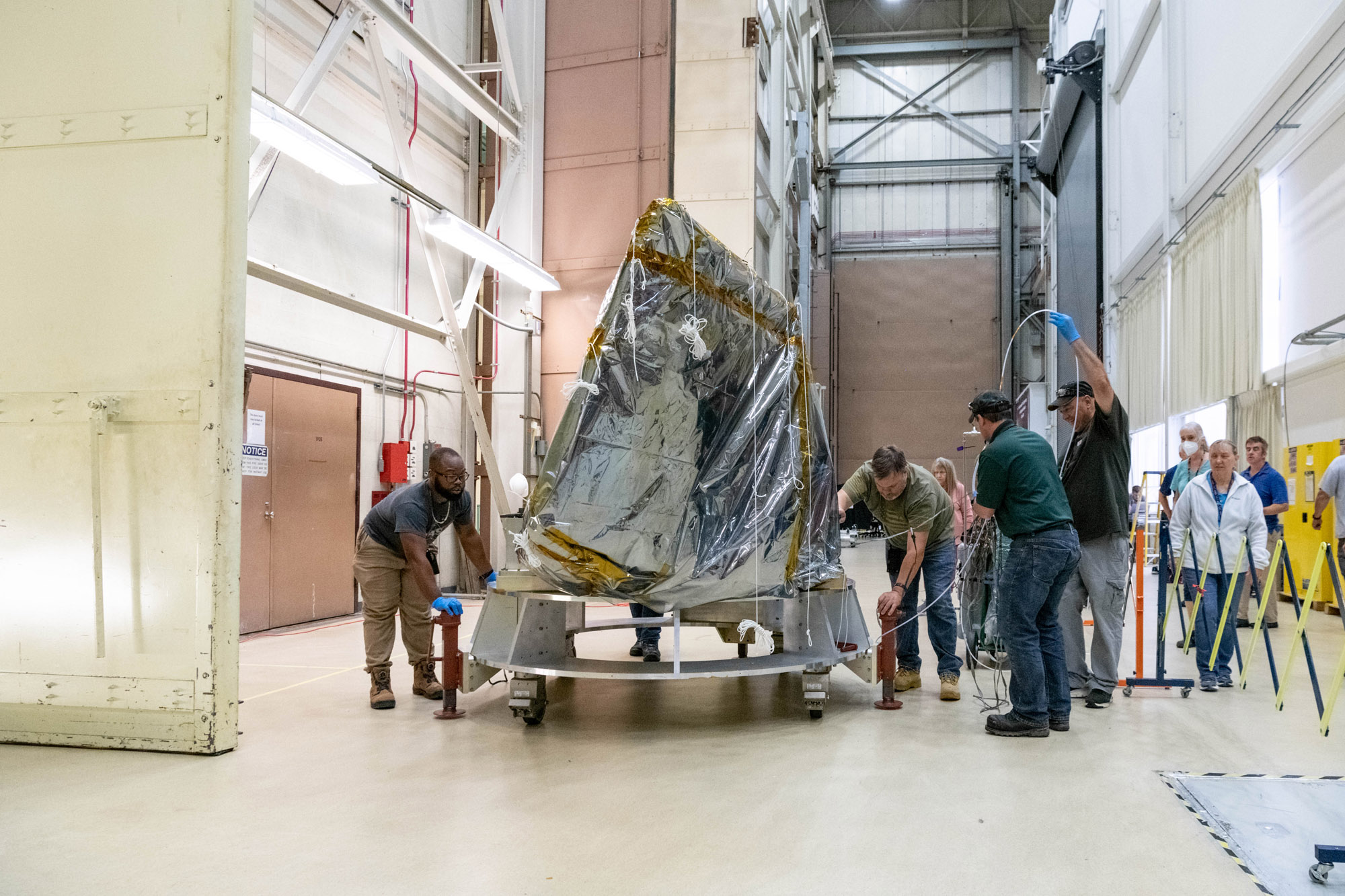
Mechanical technicians transport the Ocean Color Instrument through the integration and testing complex to X-Axis (vertical) vibration chamber. Credit: Mellos, Katherine
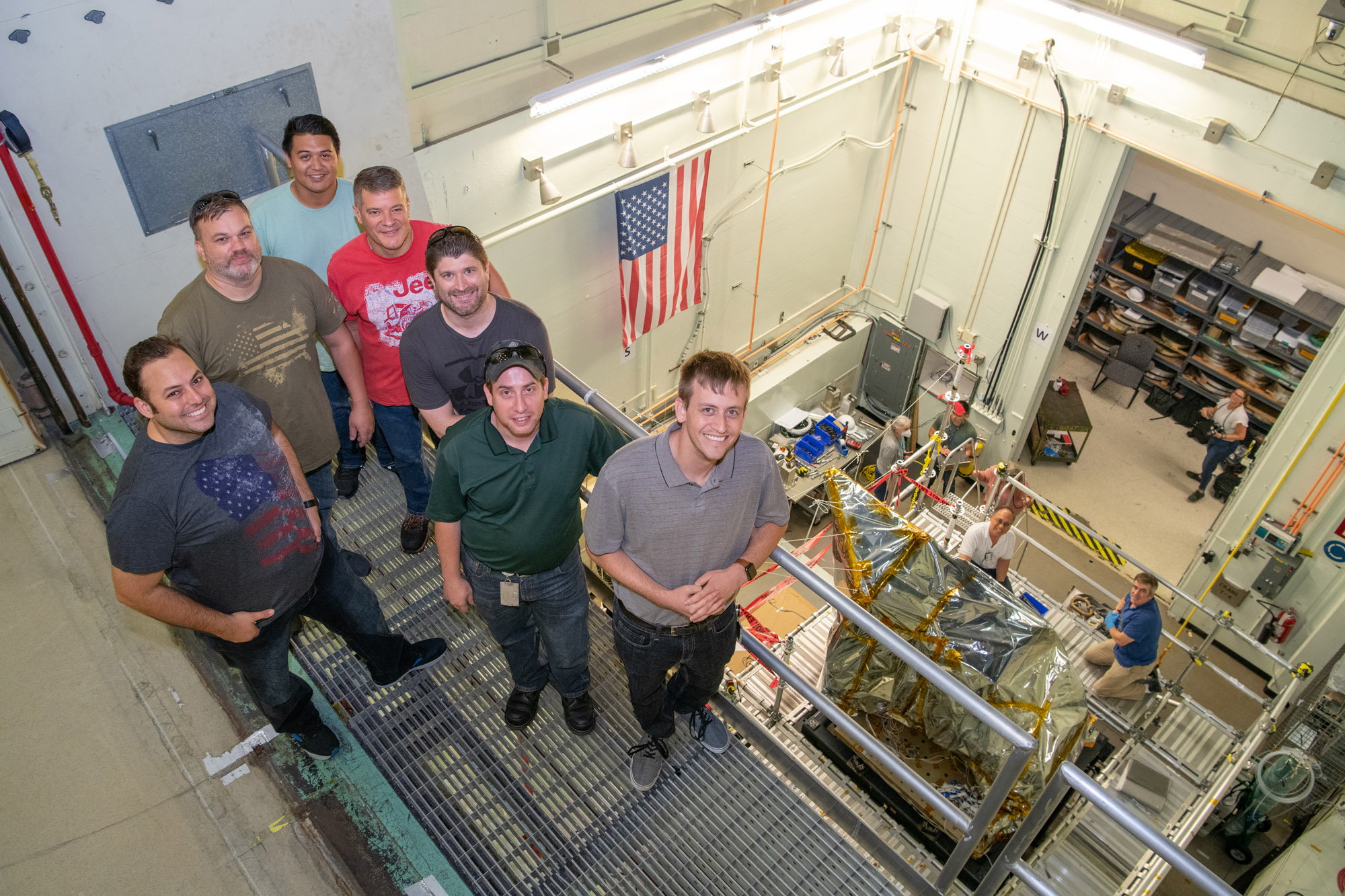
The Ocean Color Instrument mechanical team stands on the balcony overlooking the bagged instrument after successfully installing it onto the X axis (vertical) vibration shaker table. Credit: Stover, Desiree
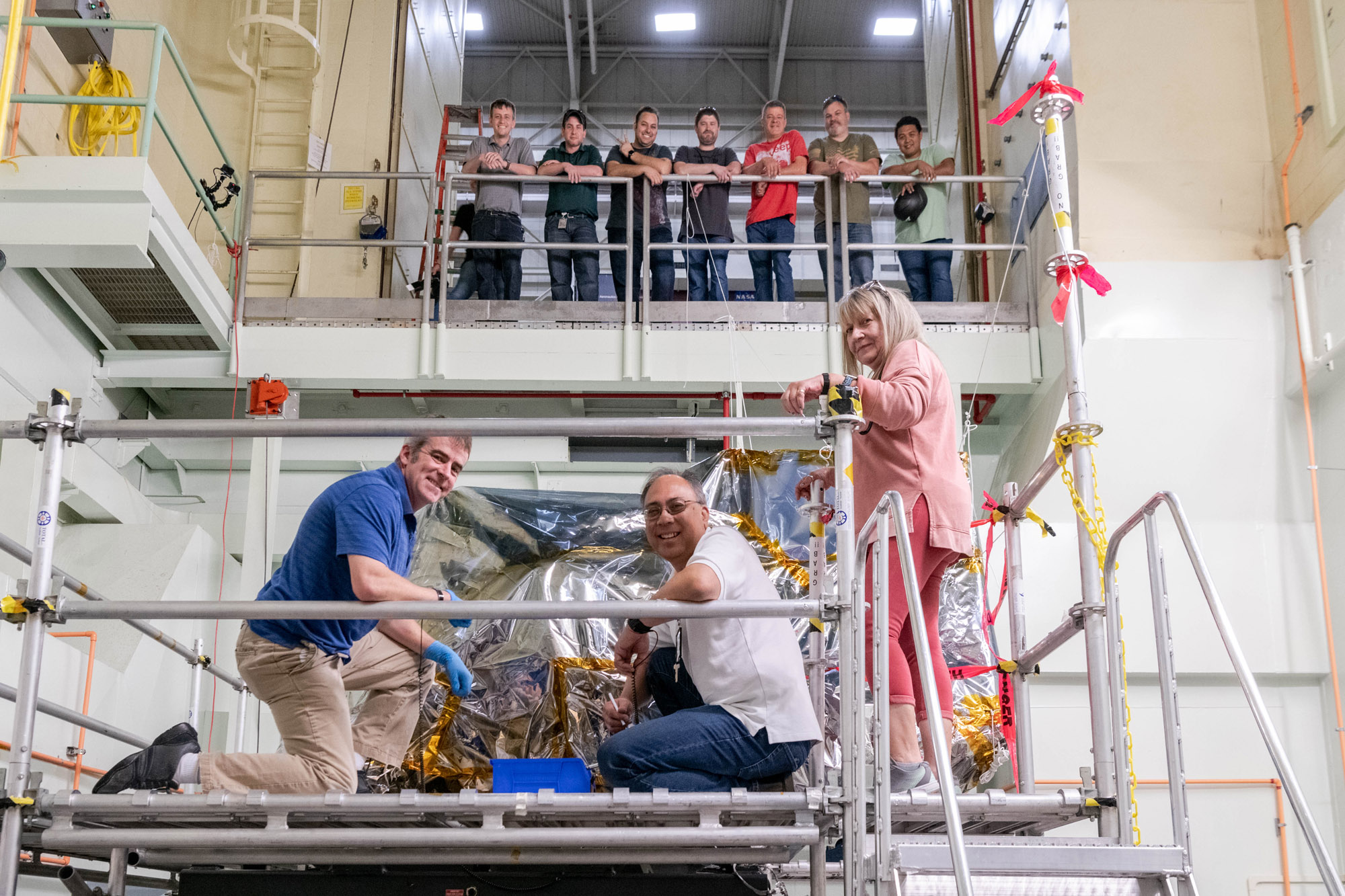
The Ocean Color Instrument mechanical team poses with the bagged instrument after successfully installing it onto the X-Axis (vertical) vibration shaker table. Credit: Mellos, Katherine
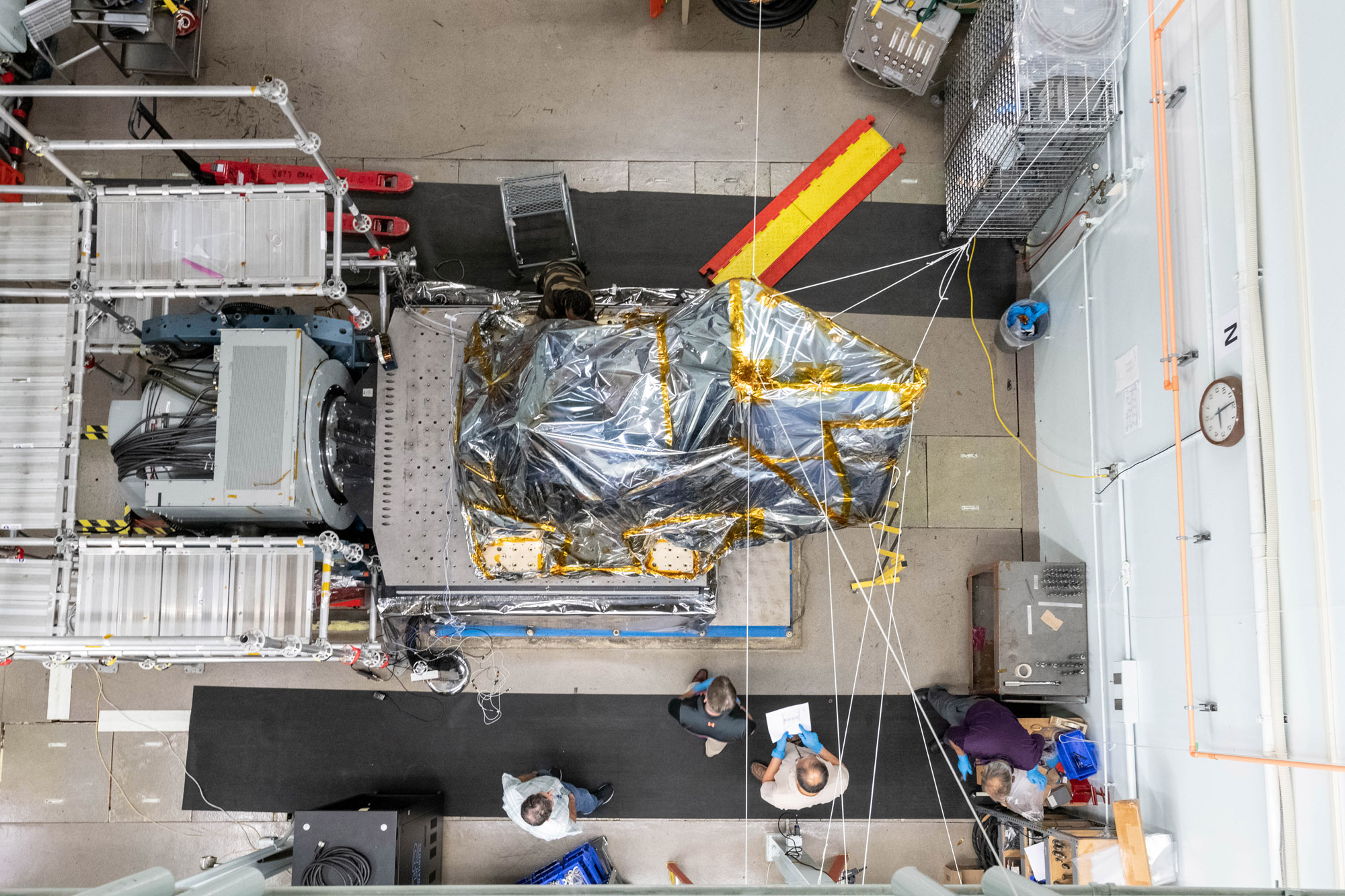
The Ocean Color Instrument is crane lifted onto the Y-axis vibration table. Credit: Mellos, Katherine
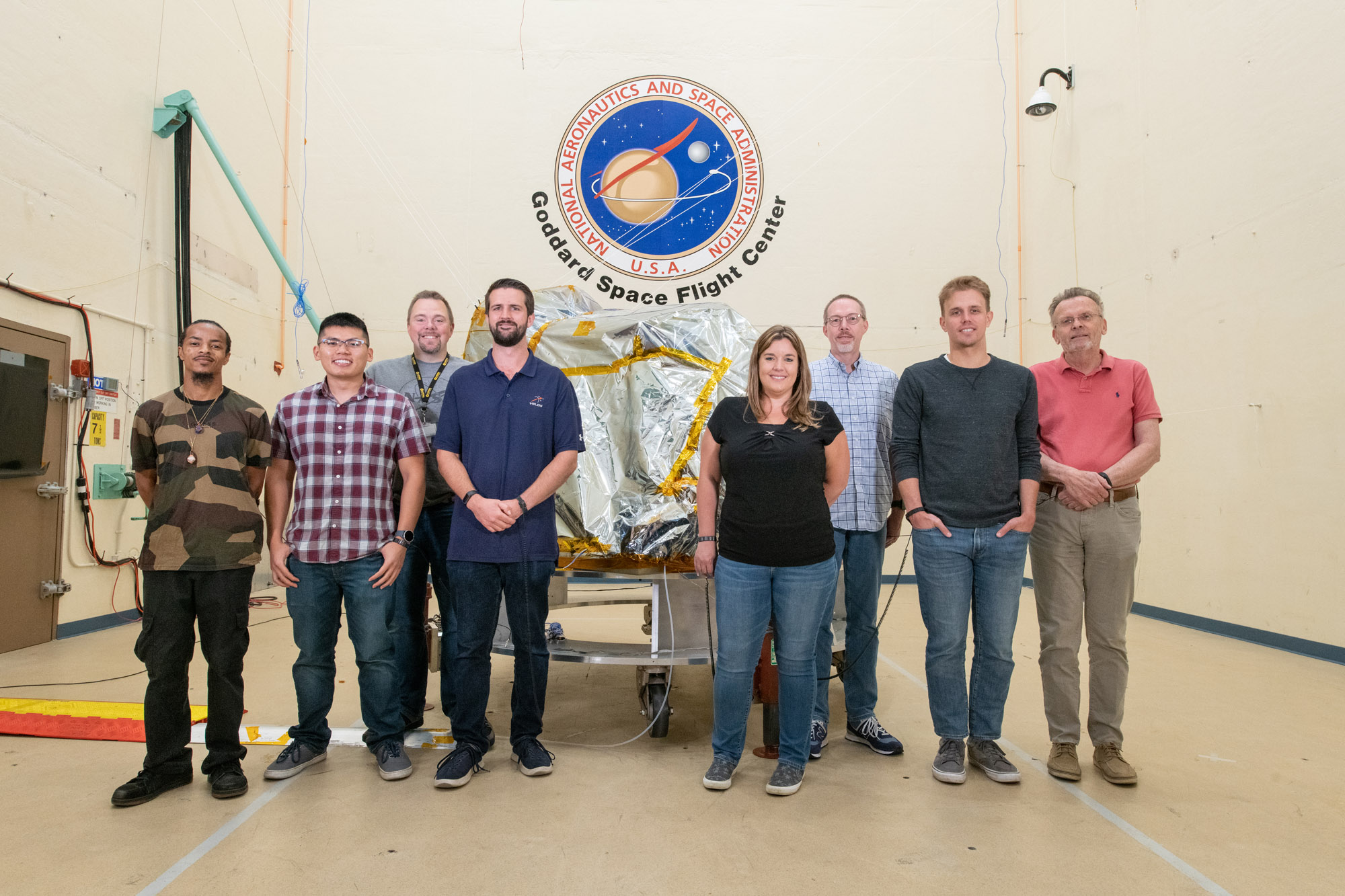
The GSFC environmental testing team poses with the bagged Ocean Color Instrument in the acoustic chamber prior to testing. Credit: Stover, Desiree

Mechanical technicians crane lift the Ocean Color Instrument with Earth Shade onto the Flight Tilt Mechanism. Credit: Stover, Desiree
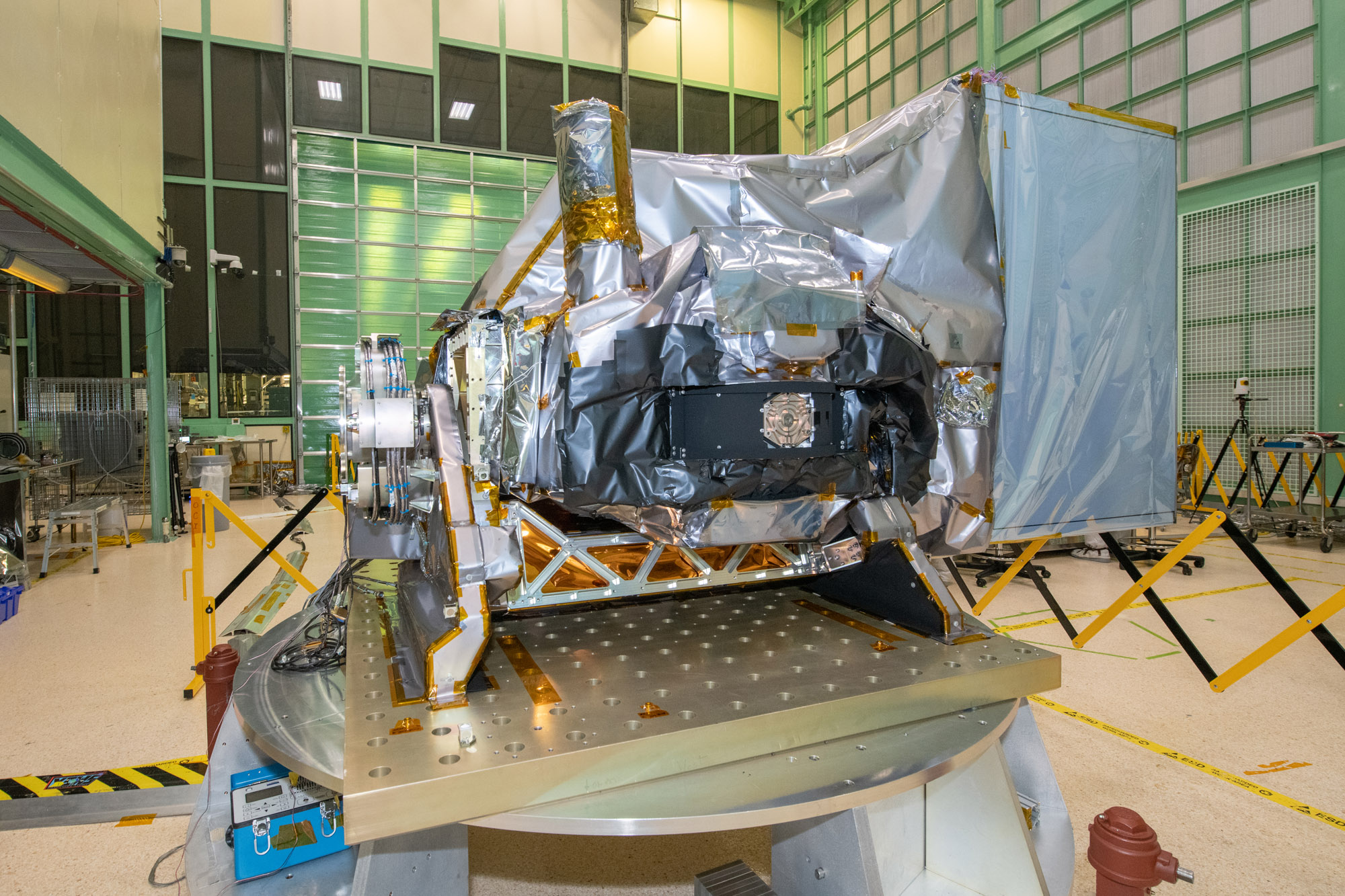
The Ocean Color Instrument integrated onto the Flight Tilt Mechanism with the Earth Shade. Credit: Stover, Desiree
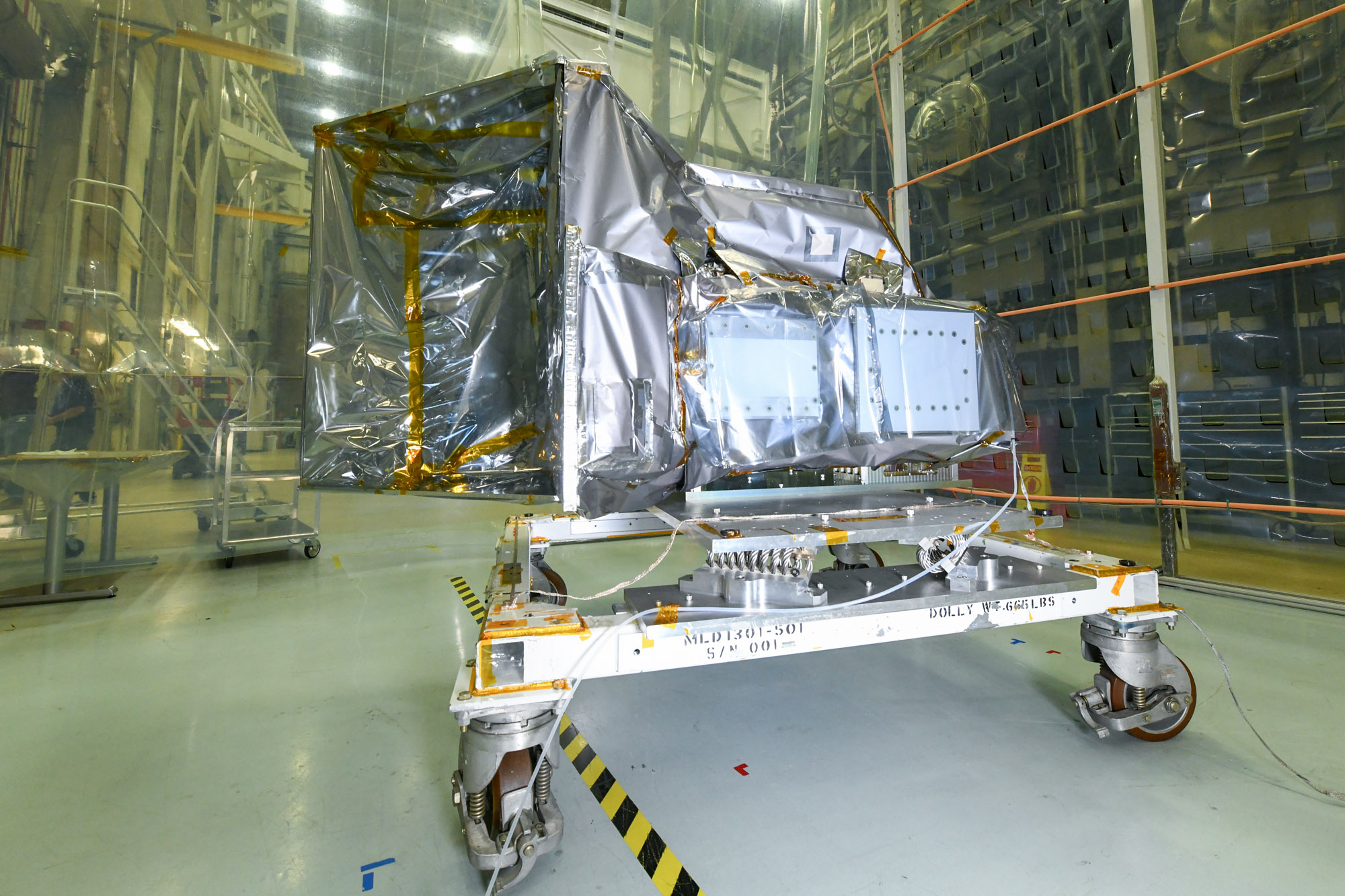
The Ocean Color Instrument is prepared for environmental testing with installed thermal blankets, protective contamination covers, and flight Earth Shade (ES). Credit: Stover, Desiree
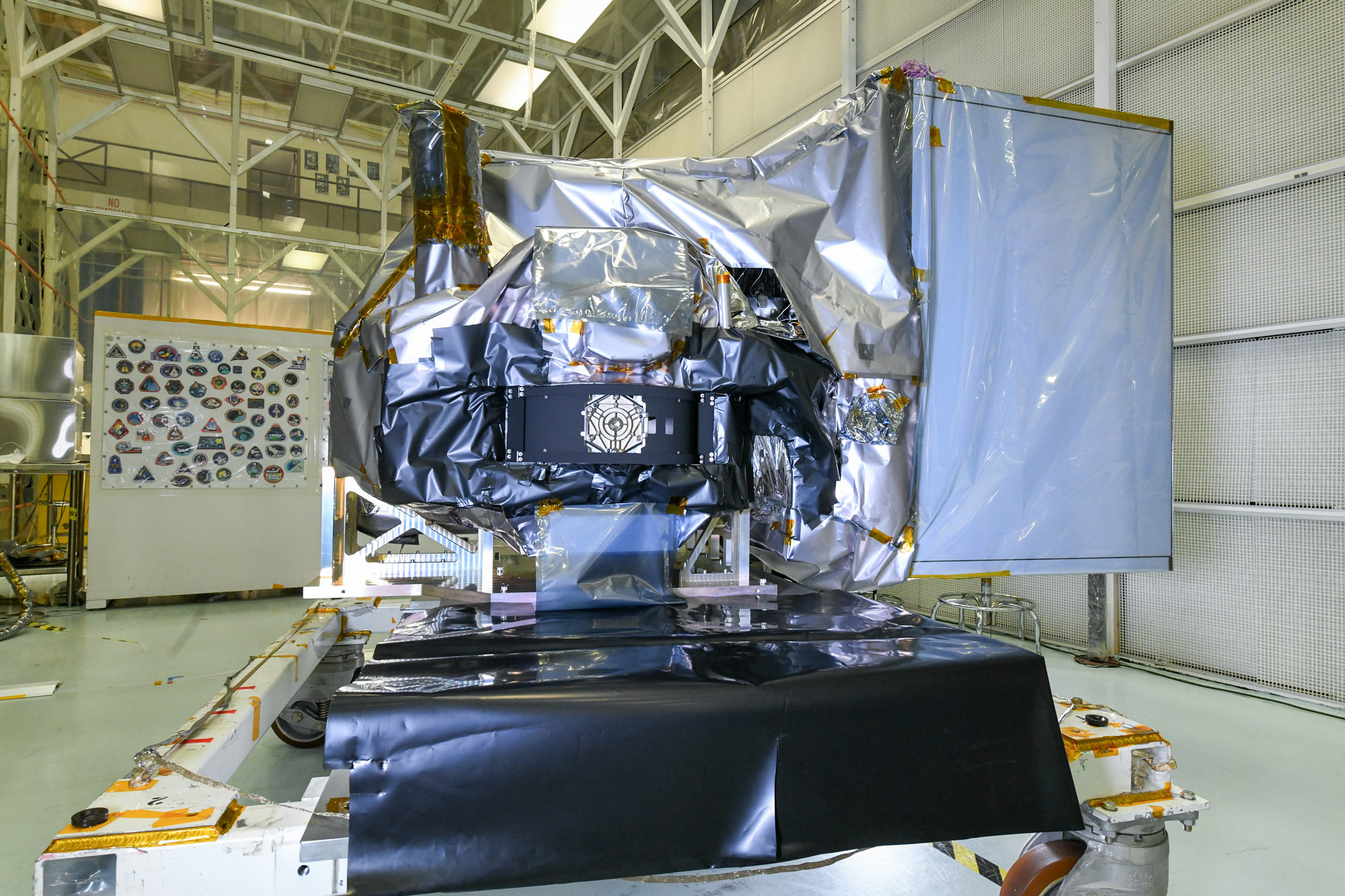
The Ocean Color Instrument (OCI) is prepared for environmental testing with installed thermal blankets and flight Earth Shade in a cleanroom at Goddard Space Flight Center. Credit: Stover, Desiree
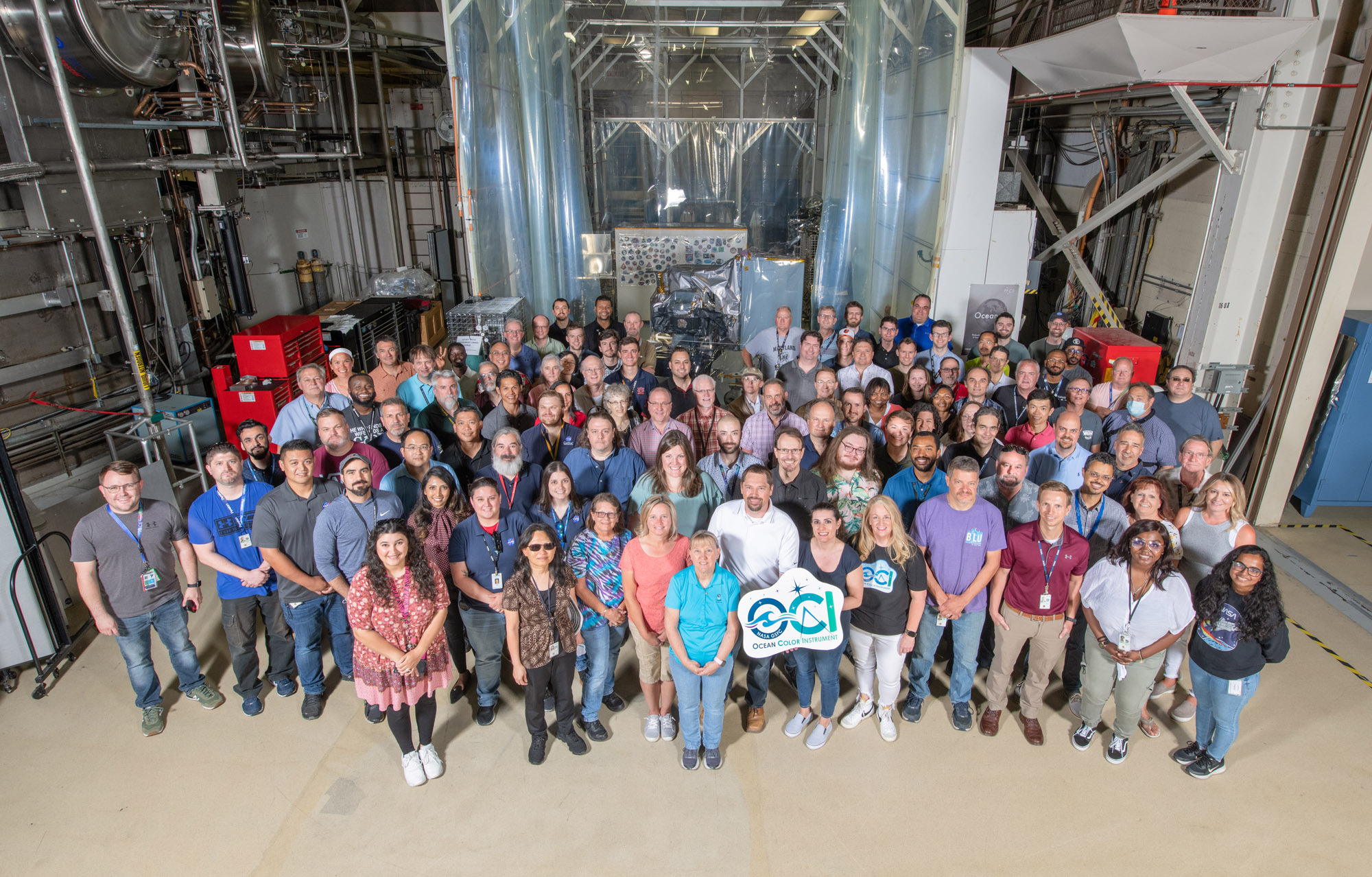
The Ocean Color Instrument (OCI) team poses with OCI and its integrated Earth Shade in June 2022 at Goddard Space Flight Center. Credit: Stover, Desiree
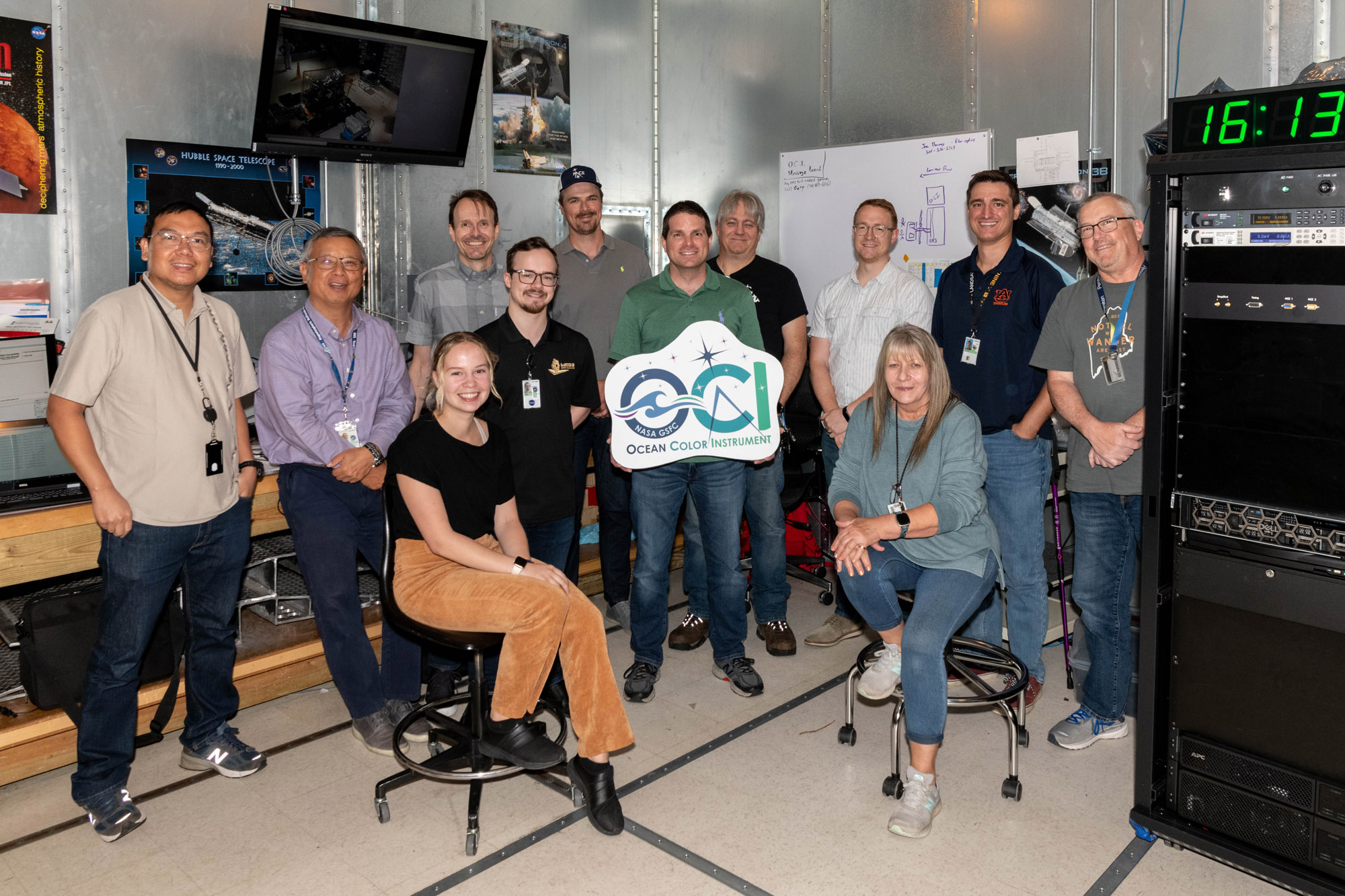
The Ocean Color Instrument Electro-Magnetic Interference (EMI) & Electrical Ground Support Equipment (EGSE) Team pose in the control room at at Goddard Space Flight Center. Credit: Mellos, Katherine
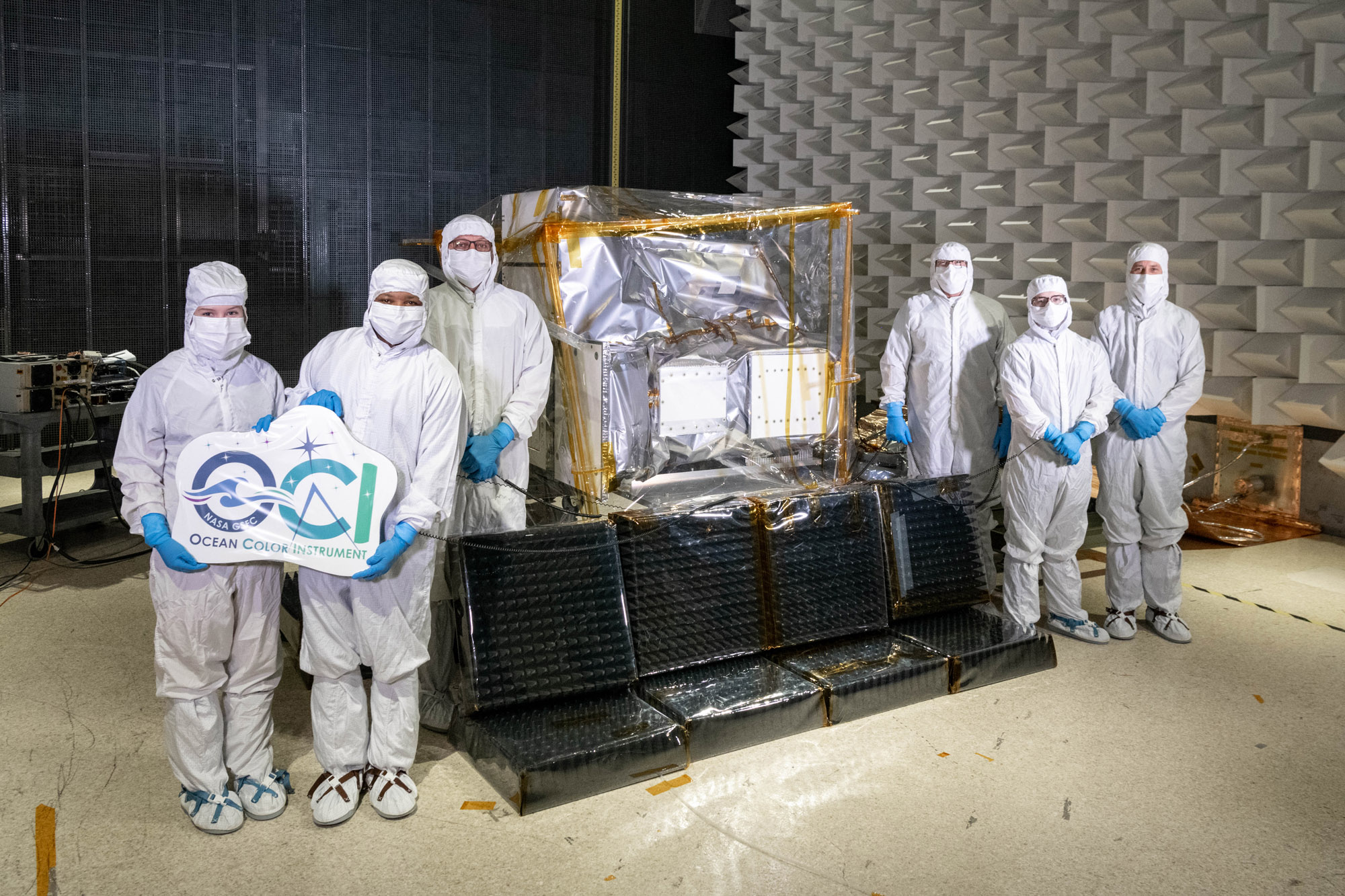
The Ocean Color Instrument Electro-Magnetic Interference (EMI) Team pose in the EMI cleanroom at Goddard Space Flight Center. Credit: Mellos, Katherine
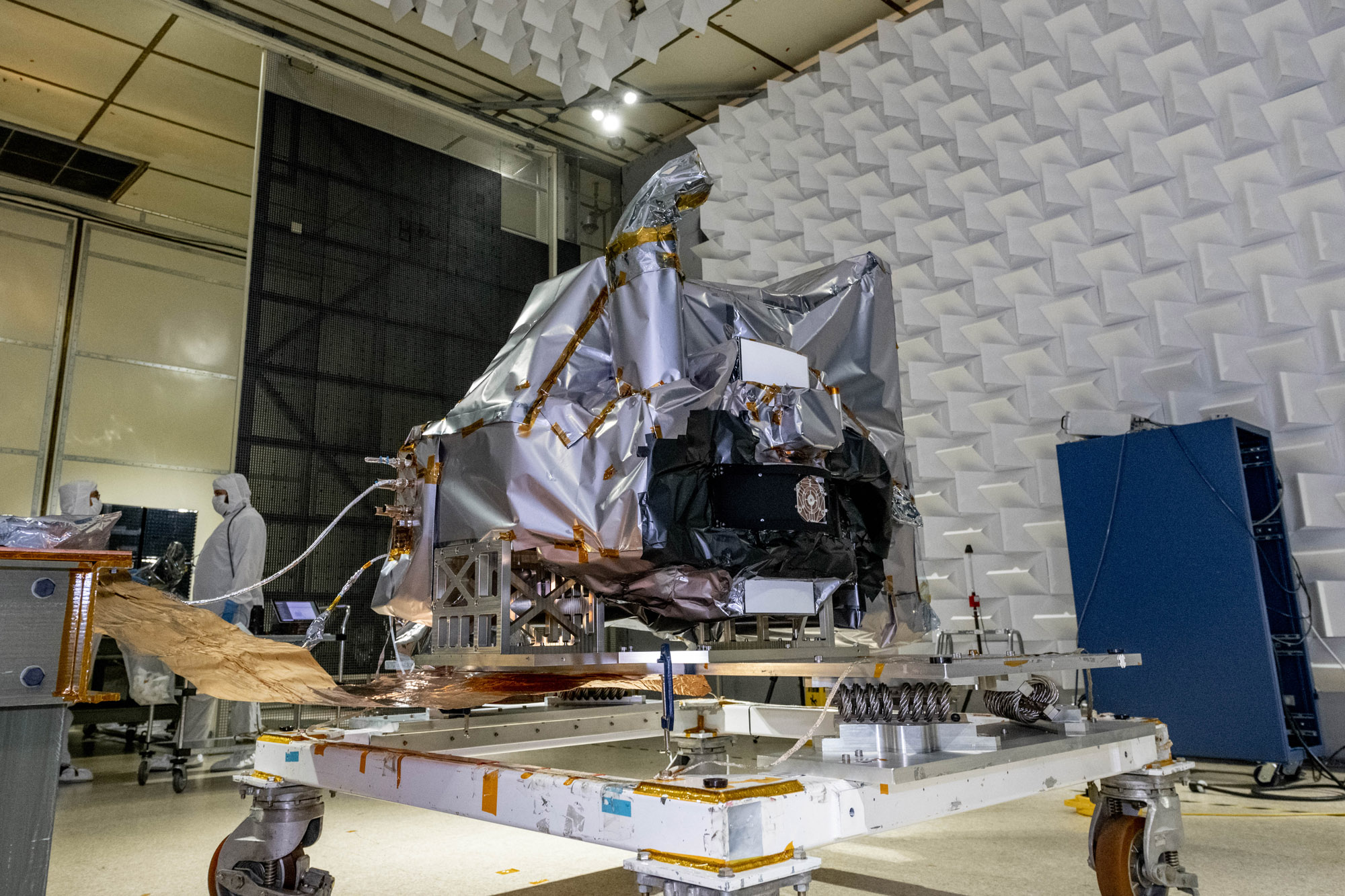
The Ocean Color Instrument is prepared for testing in the Electro-Magnetic Interference (EMI) chamber showing the Rotating Telescope side of the instrument. Credit: Mellos, Katherine
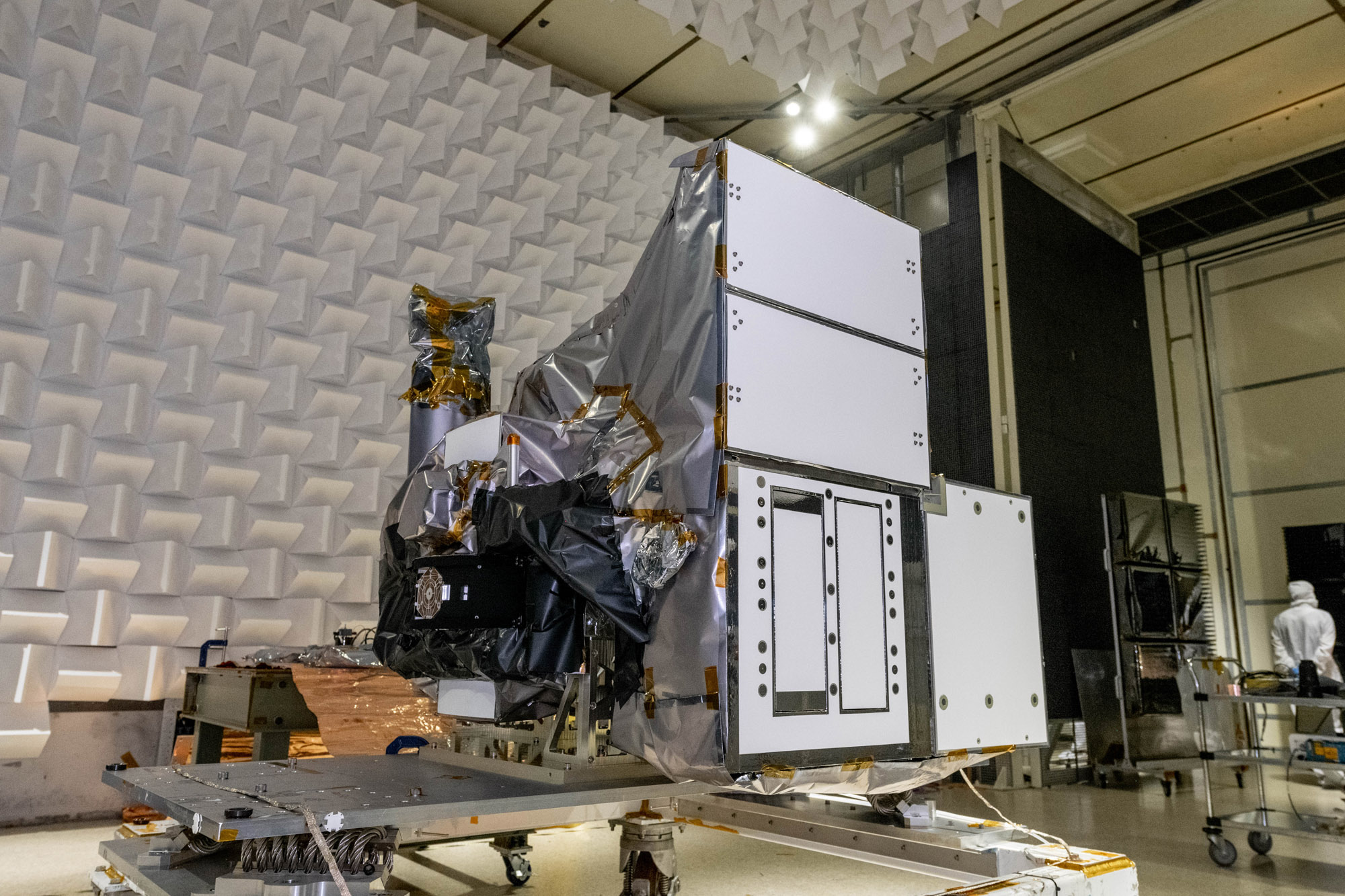
The Ocean Color Instrument is prepared for testing in the Electro-Magnetic Interference (EMI) chamber. Credit: Mellos, Katherine
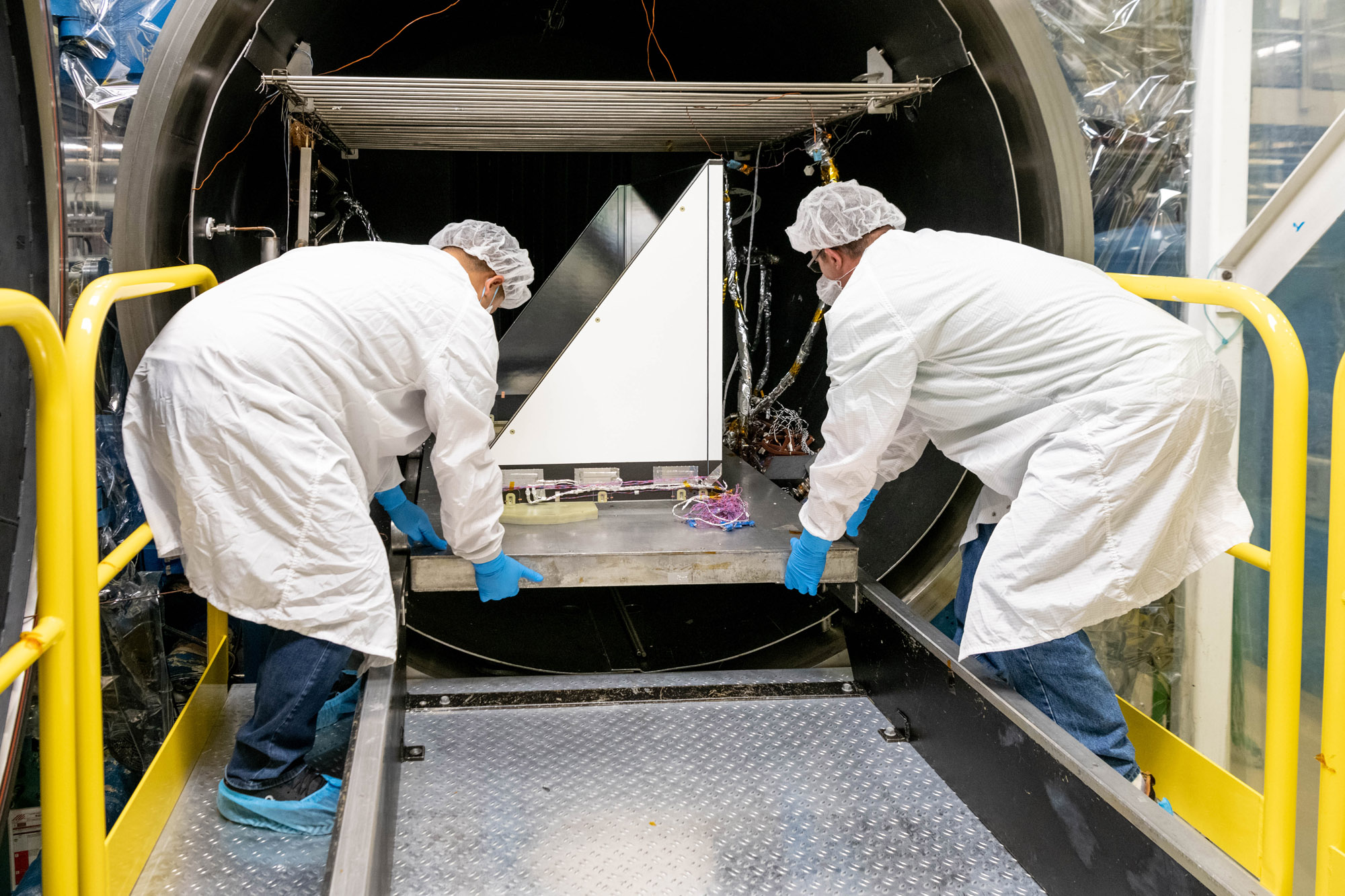
The Ocean Color Instrument Earth Shade (ES) is removed from a thermal chamber after successful testing. Credit: Mellos, Katherine
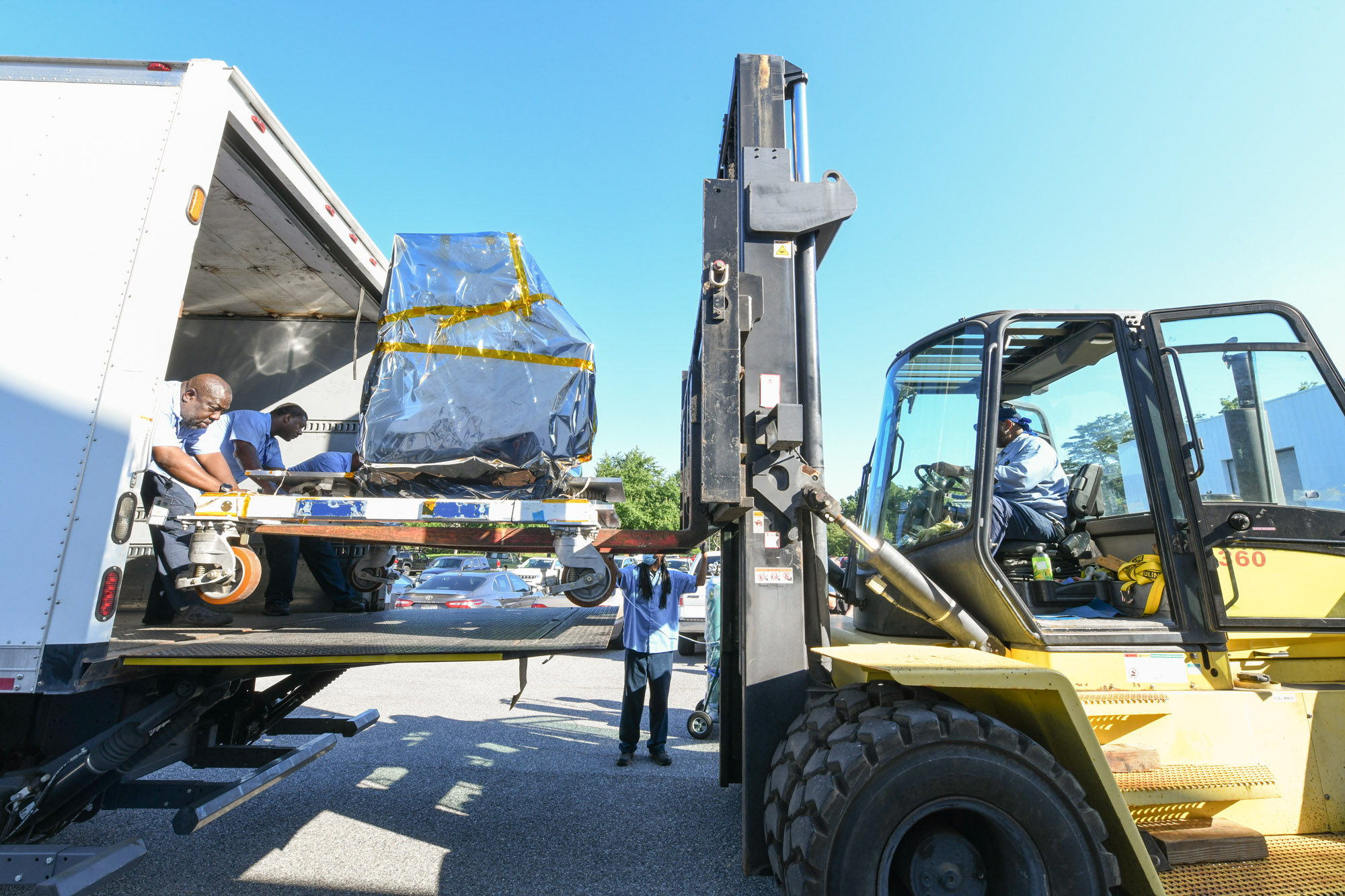
The GSFC Trax team lifts the Ocean Color Instrument on a forklift into a truck to transport to the integration and testing facility for envirnomental testing. Credit: Stover, Desiree
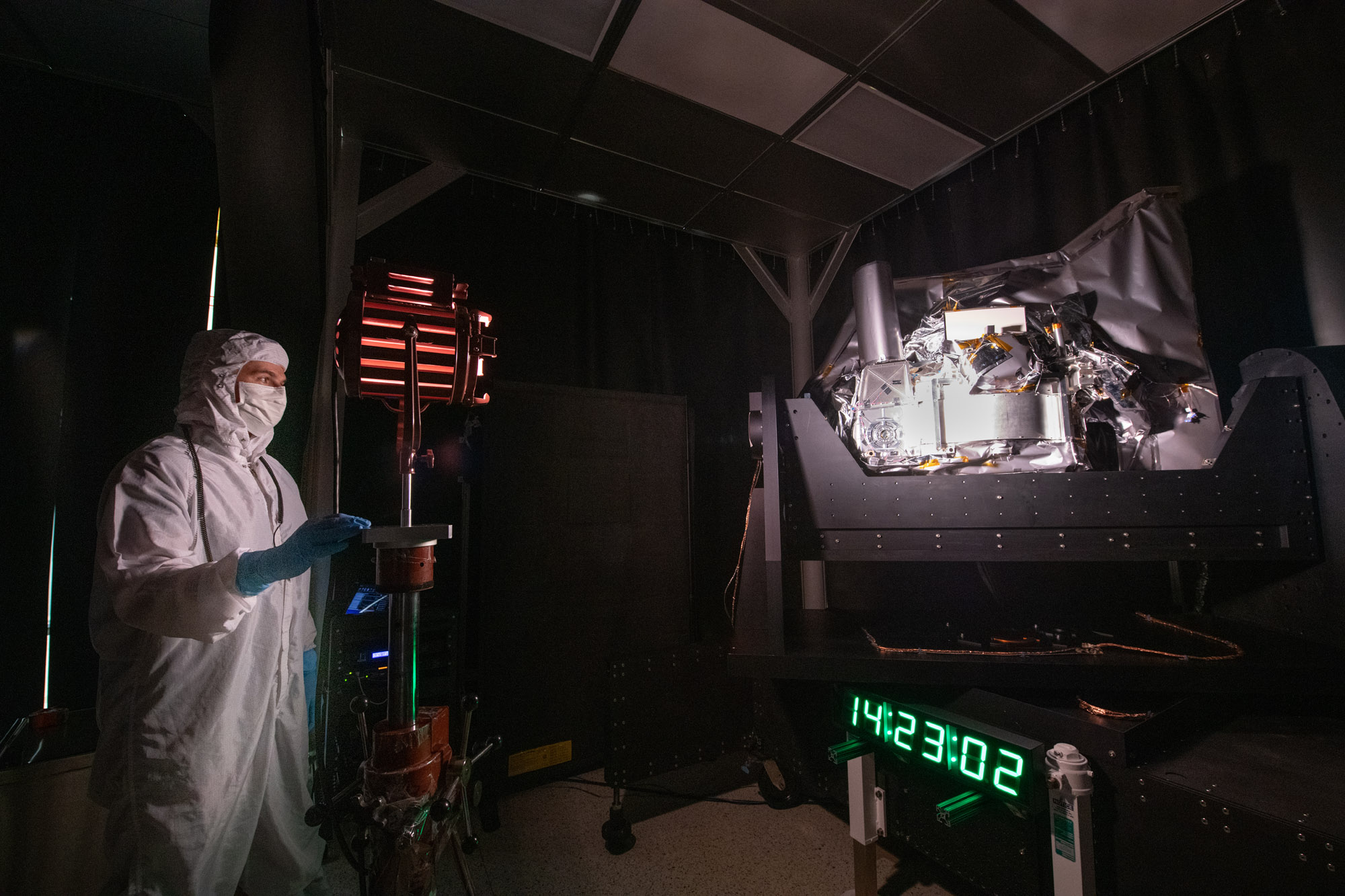
Systems engineer, Joseph Knuble, adjusts the intensity of the studio lamp during the Ocean Color Instrument stray light testing. Credit: Stover, Desiree

Systems engineer, Joseph Knuble, adjusts the intensity of the studio lamp during the Ocean Color Instrument stray light testing. Credit: Stover, Desiree

Mechanical technician, Thomas Huber, integrates the Short Wave Infrared (SWIR) Pulse Calibration Assembly (SPCA) fold mirror assembly to the Ocean Color Instrument. Credit: Mellos, Katherine
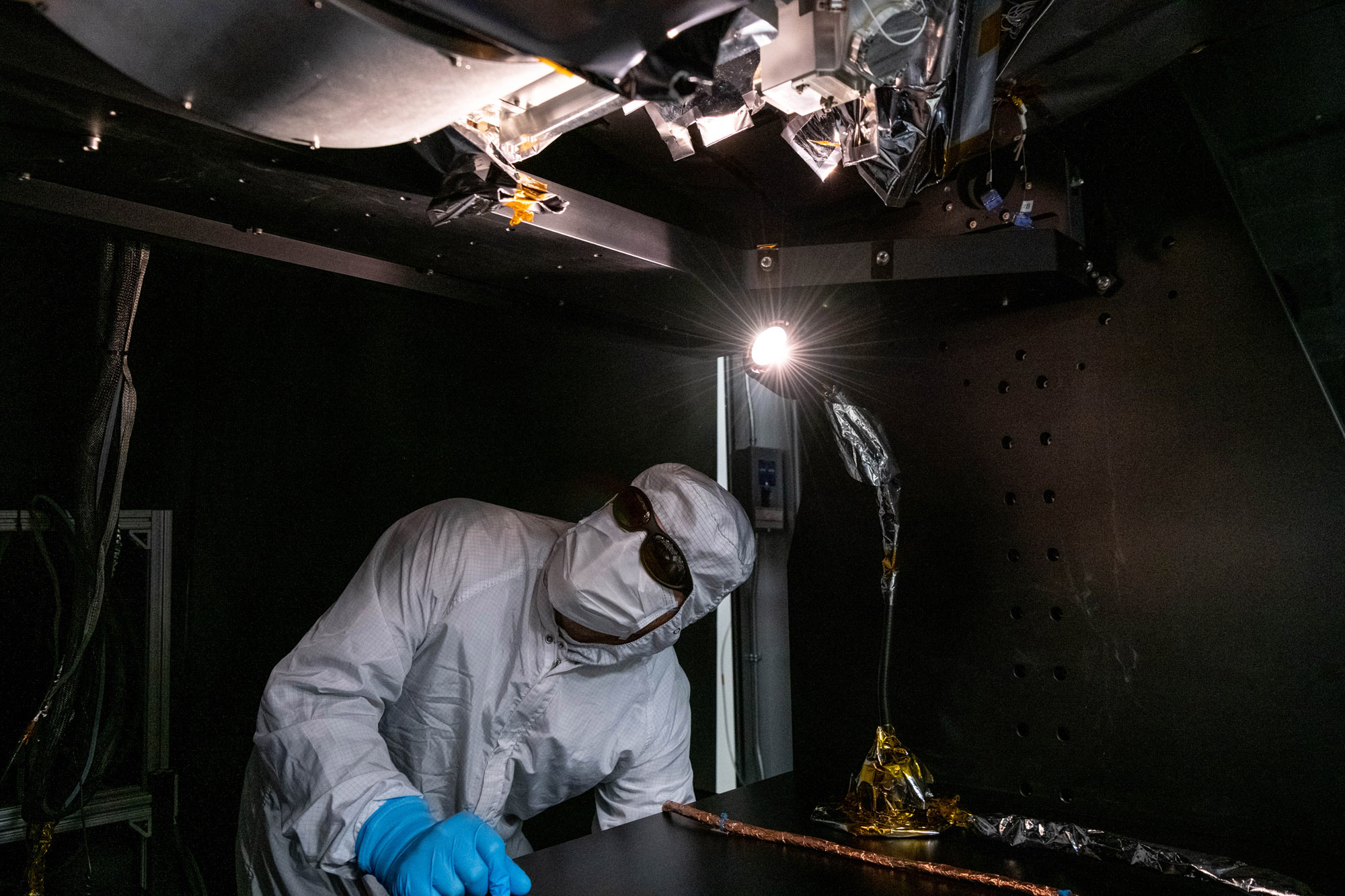
Manufacturing engineer, Roman Nilov, supervises the integration of the Short Wave Infrared (SWIR) Pulse Calibration Assembly (SPCA) fold mirror assembly to the Ocean Color Instrument. Credit: Mellos, Katherine
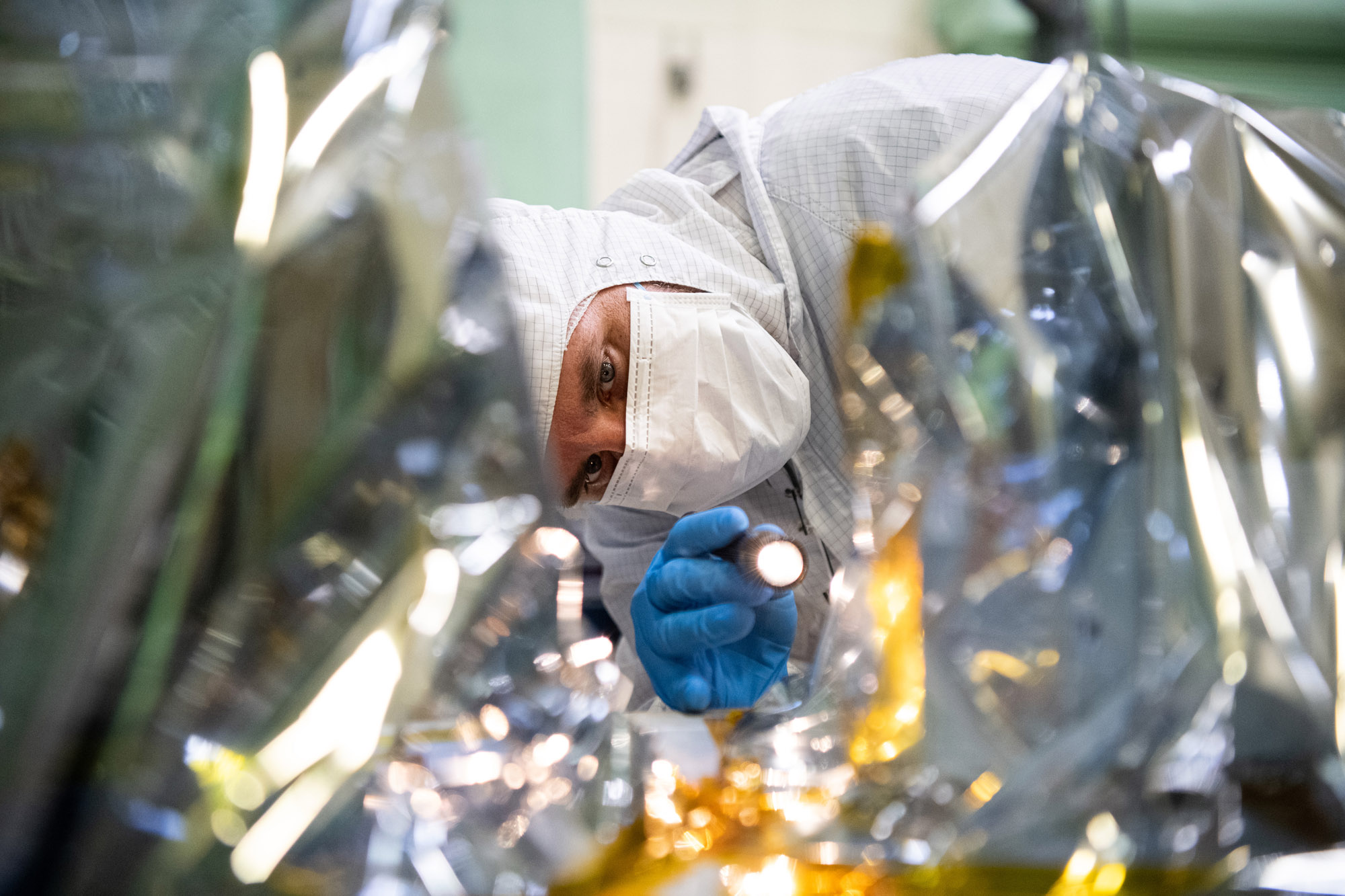
Inspecting Ocean Color Instrument Star Tracker command and data handling unit. Credit: Henry, Dennis (Denny)
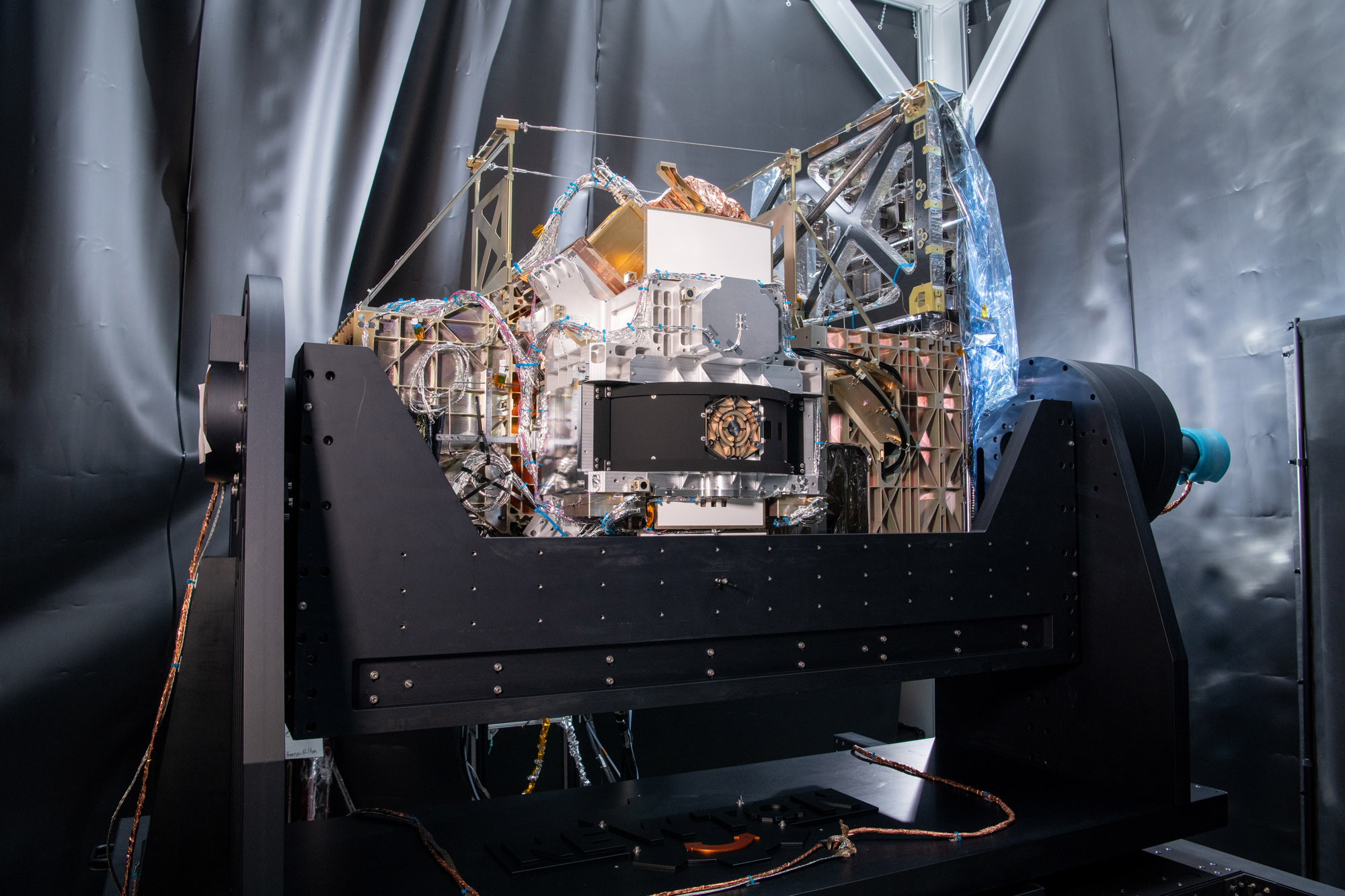
The Flight Ocean Color Instrument is installed onto the Ground Support Equipment Application for Tilt or Rotation (GAToR) Credit: Stover, Desiree
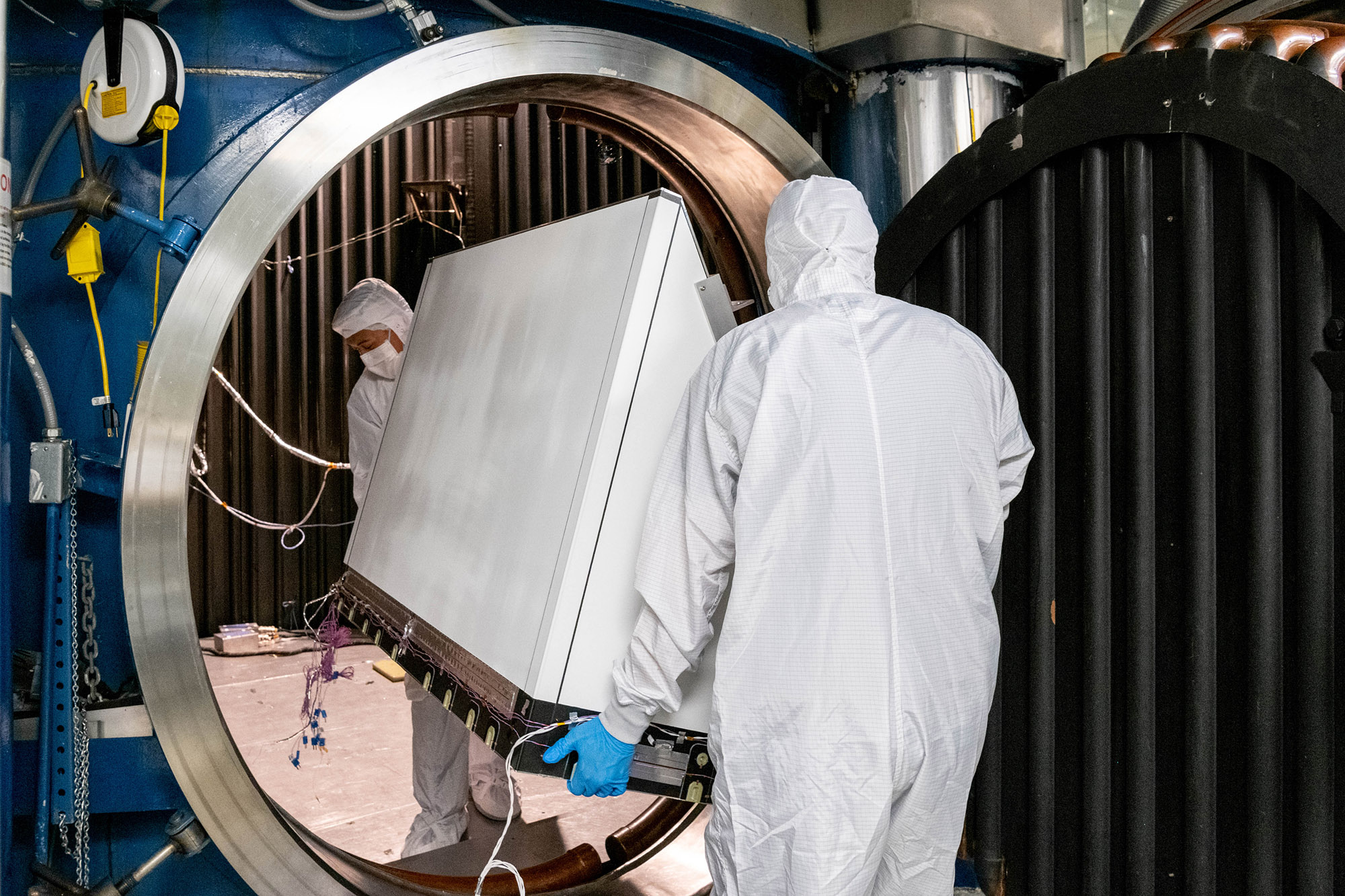
Mechanical Technicians Daniel Dizon and Joseph Eddy transport the Ocean Color Instrument Earth Shade into the thermal vacuum chamber. Credit: Mellos, Katherine
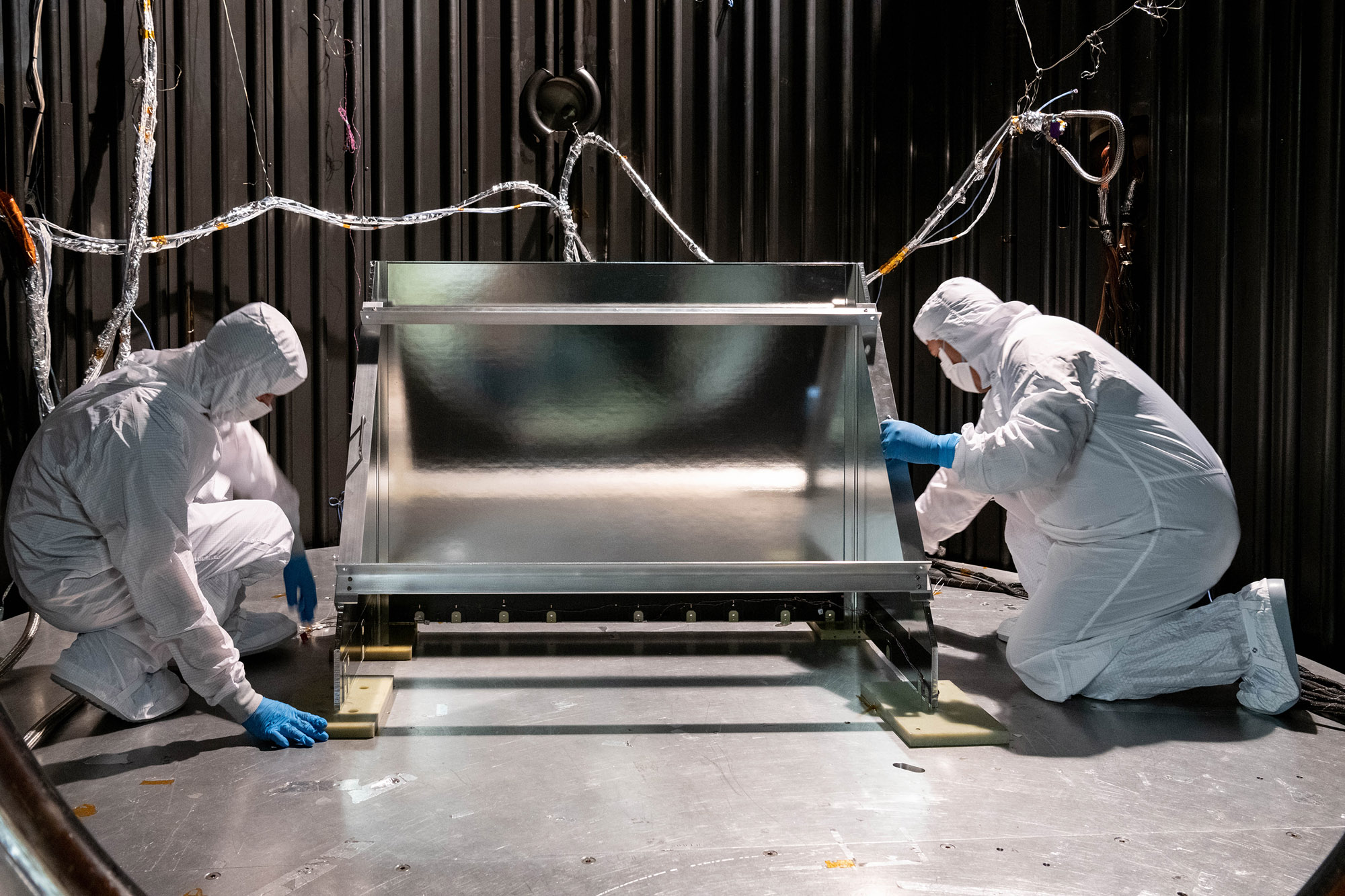
Mechanical Technicians Daniel Dizon and Joseph Eddy install the Ocean Color Instrument Earth Shade into the thermal vacuum chamber. Credit: Mellos, Katherine
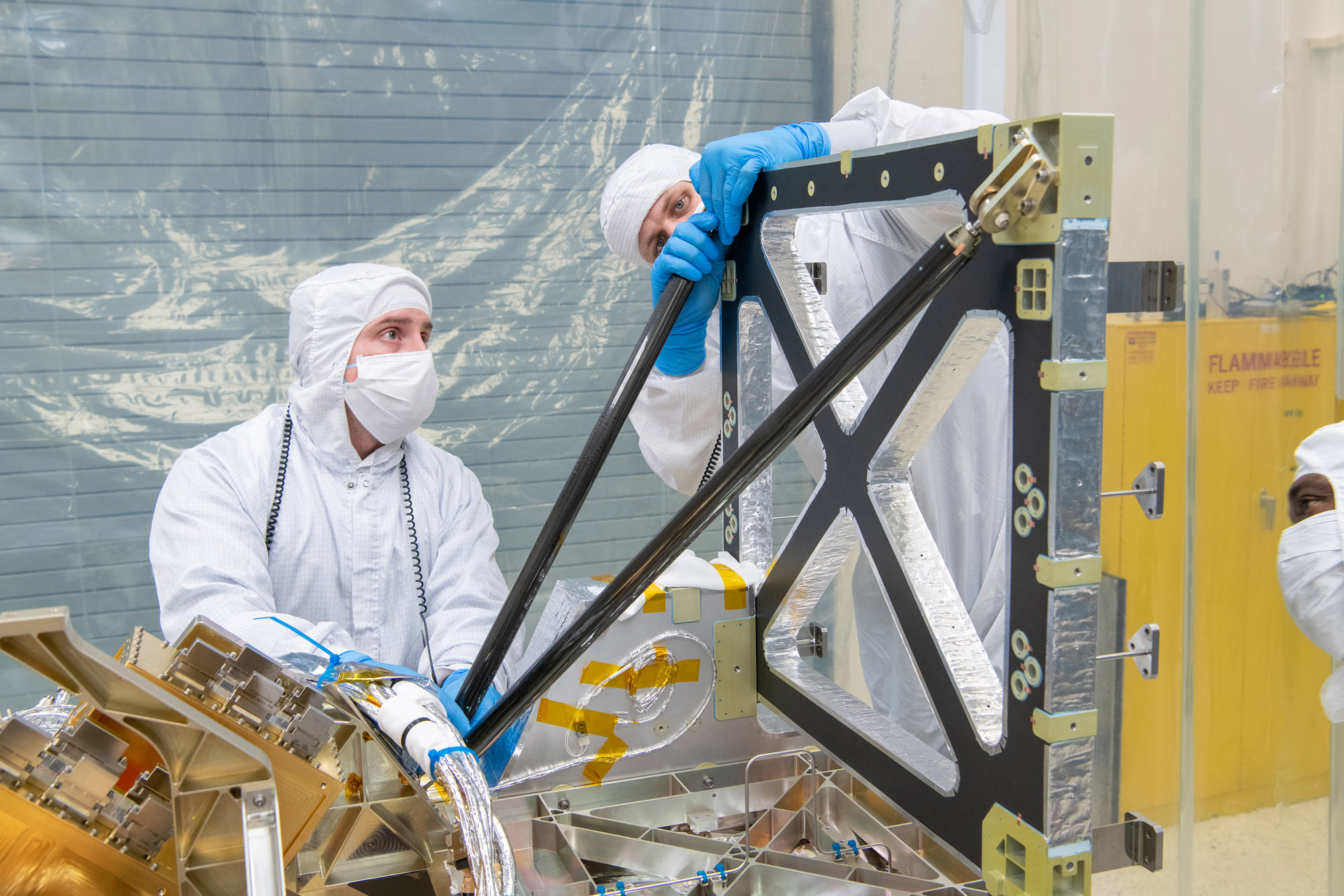
Mechanical technician Joseph Eddy and mechcanical engineer Peter Steigner install the Ocean Color Instrument Radiator Support Structure (RSS) struts to the Instrument Deck Structure (IDS). Credit: Stover, Desiree
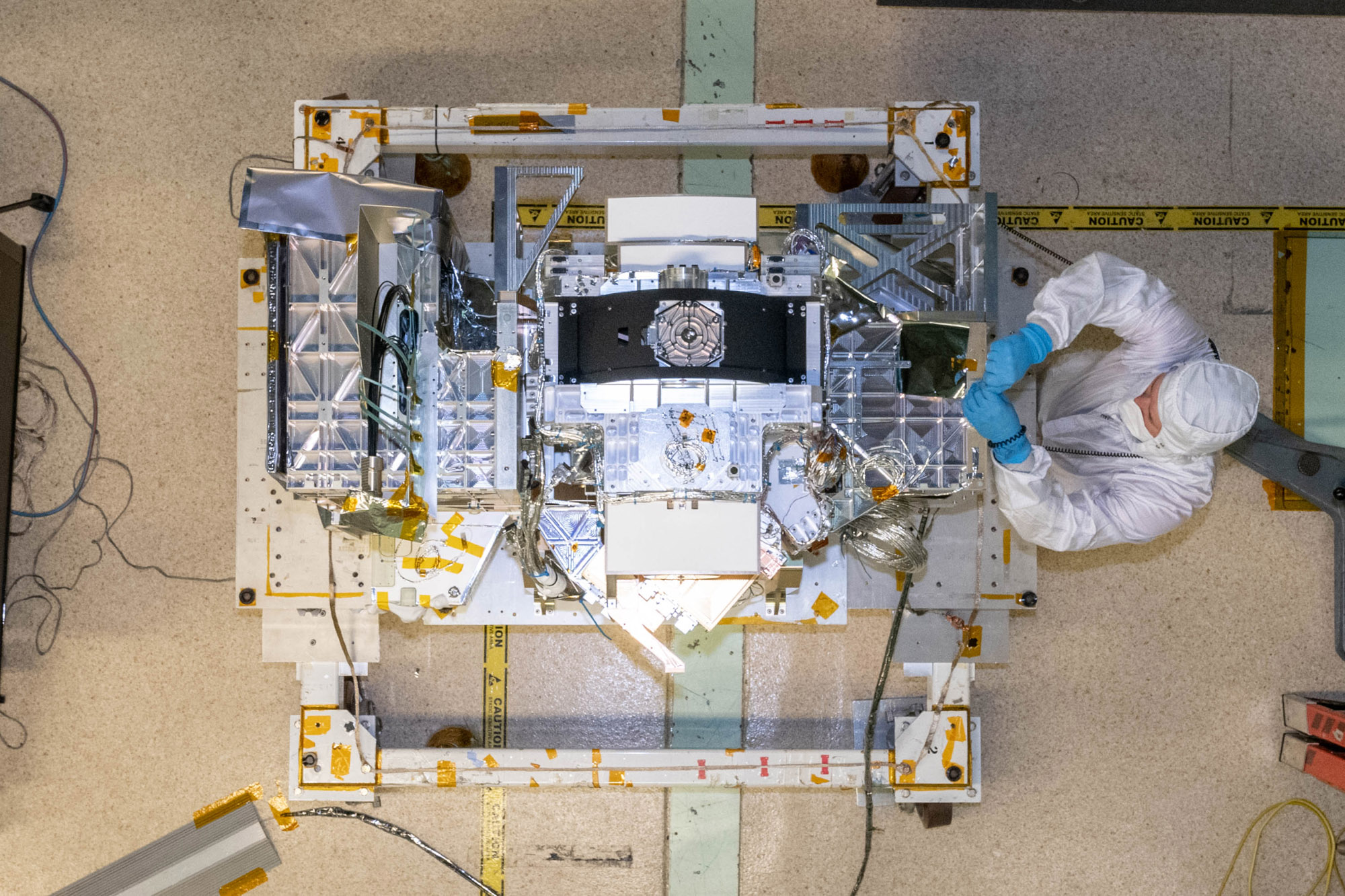
Mechanical Technician, John Poulsen, installs flight hardware during the Ocean Color Instrument post Optical Module (OM) integration to the Flight Instrument Deck Structure (IDS). Credit: Mellos, Katherine
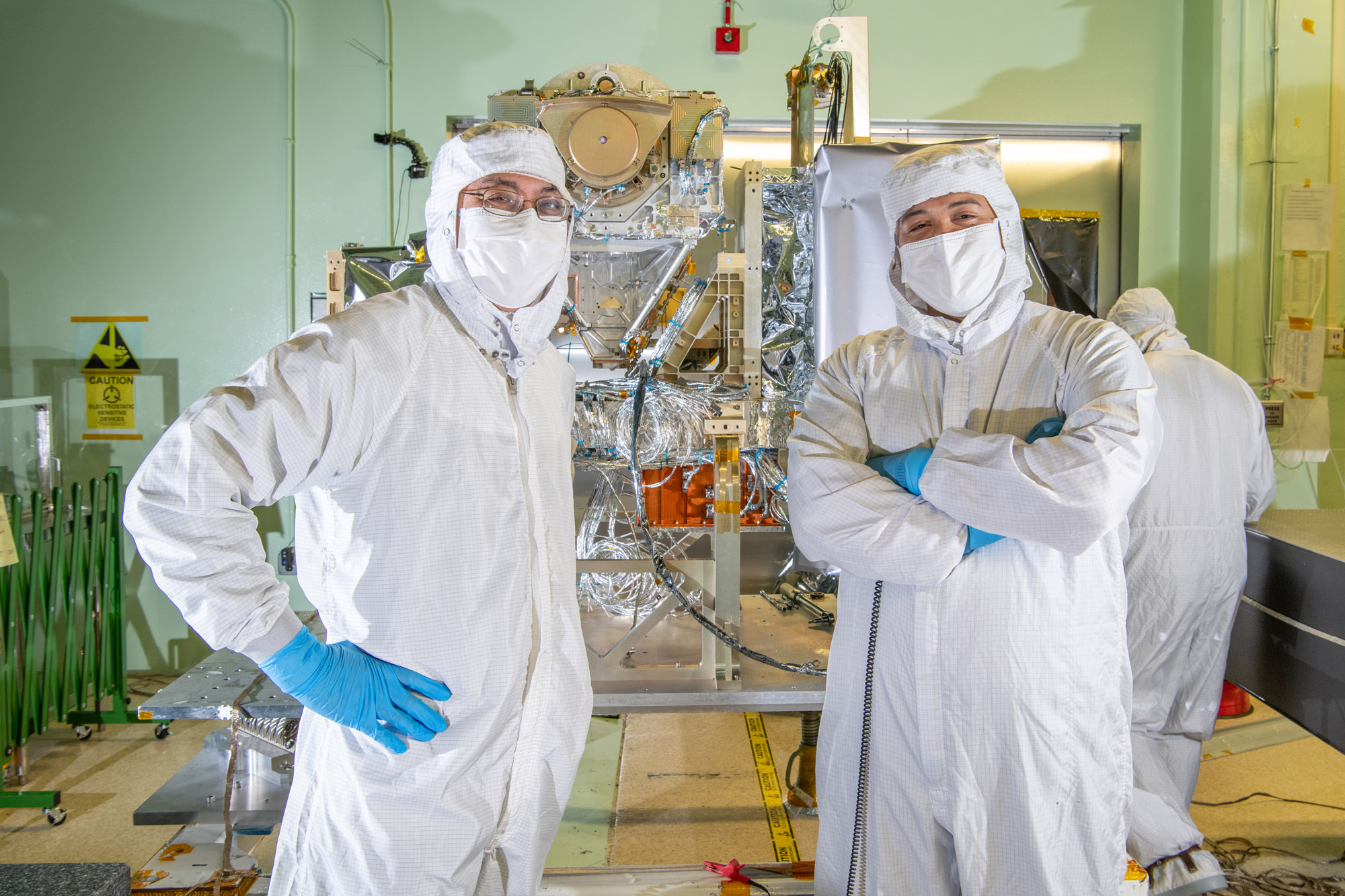
Mechanical Engineer Paul Dizon and Mechanical Technician Daniel Dizon with the Ocean Color Instrument. Credit: Stover, Desiree
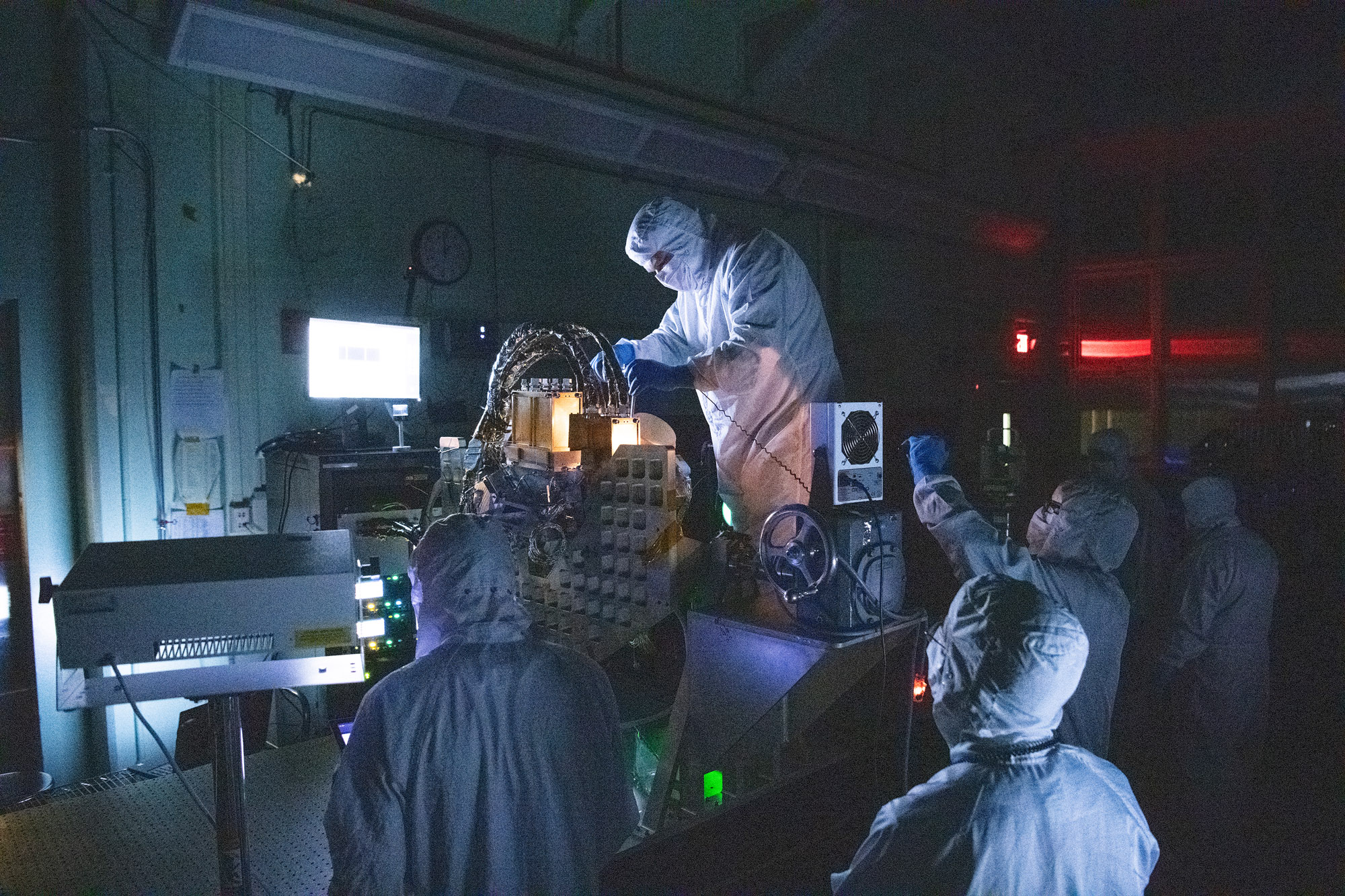
Mechanical technician Andrew Scharmann aligns the Ocean Color Instrument Focal Plane Assemblies (FPAs). Credit: Stover, Desiree
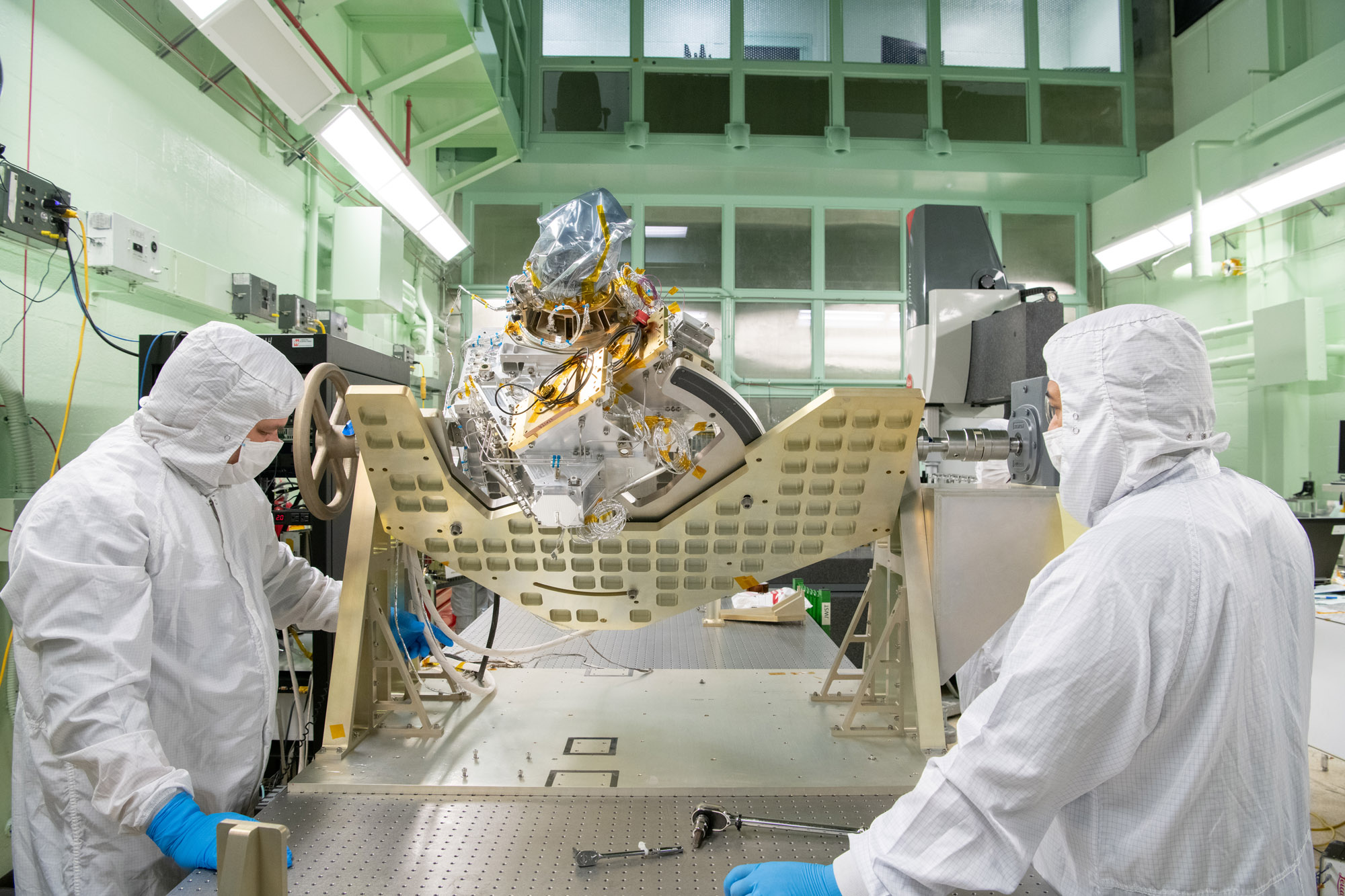
Mechanical technician Andrew Scharmann stabilizes harnesses while Daniel Dizon rotates the Ocean Color Instrument Optical Module for additional integration activities as mechanical engineer Michael Mulloney observes. Credit: Stover, Desiree
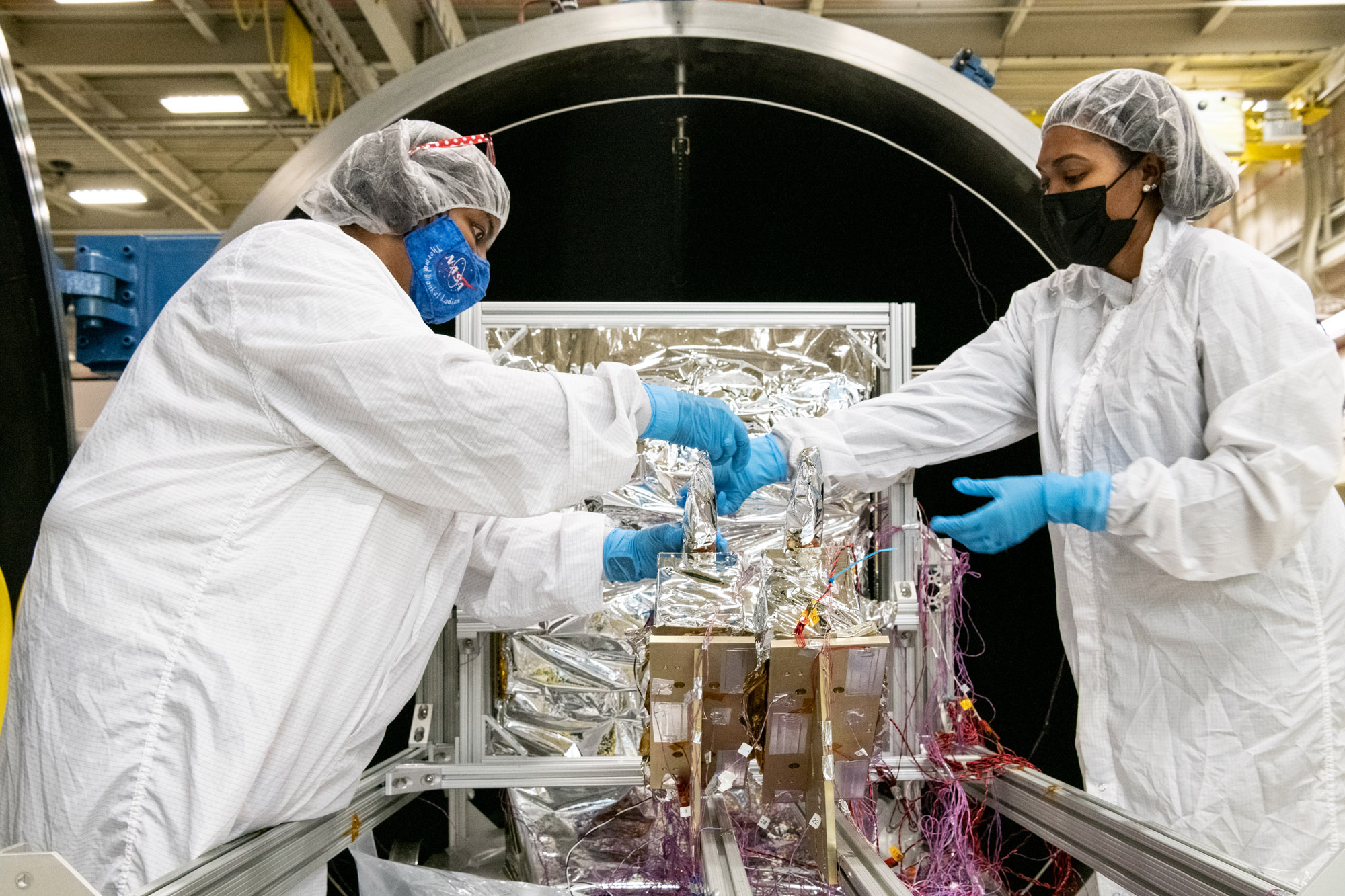
Paula Cain and Aldine Joseph-Pierre apply thermal blanketing to the Ocean Color Instrument Loop Heat Pipes (LHP) prior to thermal vacuum testing. Credit: Mellos, Katherine
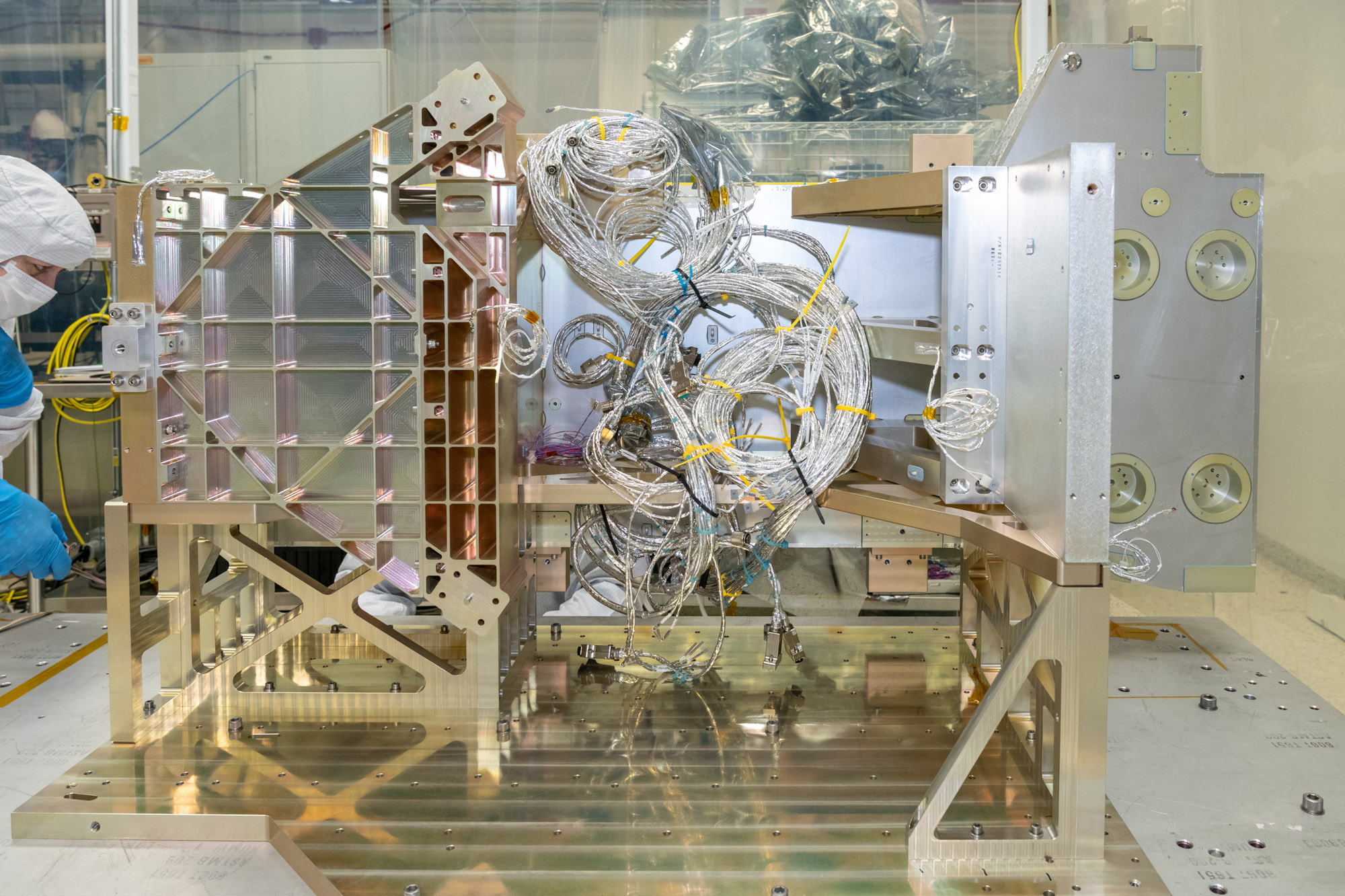
Electrical harnesses are installed and prepped for electronic box integrations on the Ocean Color Instrument's Instrument Deck Structure (IDS). Credit: Mellos, Katherine
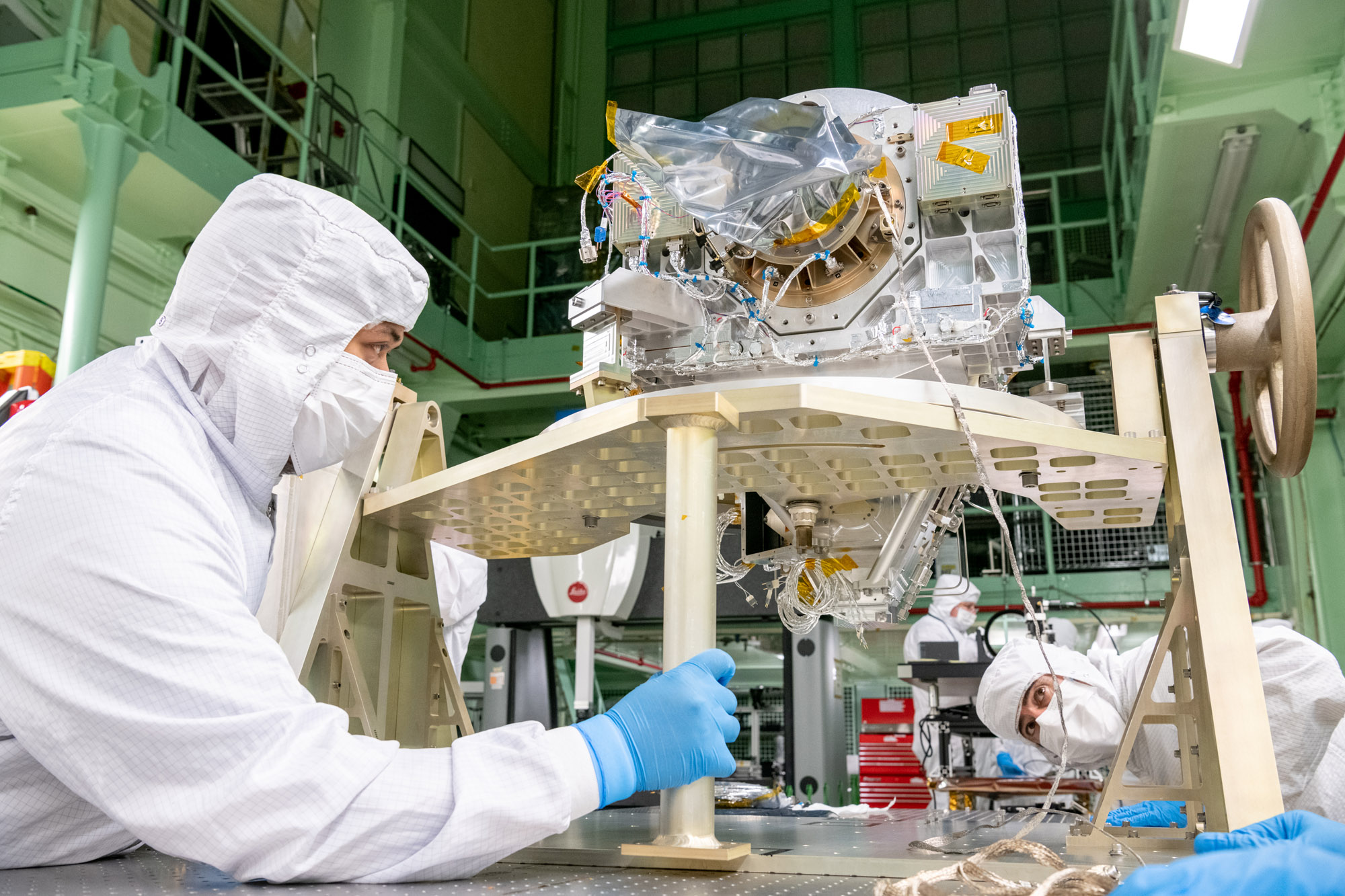
Mechanical technician Daniel Dizon stabilizes the Ocean Color Instrument Optical Module after a rotation for additional integration activities as mechanical engineer Michael Mulloney observes. Credit: Mellos, Katherine
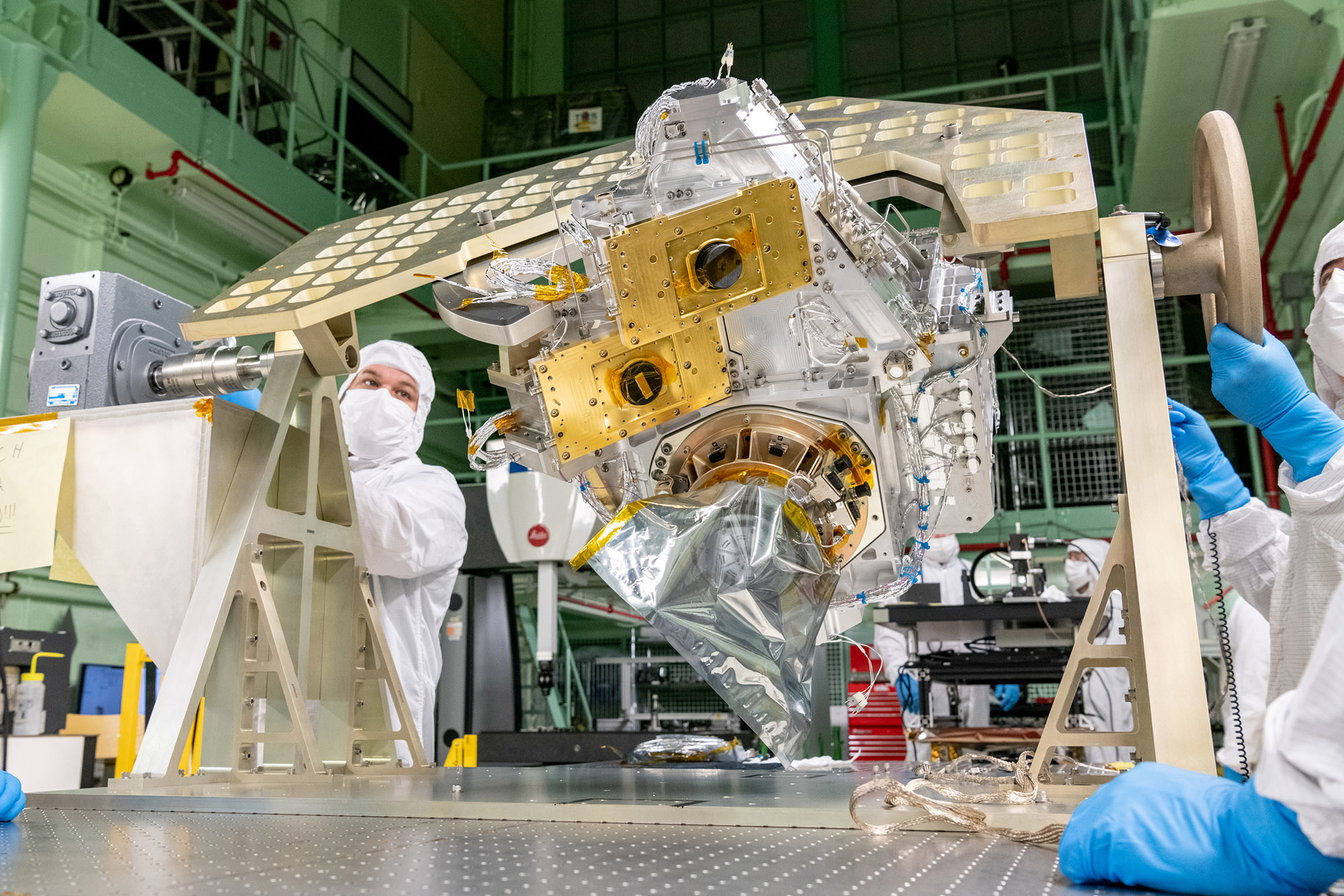
Mechanical technicians reorient the Ocean Color Instrument Optical Module on the rotation fixture for additional hardware integration. Credit: Mellos, Katherine
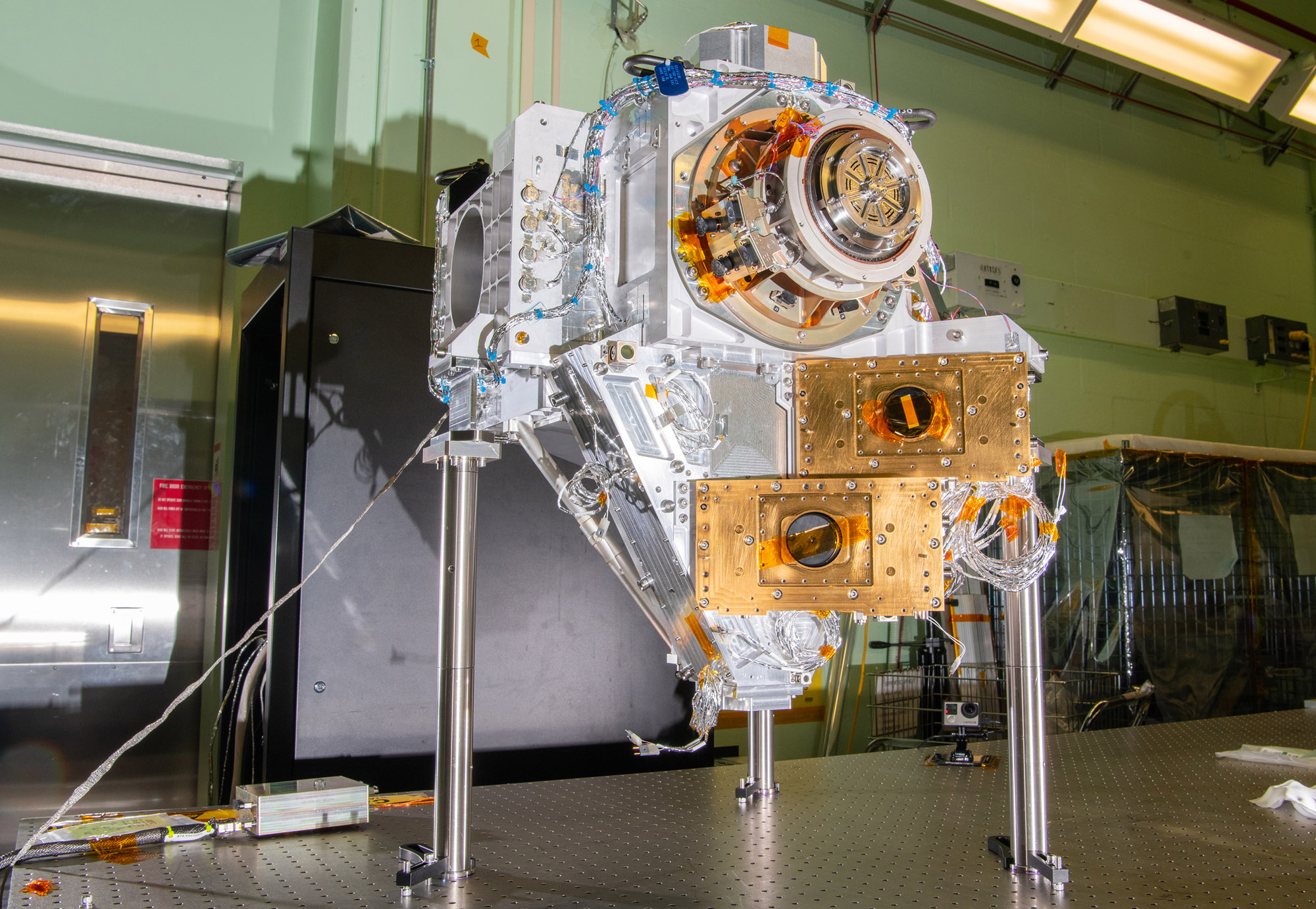
The Ocean Color Instrument Optical Module (OM) at Goddard Space Flight Center. Credit: Stover, Desiree
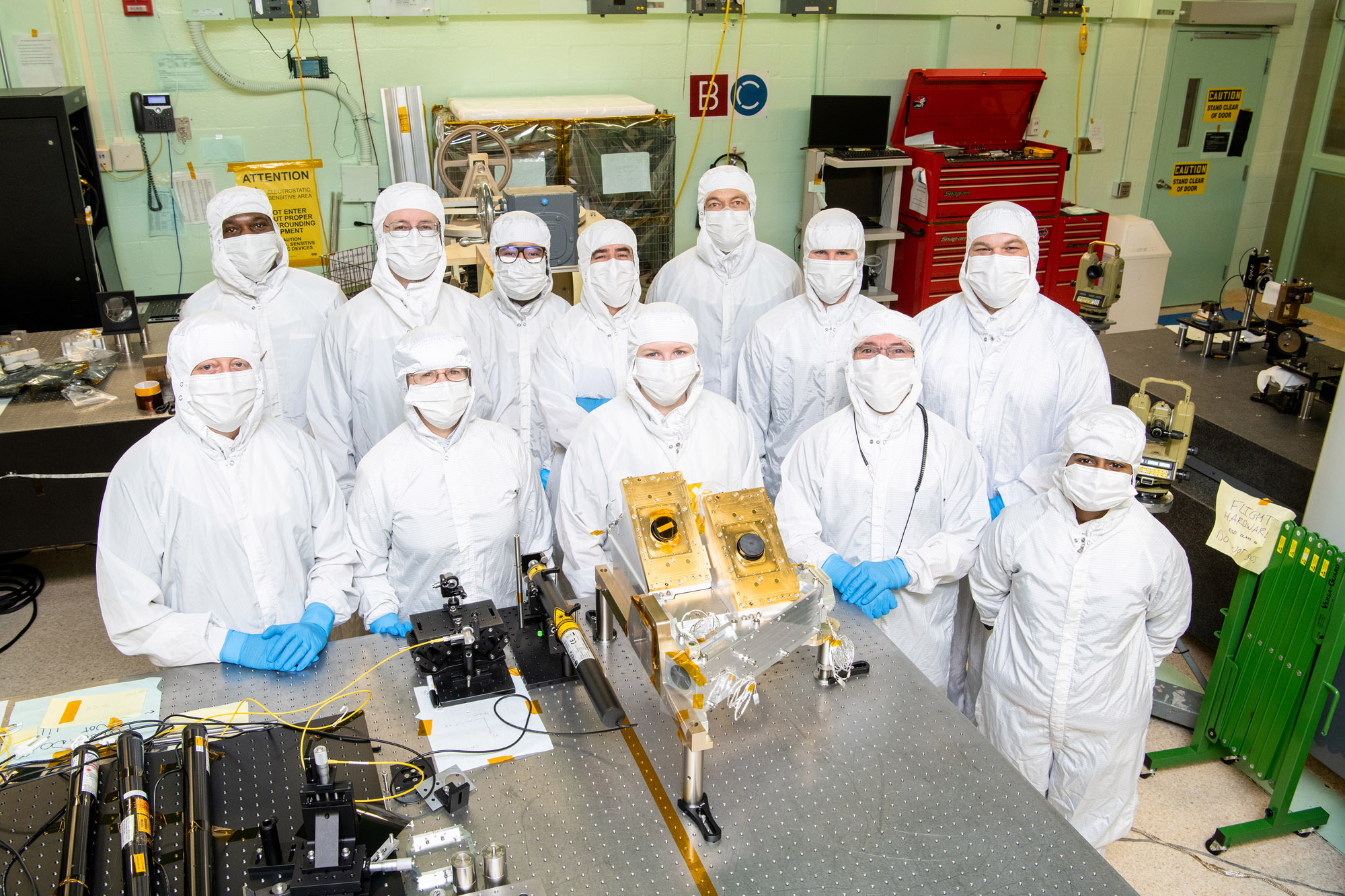
Members of the Ocean Color Instrument Main Optics Sub Bench (MOSB) integration team pose with the hardware prior to its integration onto the Main Optics Bench (MOB). Credit: Stover, Desiree
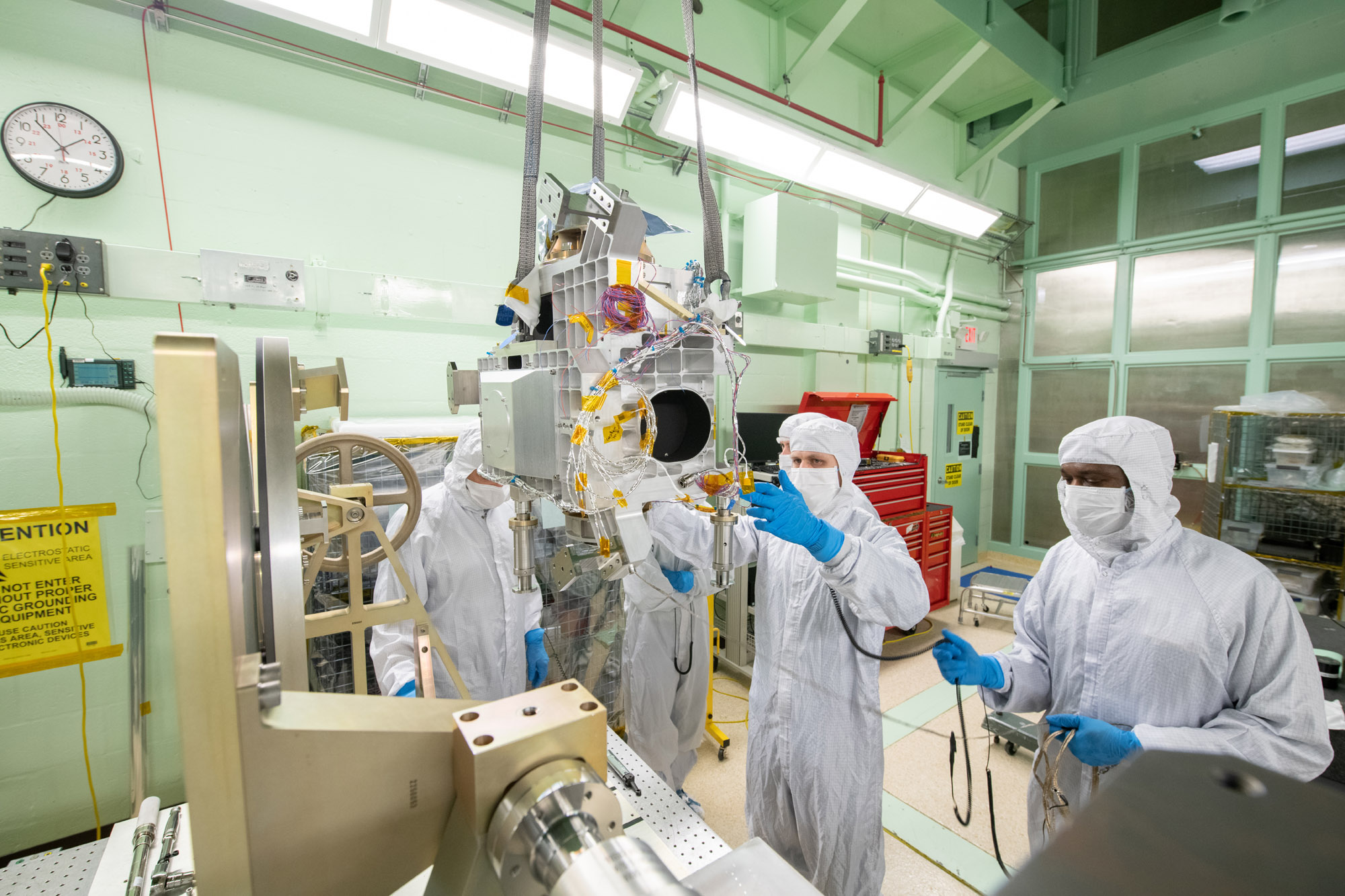
Mechanical technician Joseph Eddy guides the Ocean Color Instrument Main Optics Bench (MOB) to the LISARD turnover fixture overseen by quality engineer George Brooks. Credit: Stover, Desiree
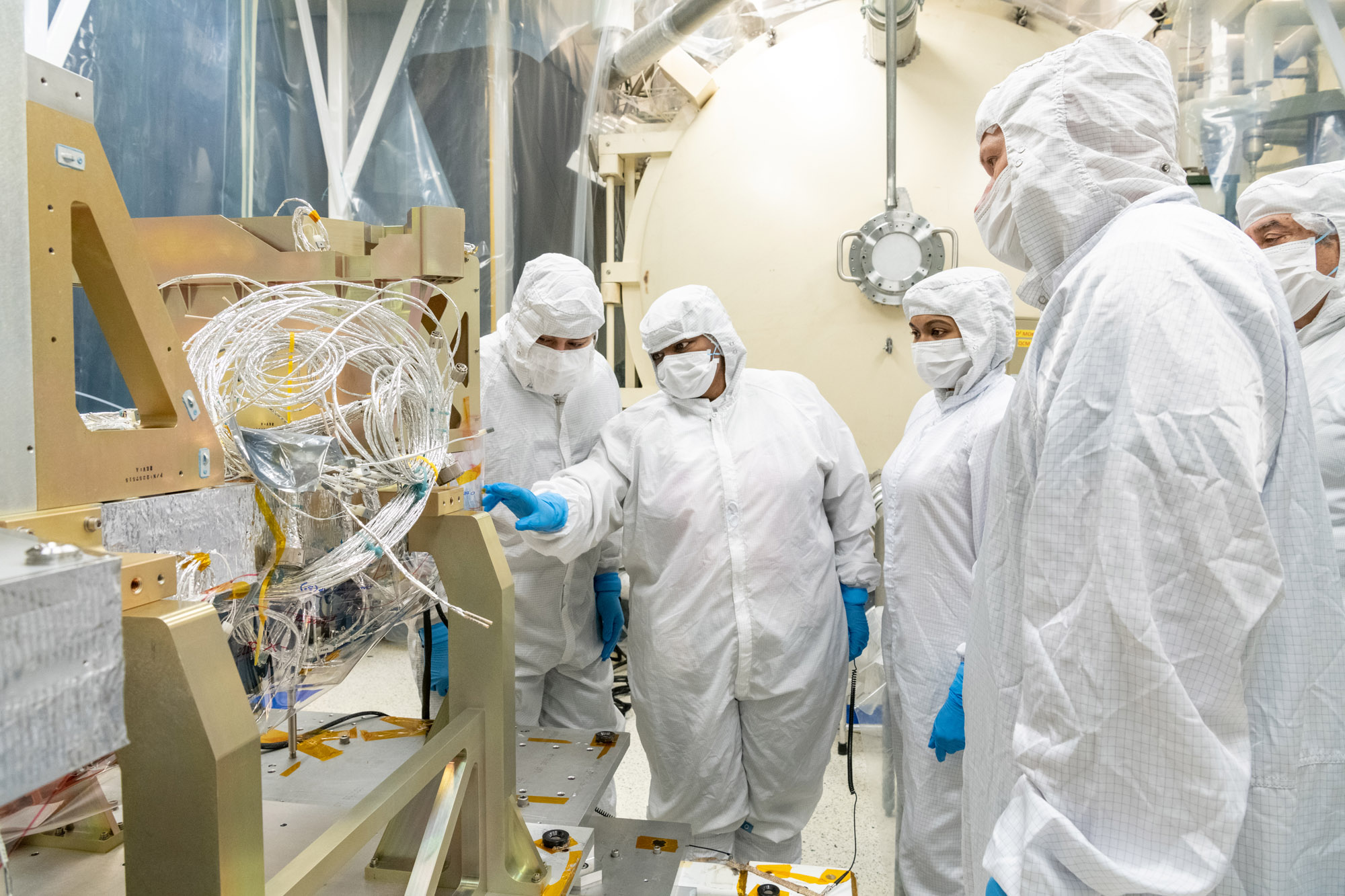
Blanket technicians discuss thermal templates on the Ocean Color Instrument Instrument Deck Structure (IDS) at Goddard Space Flight Center. Credit: Mellos, Katherine
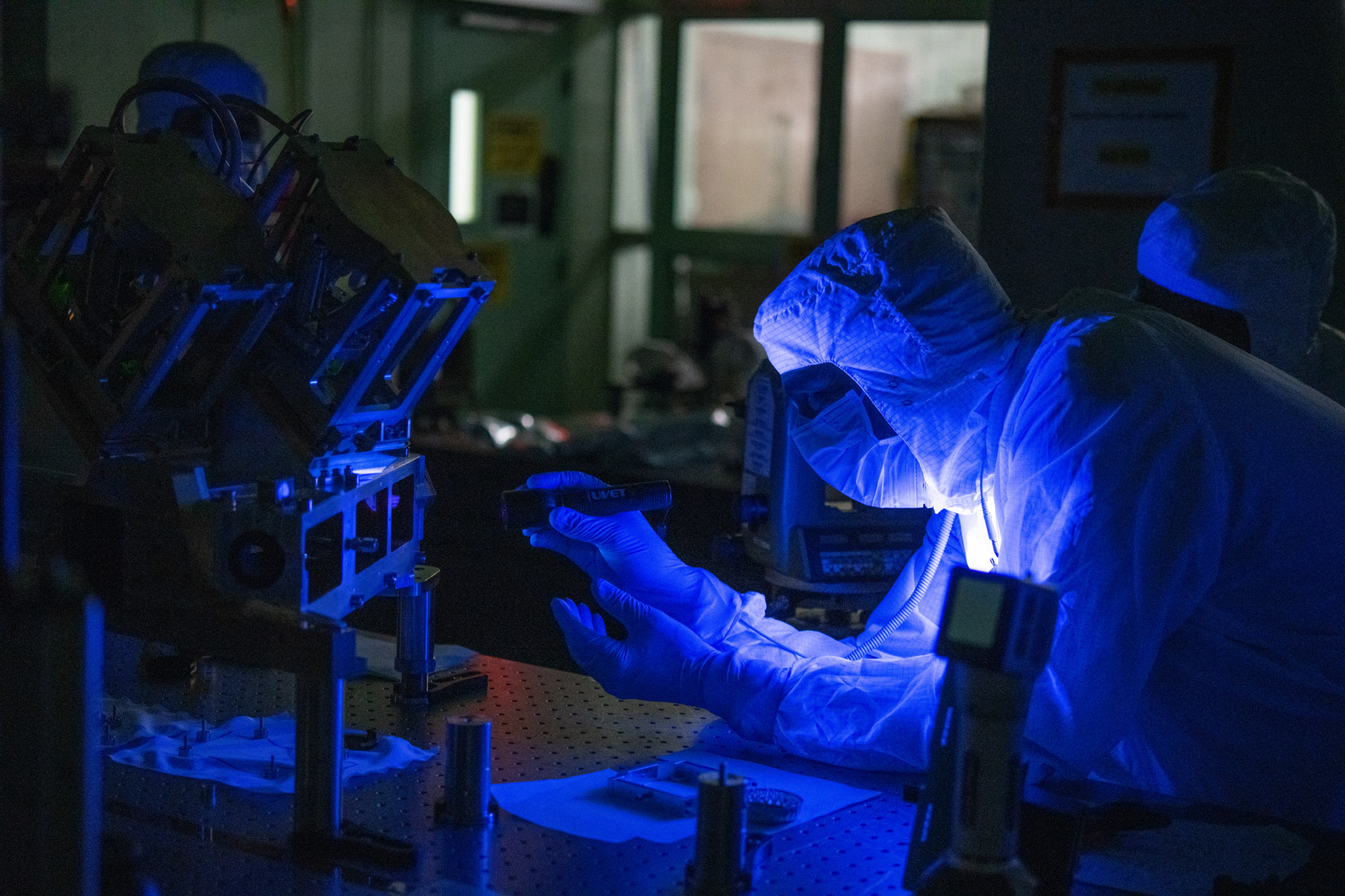
Optical engineer, David Kubalak, inspects the Ocean Color Instrument Main Optics Sub Bench (MOSB) interior optics prior to covers are installed. Credit: Stover, Desiree
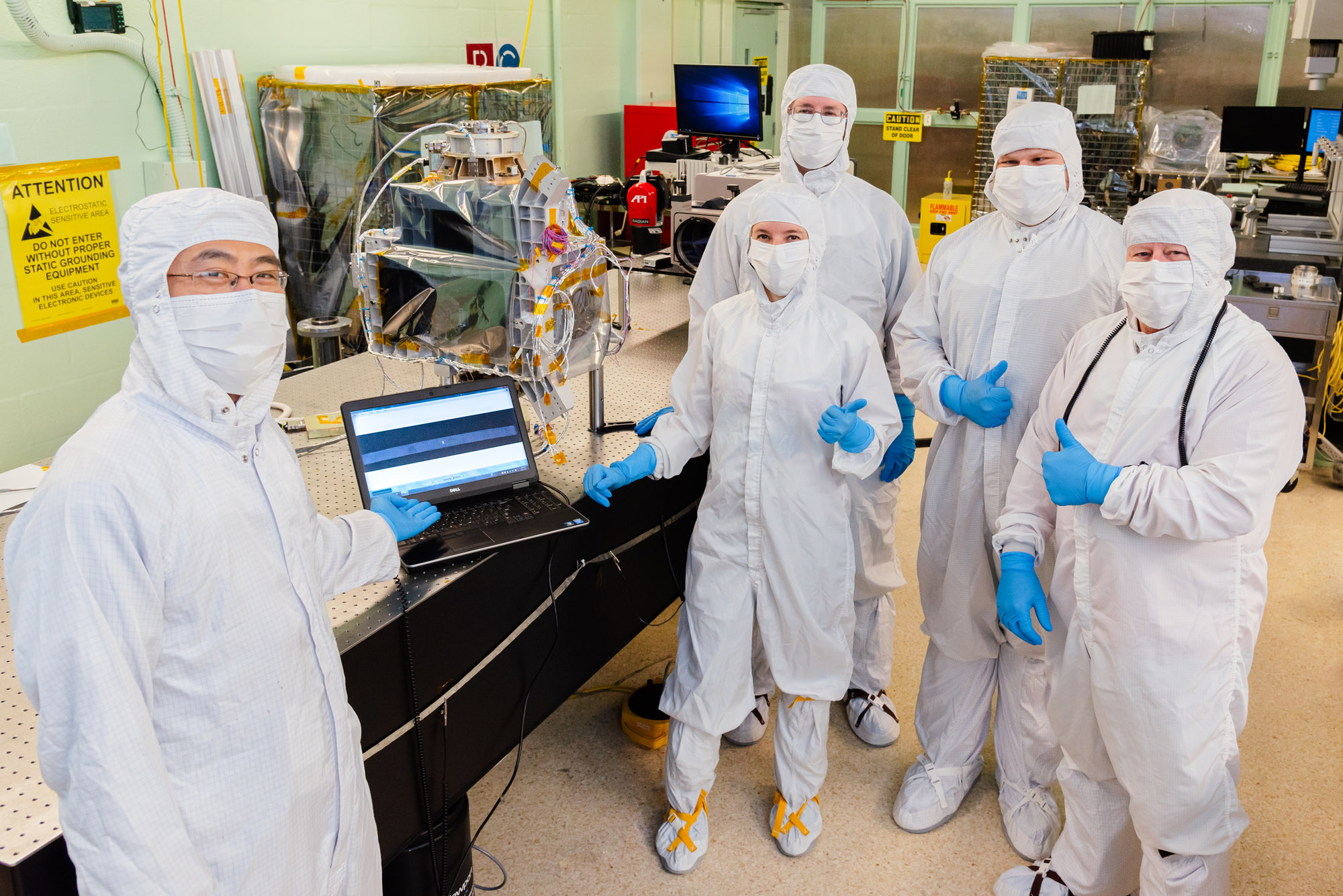
The Ocean Color Instrument Optical Alignment team poses for a group photo after successful alignment of the flight Main Optics Bench and Rotating Telescope assembly. Credit: Guinto, Michael
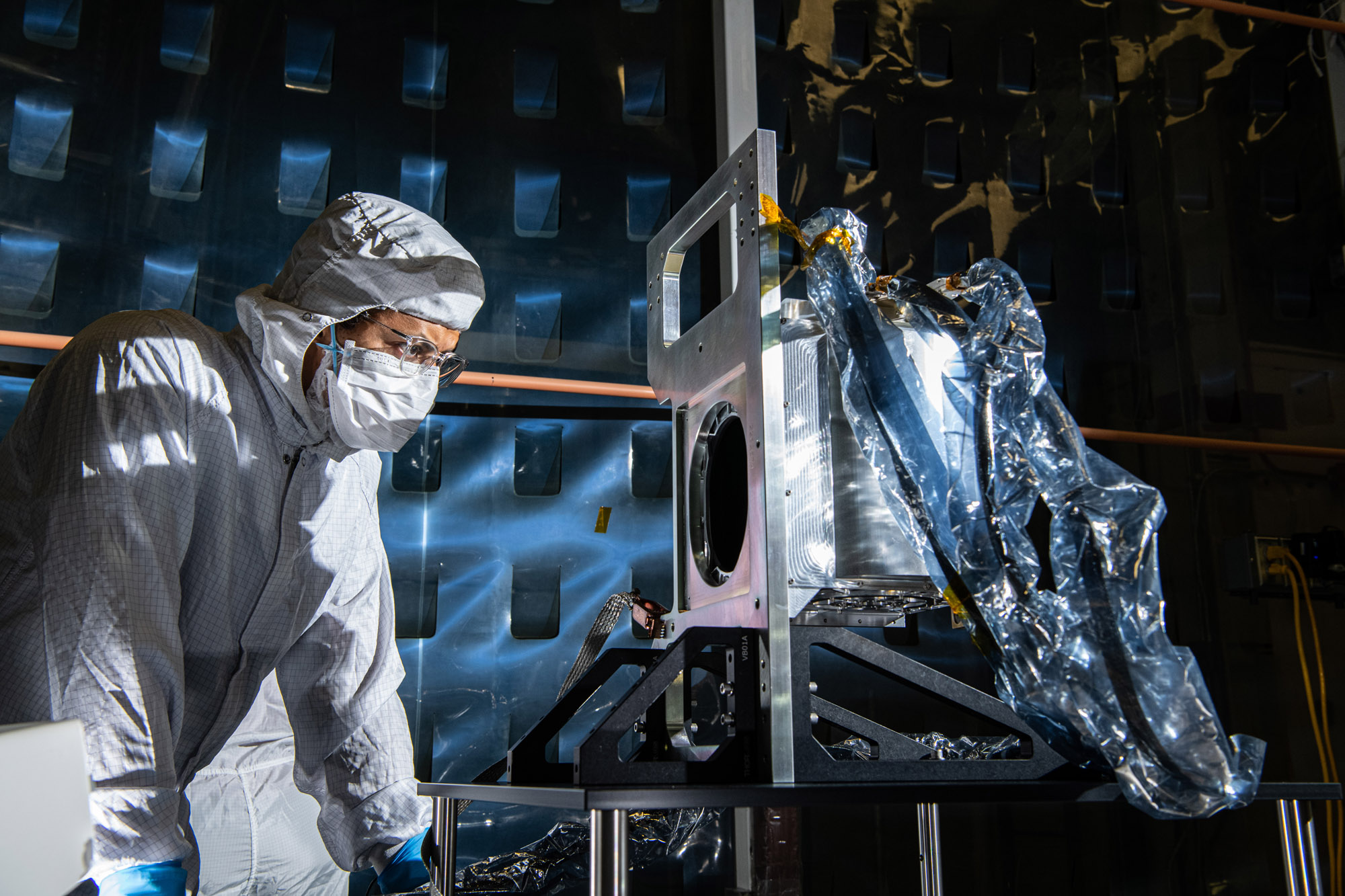
Aerospace Engineer, Daniel Senai, inspects the completed Ocean Color Instrument Solar Calibration Assembly (SCA) Life Test Unit mechanism. Credit: Henry, Dennis (Denny)
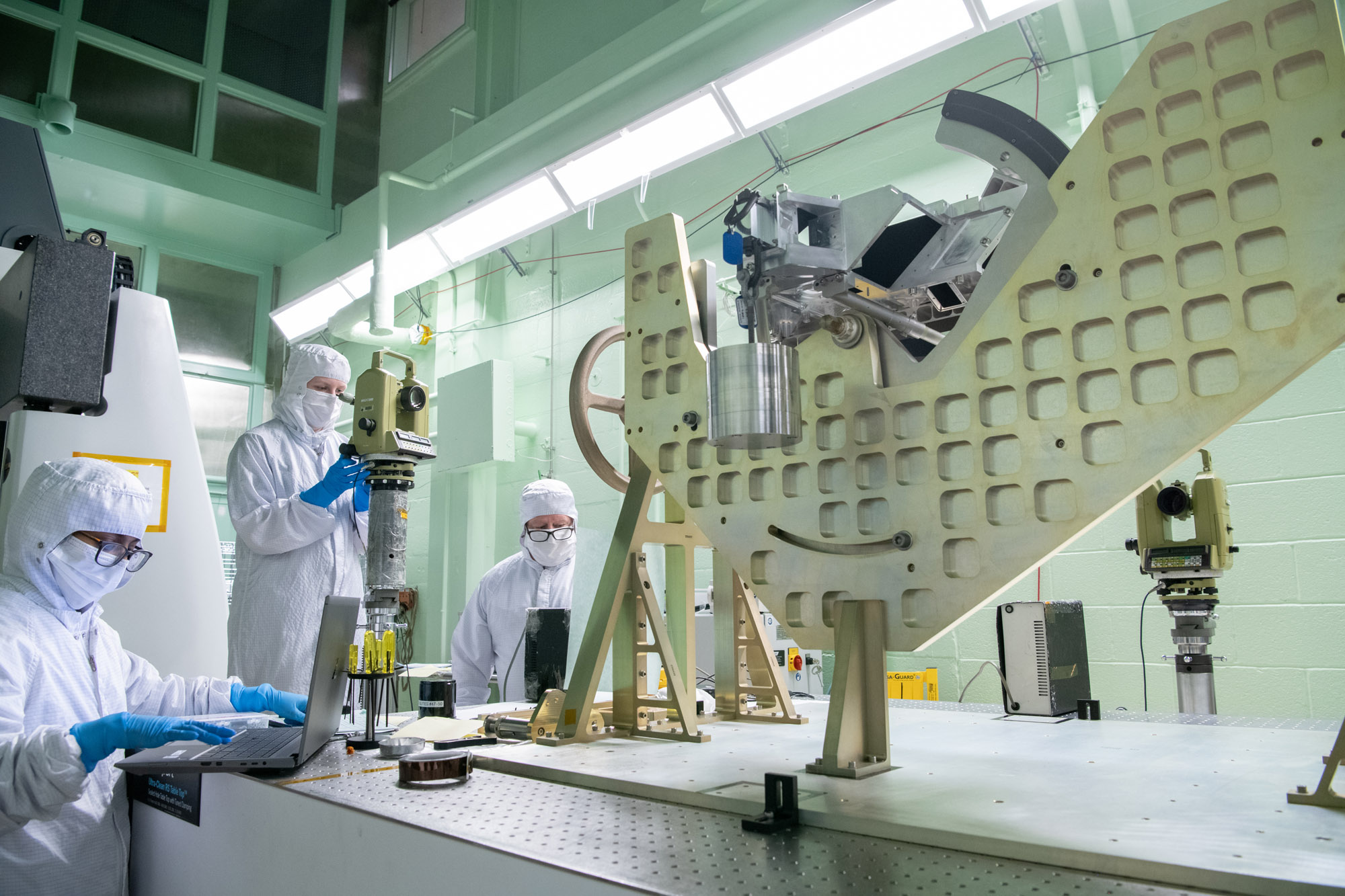
The optical alignment team performs gravity sag measurements on the Ocean Color Instrument Main Optics Sub Bench (MOSB). Credit: Stover, Desiree
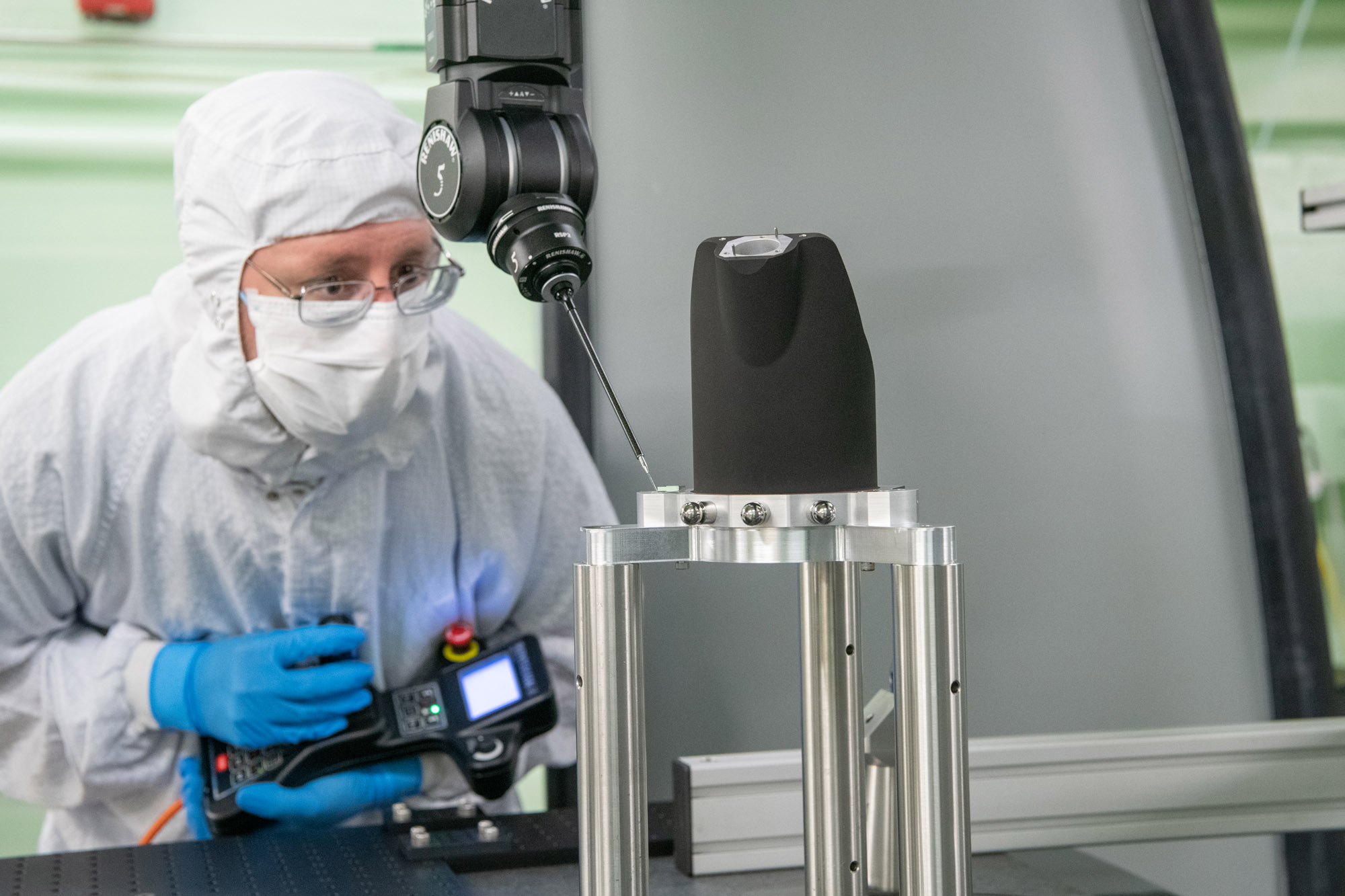
Optical technician Timothy Hahn measures the Ocean Color Instrument Collimator Slit Bracket on the Coordinate Measurement Machine (CMM). Credit: Stover, Desiree
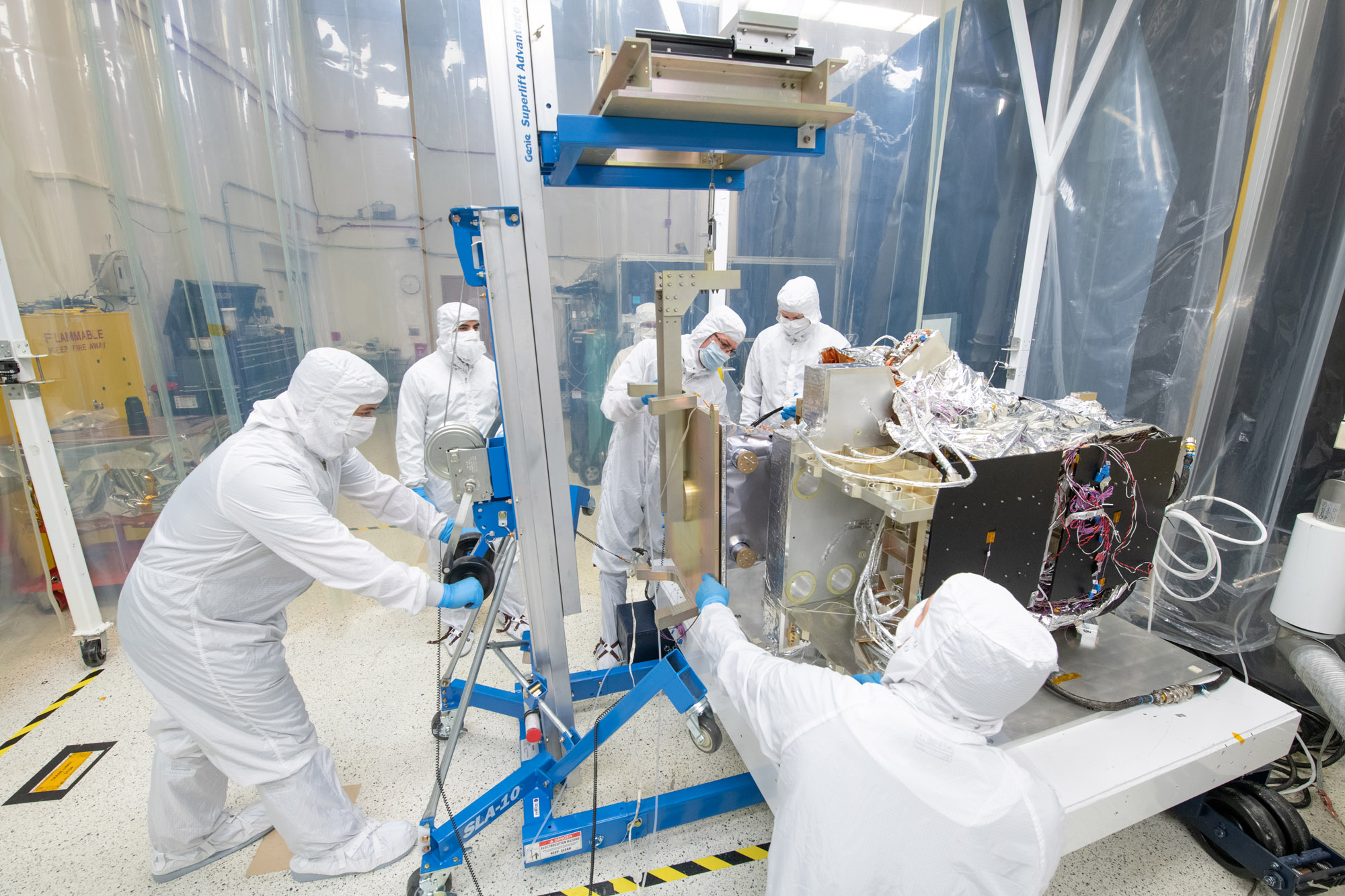
Technicians mechanically integrate the Shortwave Infrared (SWIR) Detector Assembly into the Ocean Color Instrument Engineering Test Unit. Credit: Stover, Desiree
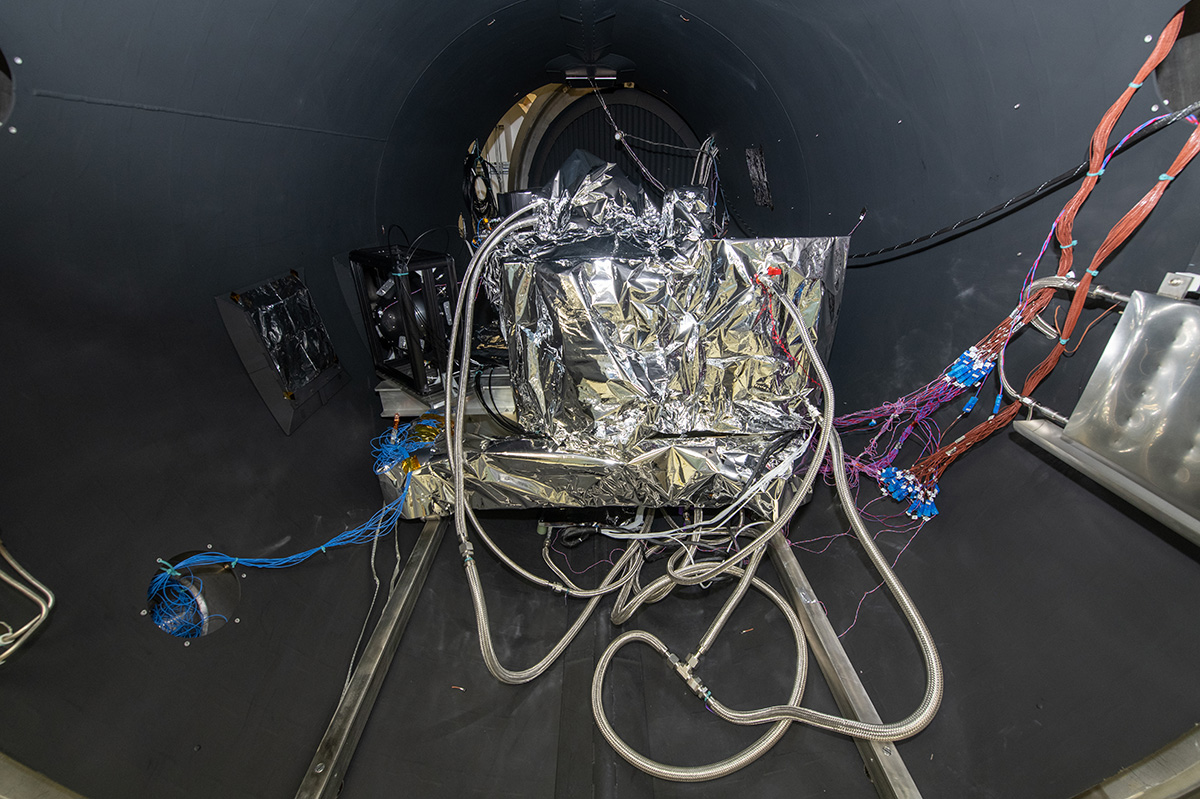
The OCI ETU rolls into the TVAC chamber. Lines are for electrical connections, temperature sensors, accelerometers, and liquid nitrogen, whic is used for cooling down the radiators.
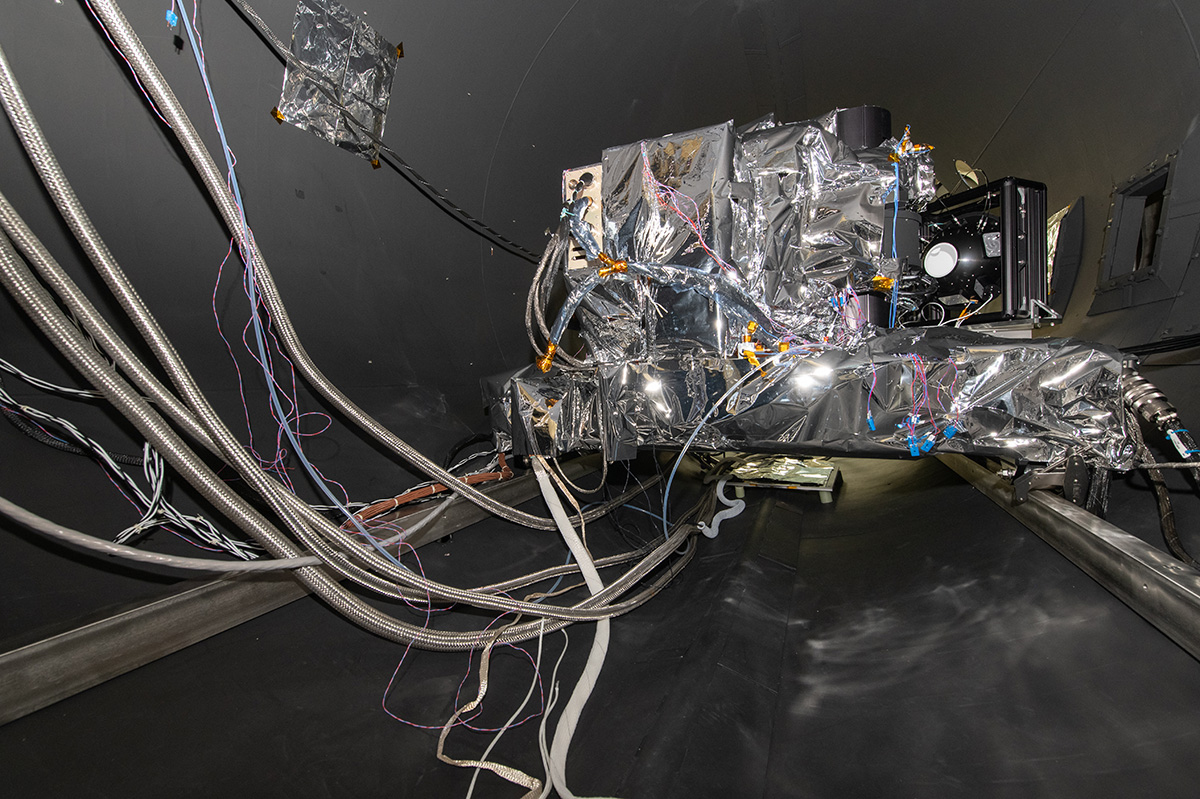
The OCI ETU rolls into the TVAC chamber. Lines are for electrical connections, temperature sensors, accelerometers, and liquid nitrogen, whic is used for cooling down the radiators.
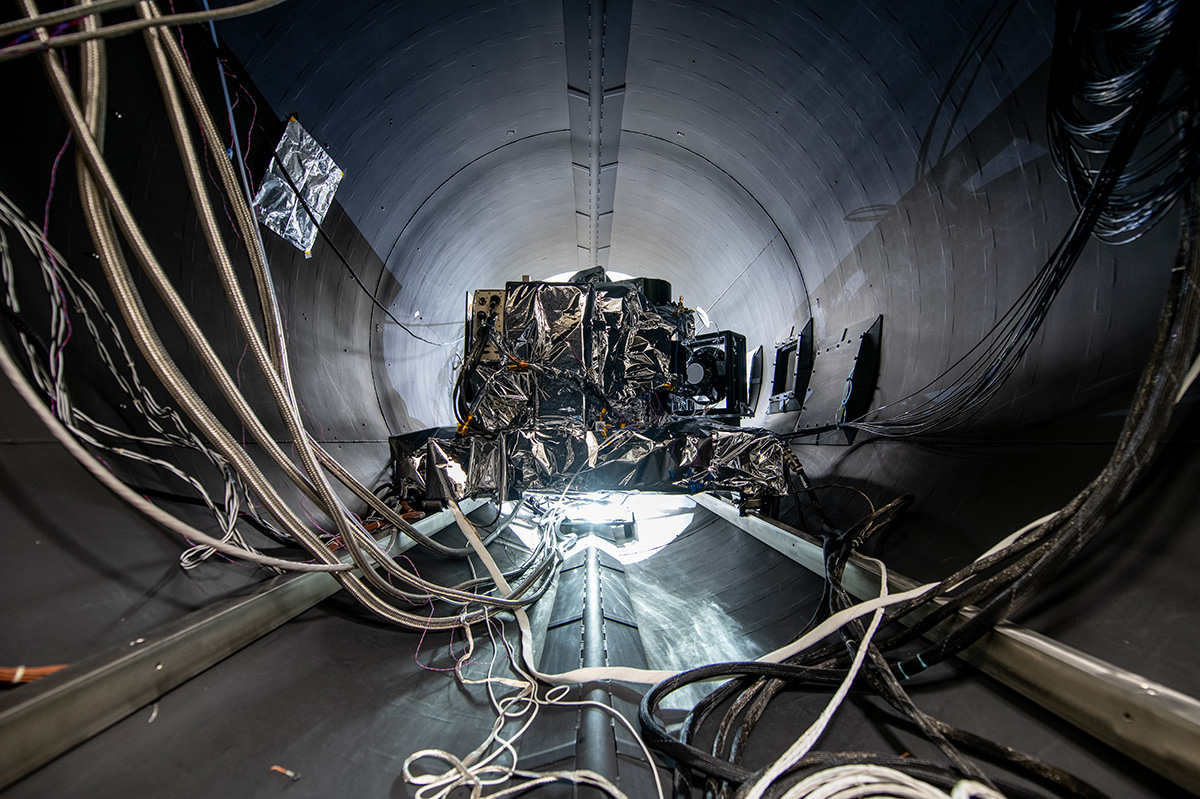
The OCI ETU rolls into the TVAC chamber. Lines are for electrical connections, temperature sensors, accelerometers, and liquid nitrogen, whic is used for cooling down the radiators.
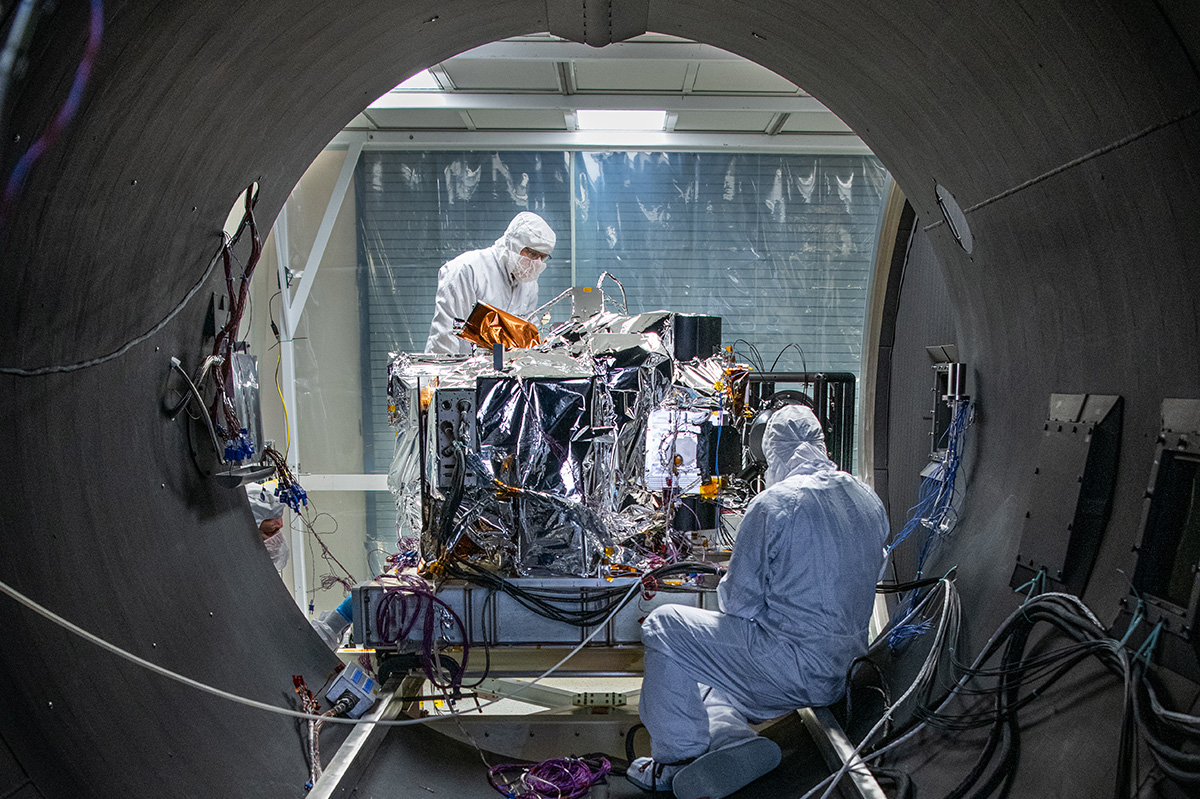
Preparing the OCI ETU and TVAC Cart to enter the TVAC chamber.
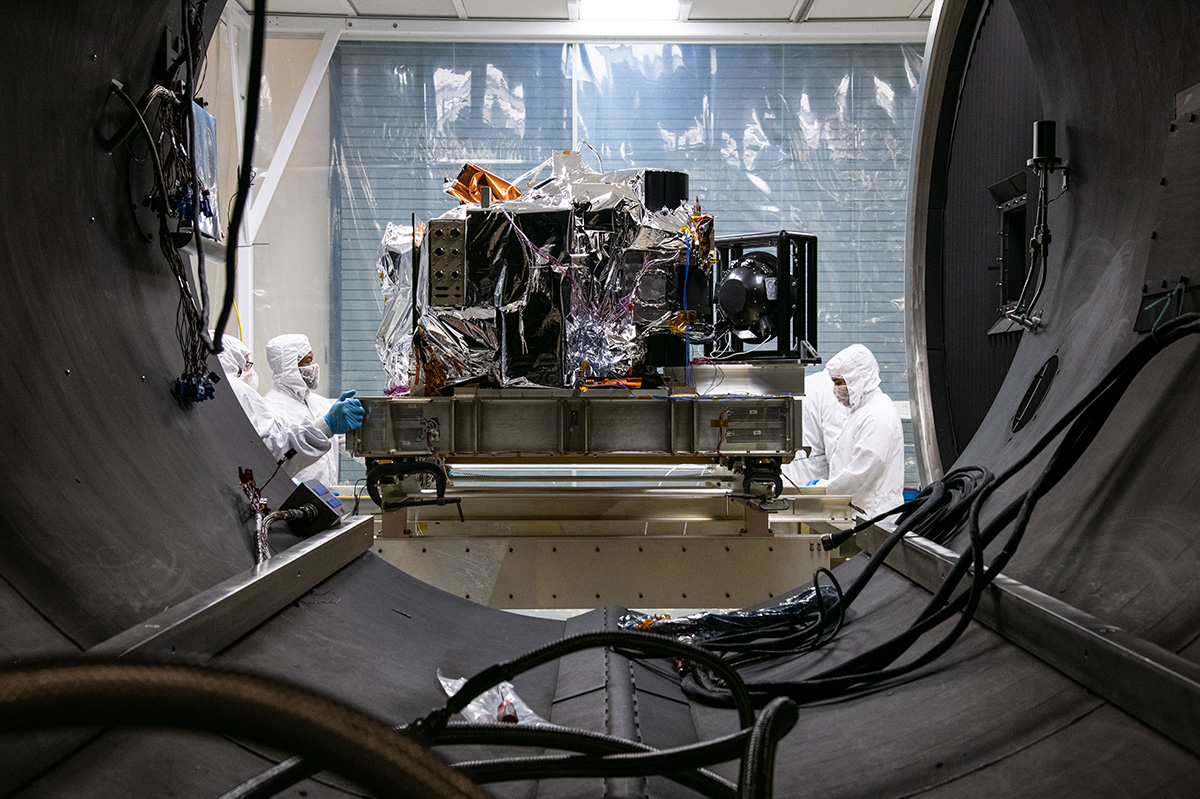
Preparing the OCI ETU and TVAC Cart to enter the TVAC chamber.
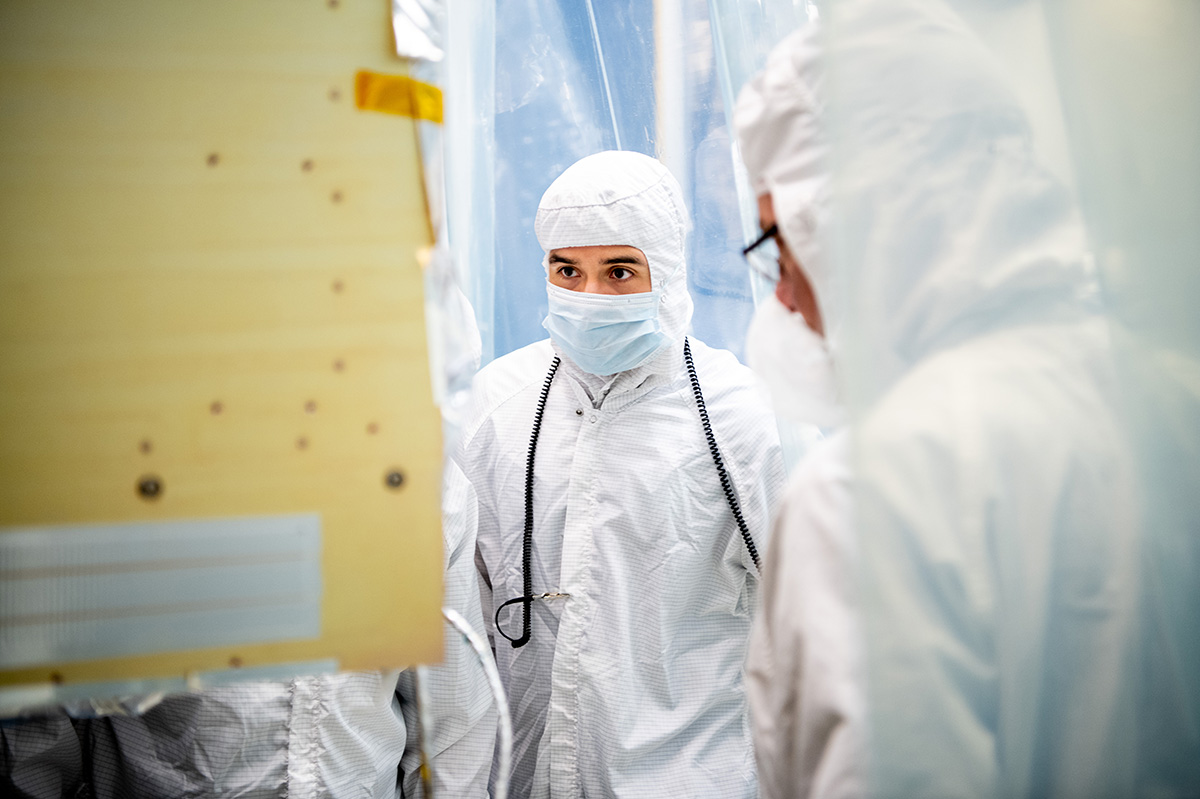
Lead Mechanical Engineer Mitch Zavala observes OCI ETU integration activities.
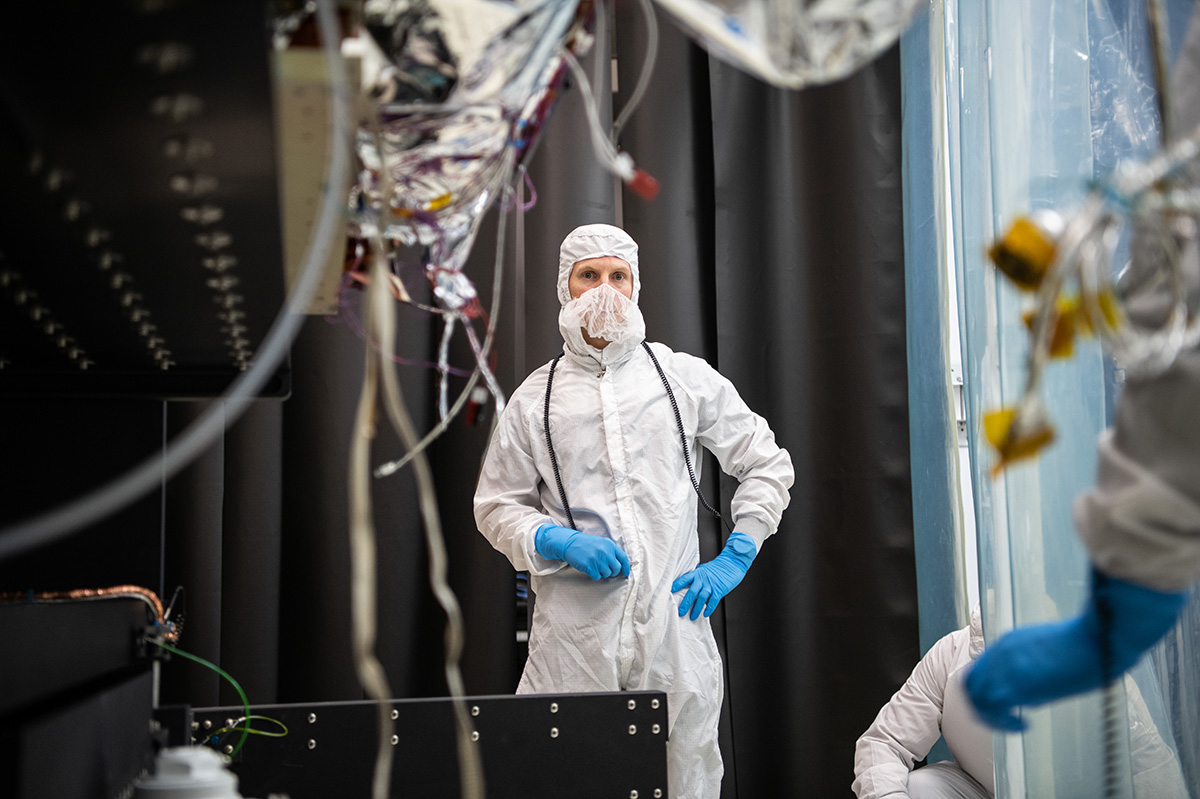
Quality Assurance (QA) Engineer Brad Weideman witnesses the OCI ETU hardware installation.
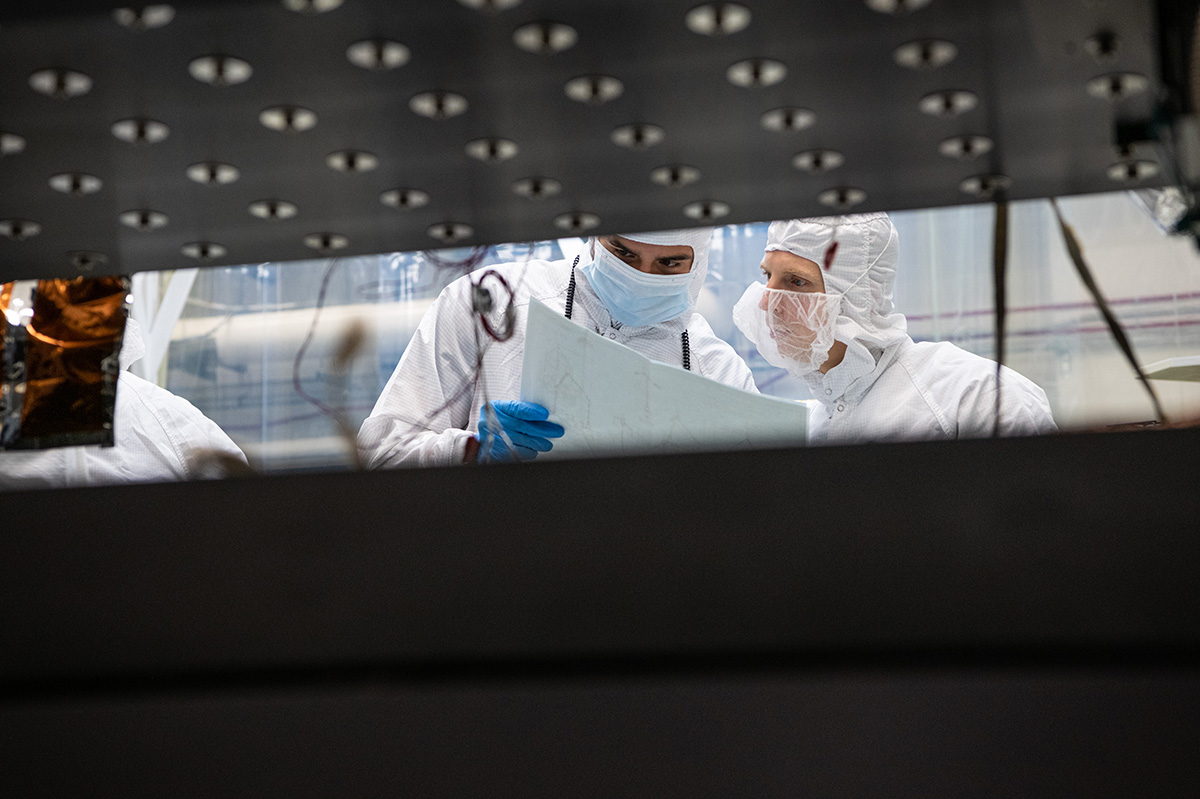
A mechanical engineer reviews integration documentation with the QA Engineer.
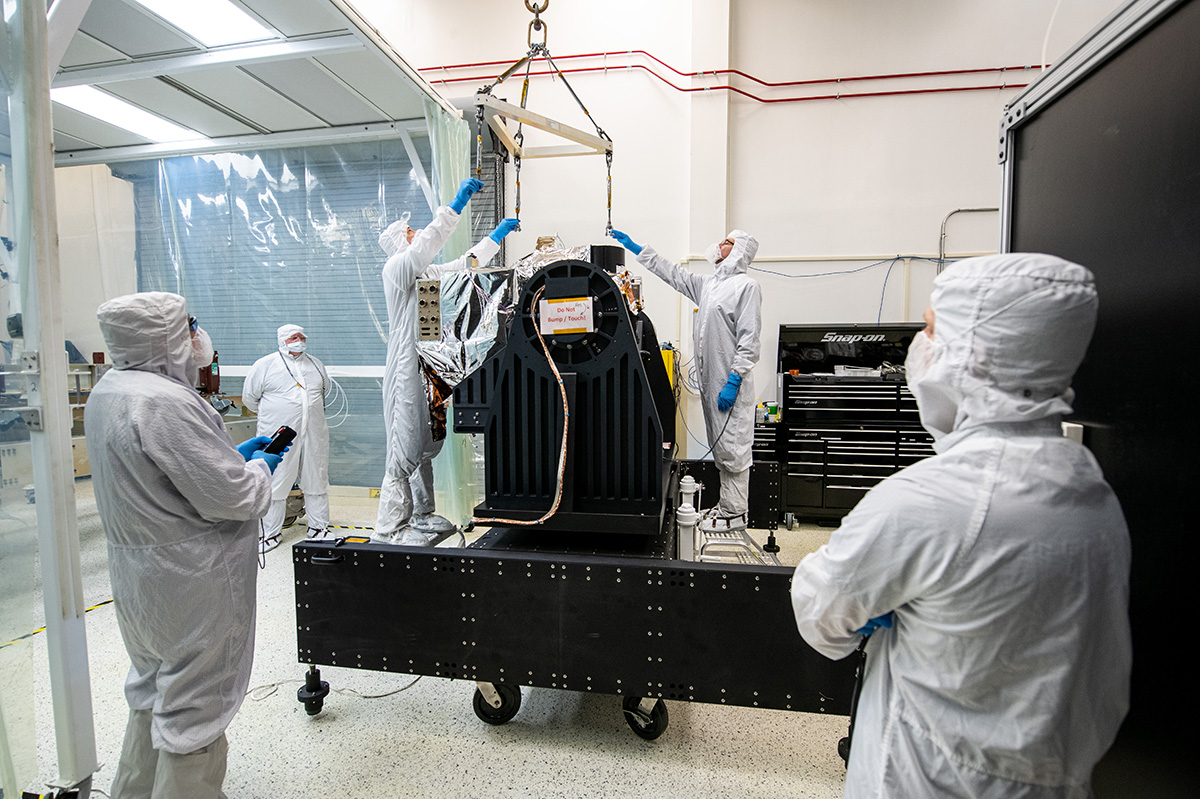
NASA engineers prepare for crane lifting of the OCI ETU.
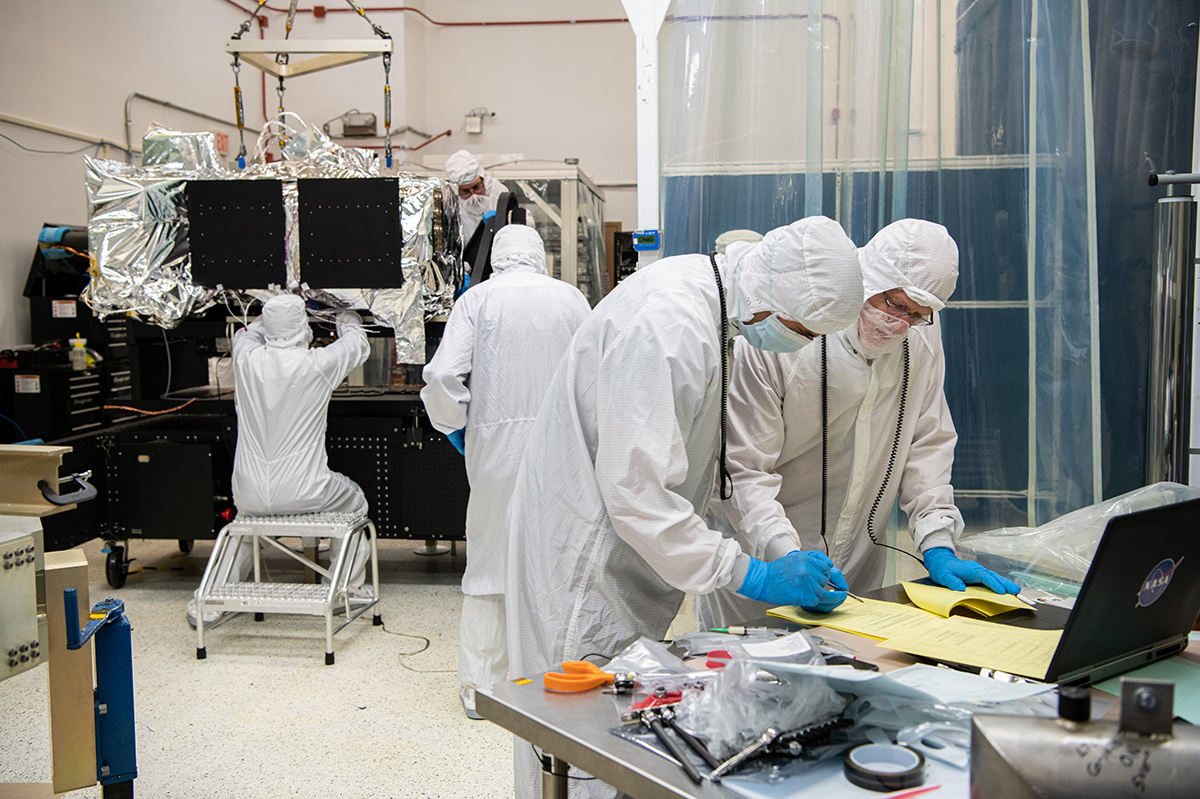
De-integrating the OCI ETU in preparation for lifting to the Thermal Vacuum (TVAC) Cart.
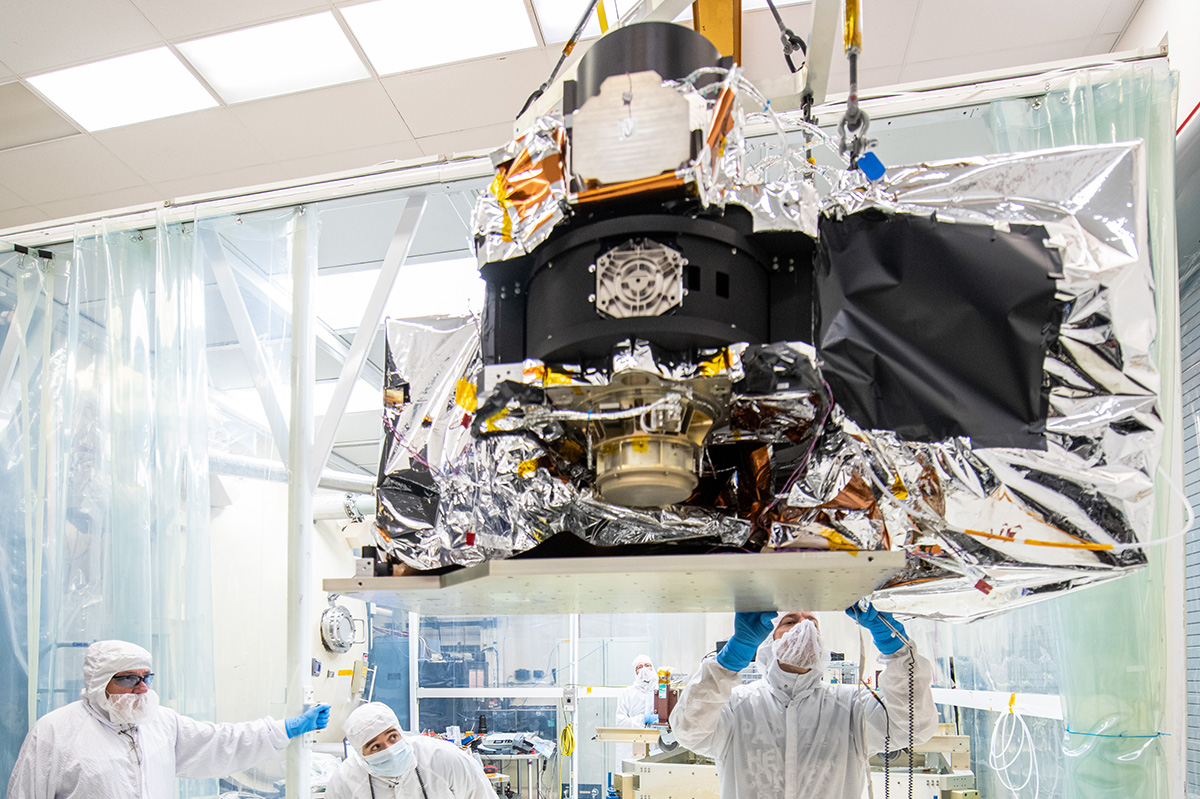
Crane lifting the OCI ETU from the GAToR to the TVAC Cart.
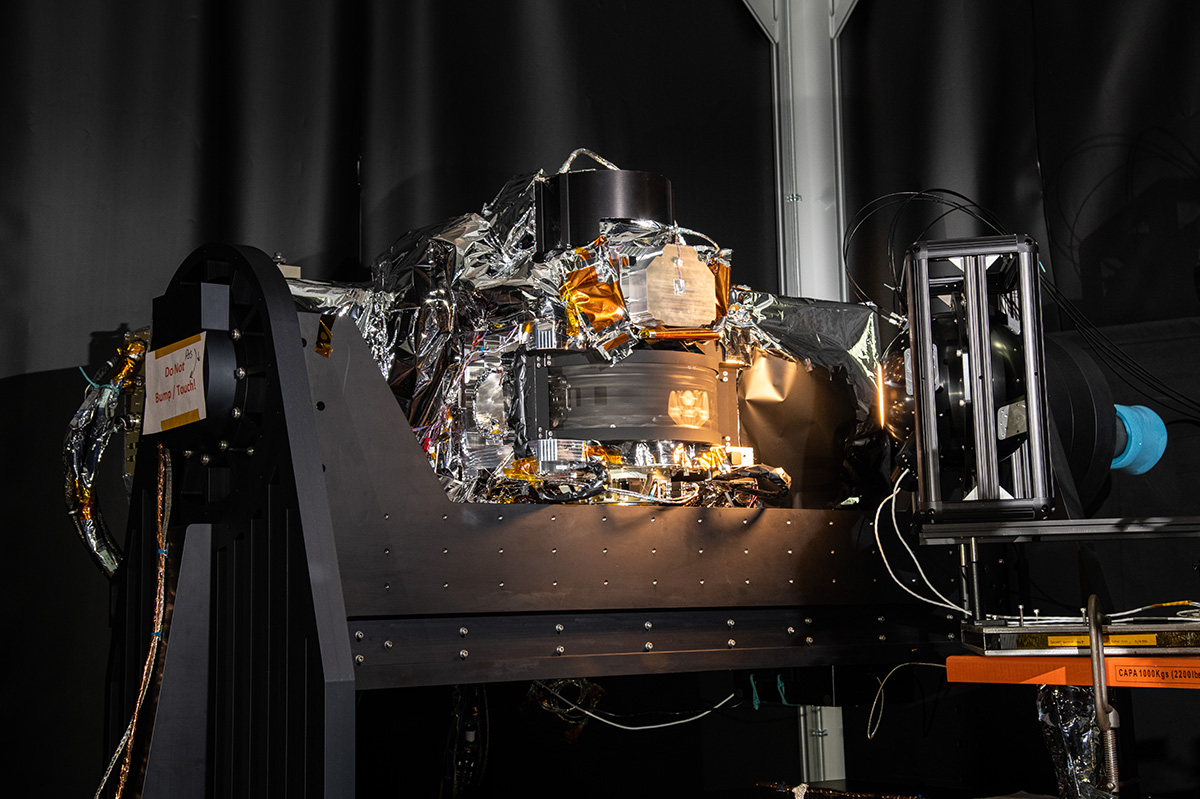
The OCI ETU with the spinning telescope scanning the calibrated light source.
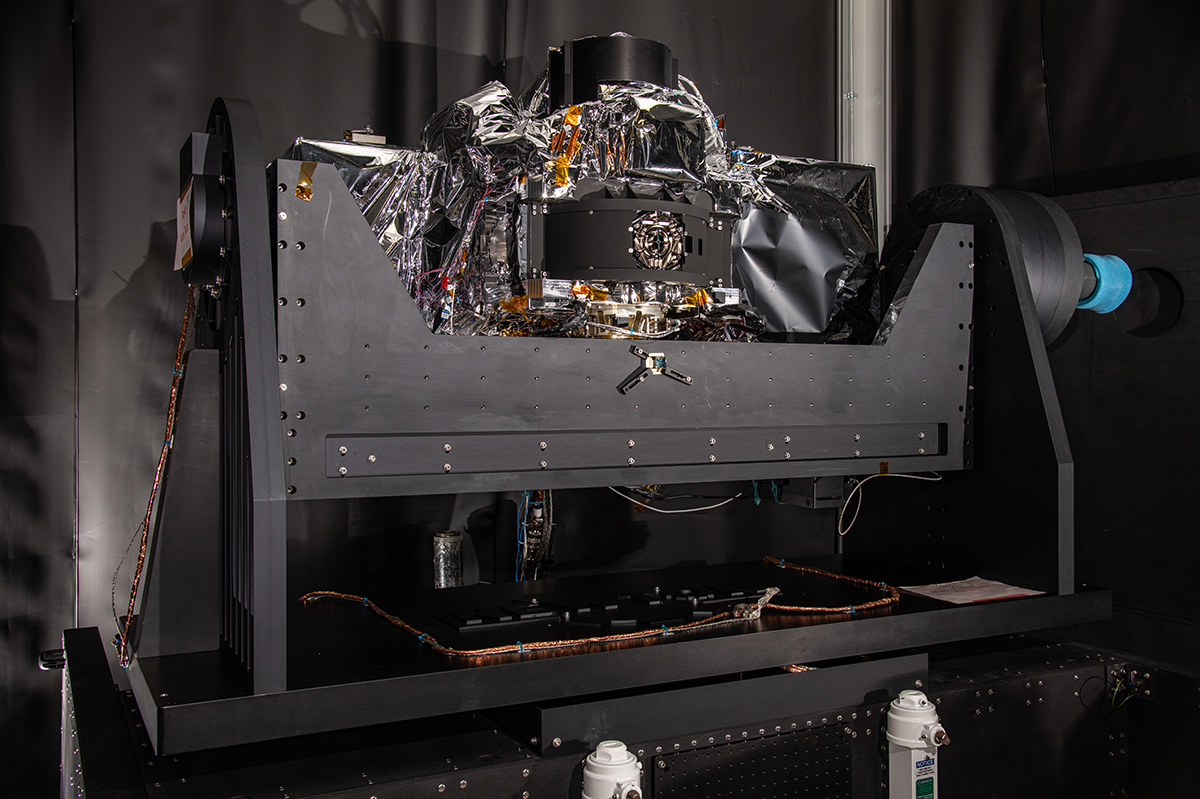
Beauty photo of the ETU OCI installed on the GSE Application for Tilt or Rotation (GAToR).
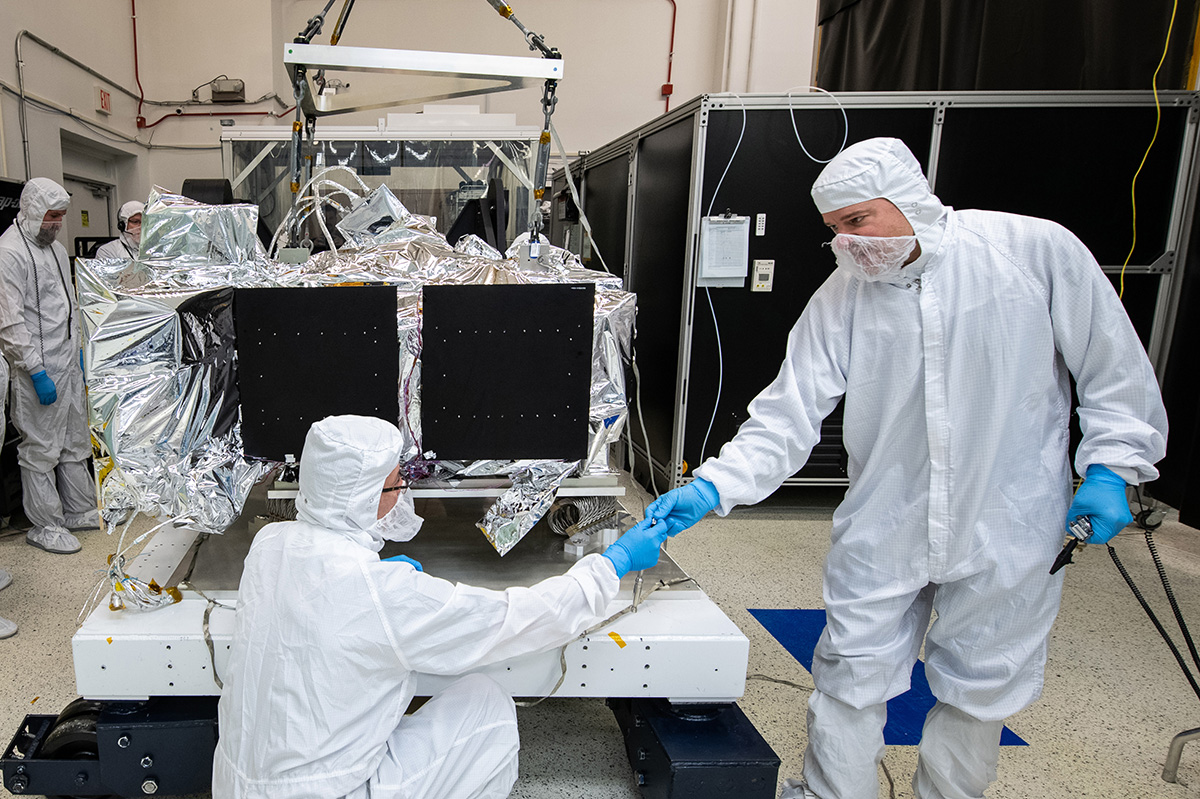
De-integration of the OCI ETU from the Transport Dolly.
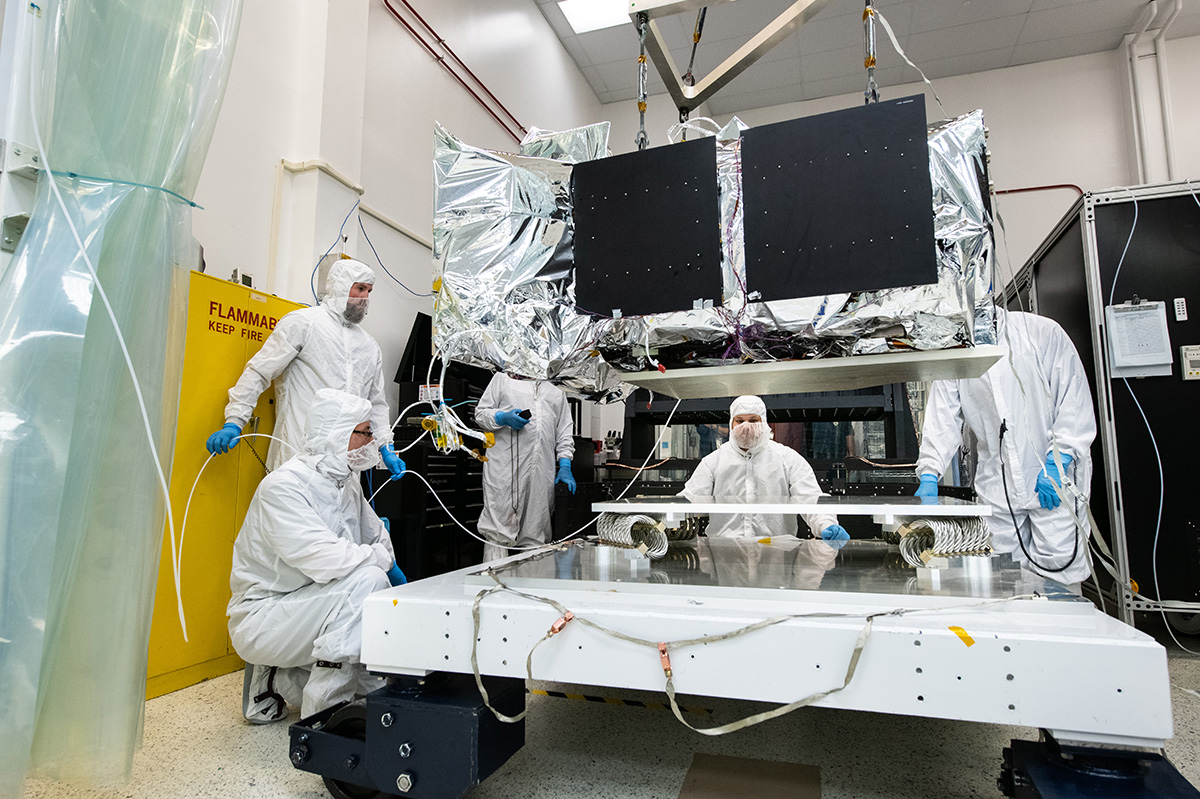
Crane lift of the OCI ETU onto the Calibration and GSE.
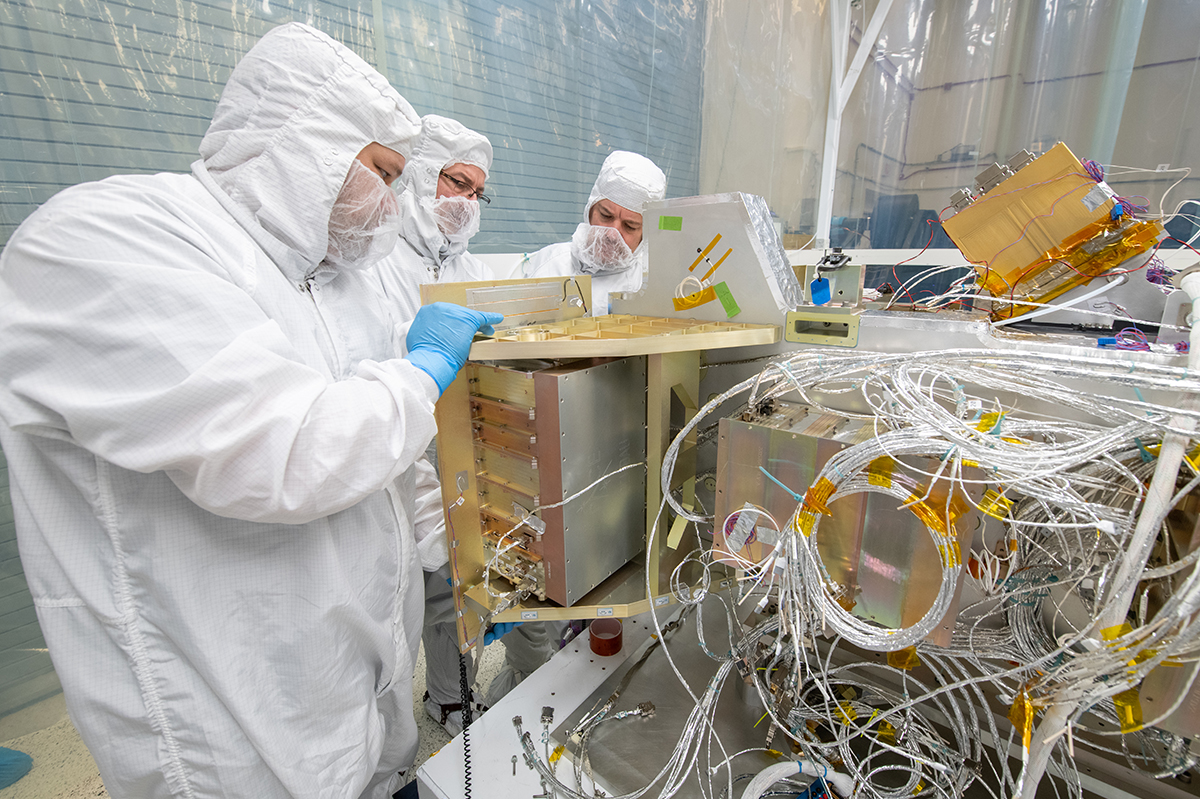
Mechanical installation of the Data Acquisition Unit (DAU) electronics box onto the OCI ETU.
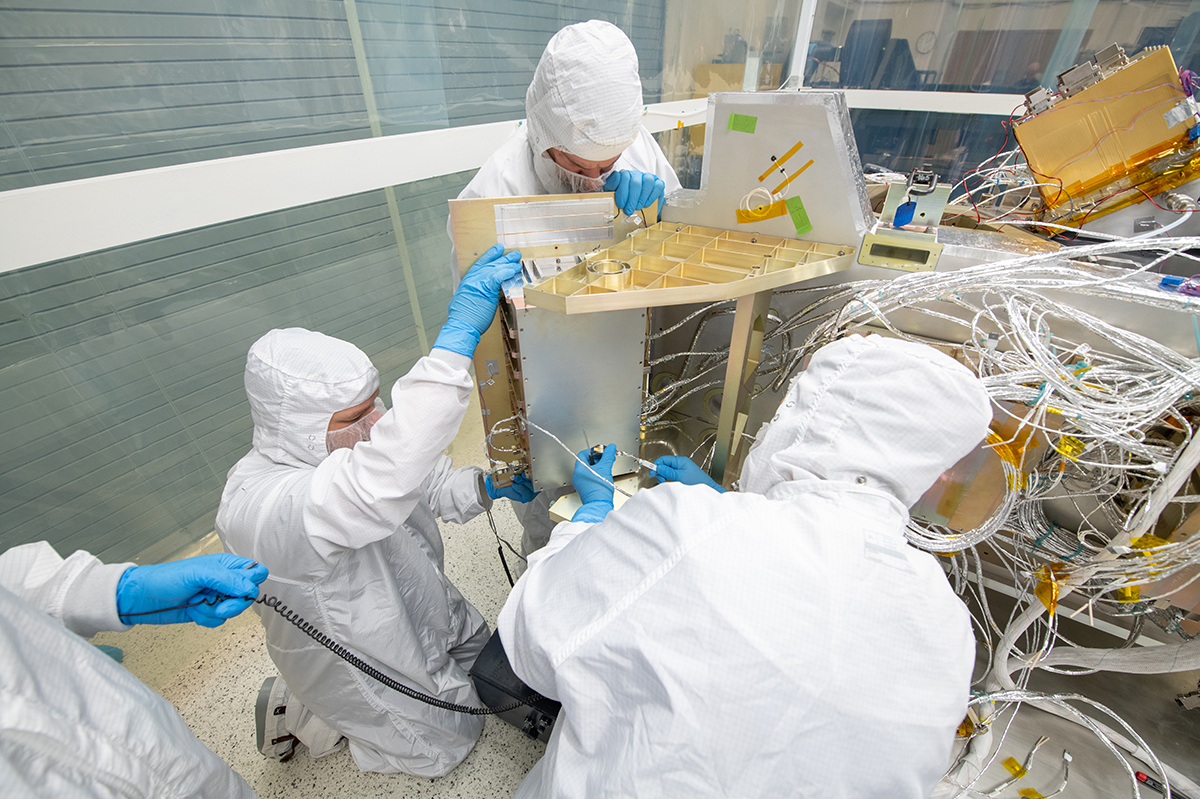
Mechanical installation of the DAU electronics box onto the OCI ETU.
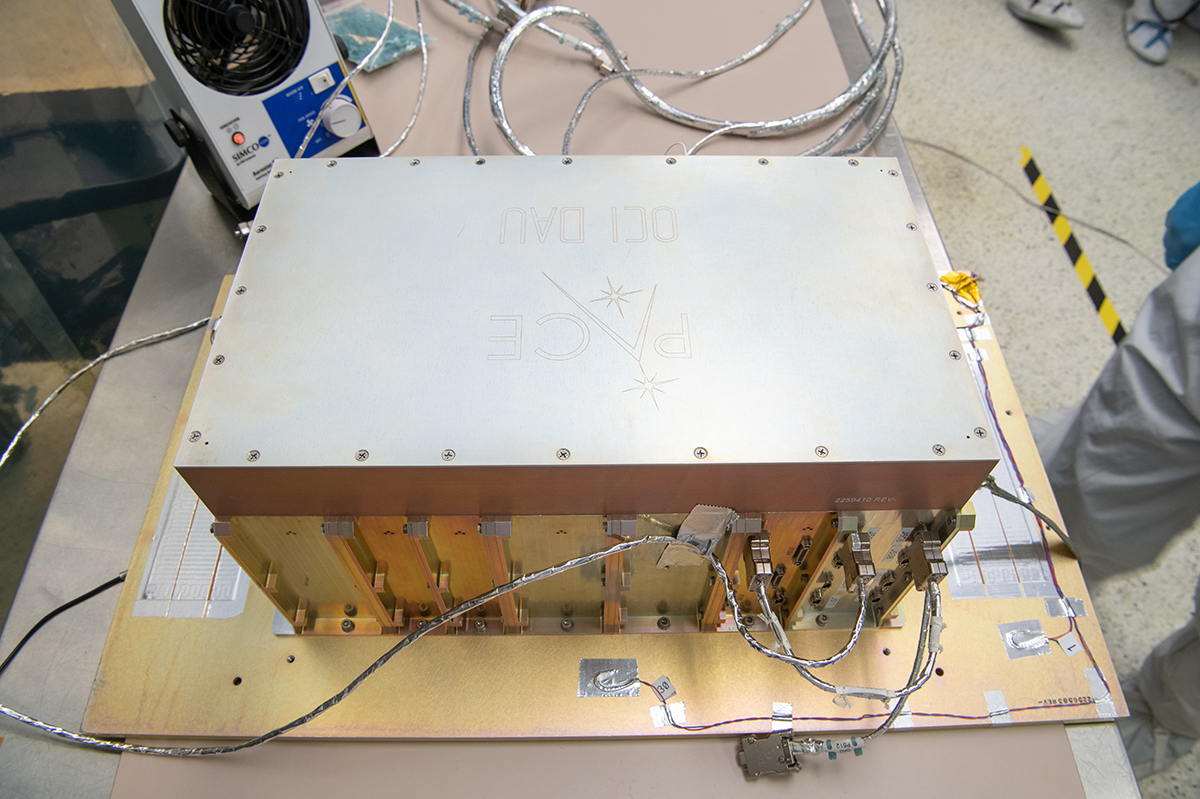
Mechanical installation of the DAU electronics box to the mock-up ETU radiator.
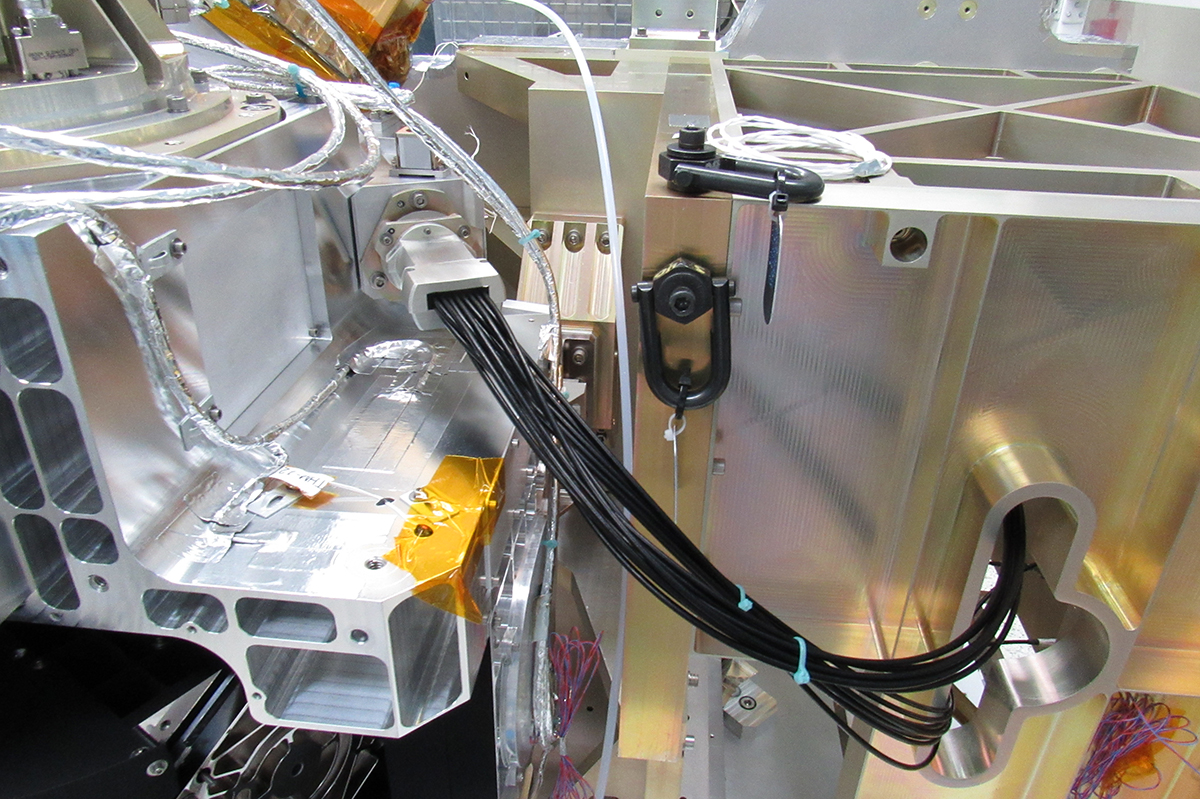
MLA and Fiber Bundle linking the OCI OM to the SWIR Detection Assembly (SDA).
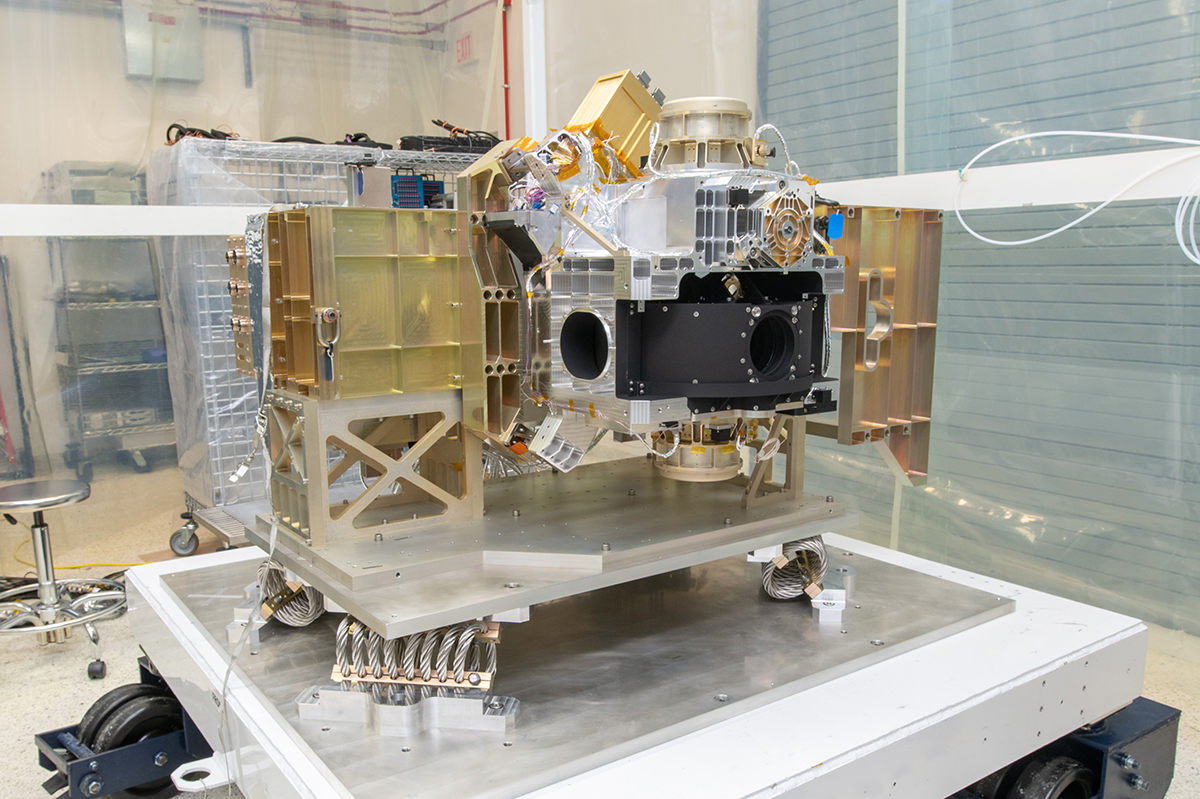
The OCI ETU with the OM installed and ready for Integration & Testing (I&T).
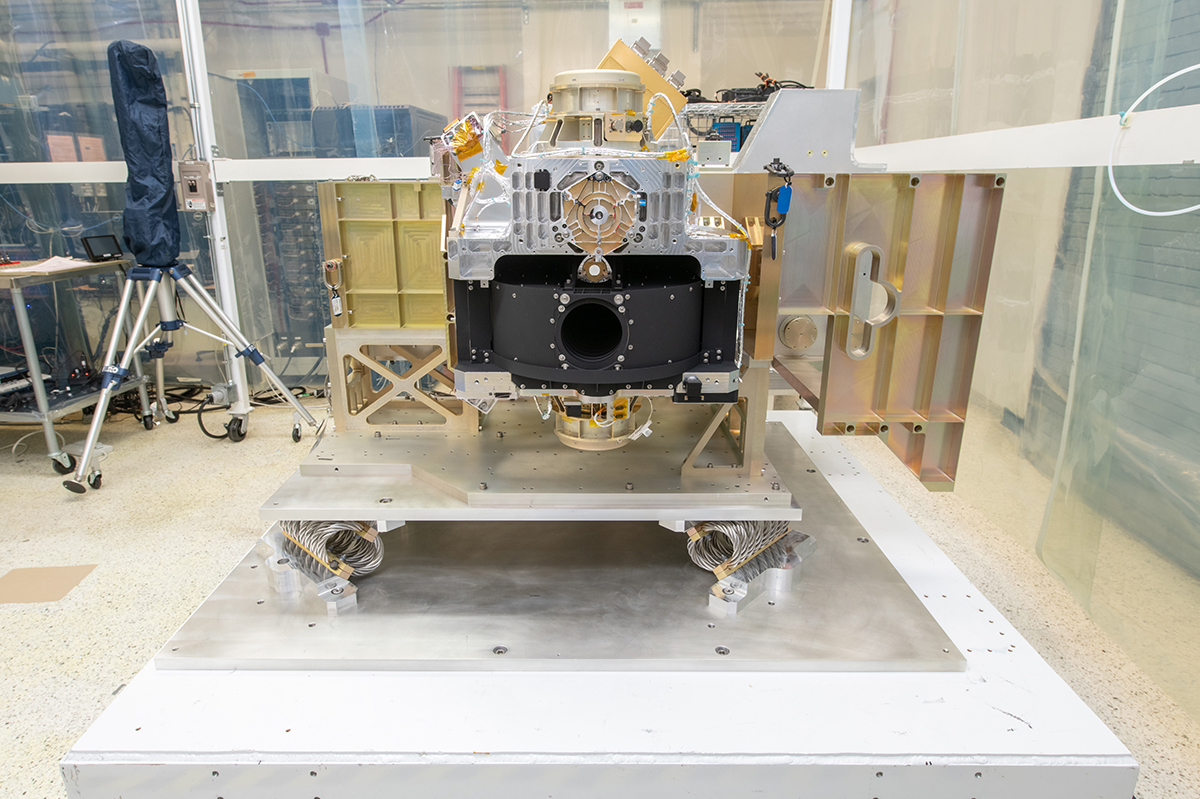
The OCI ETU with the OM installed and ready for I&T.
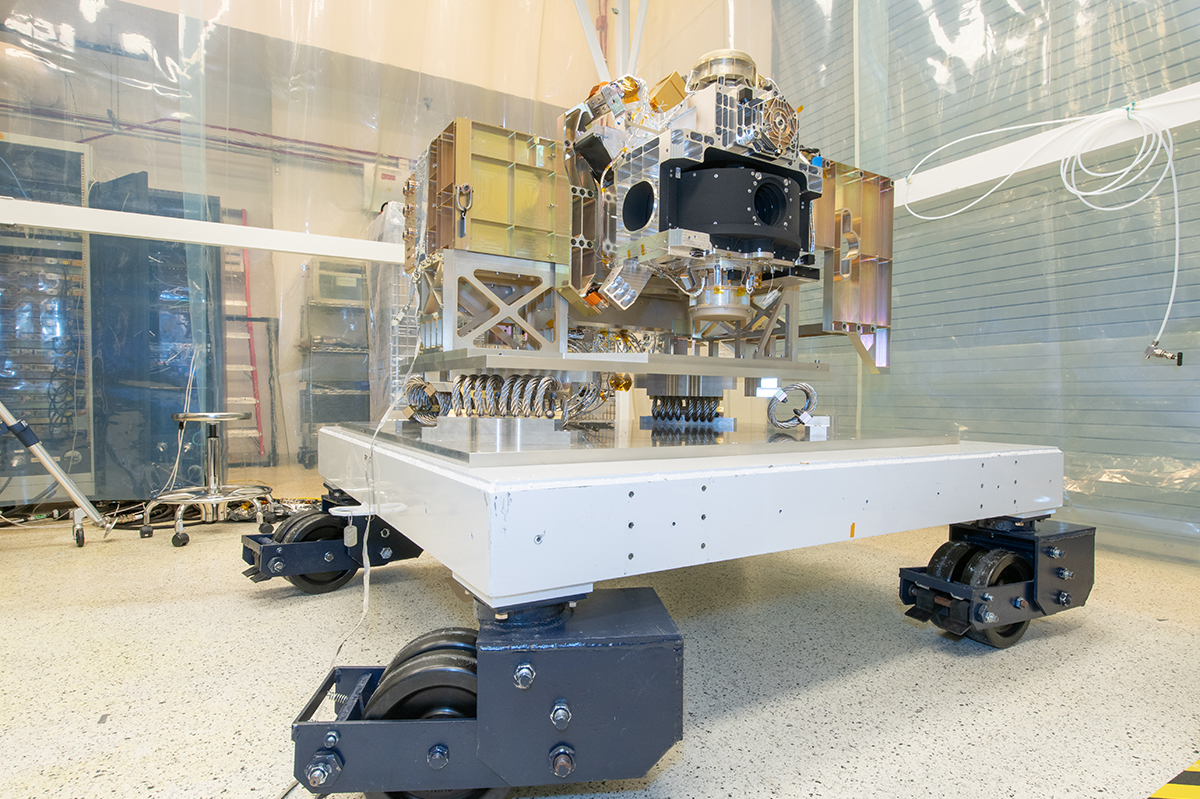
The OCI ETU with the OM installed and ready for I&T.
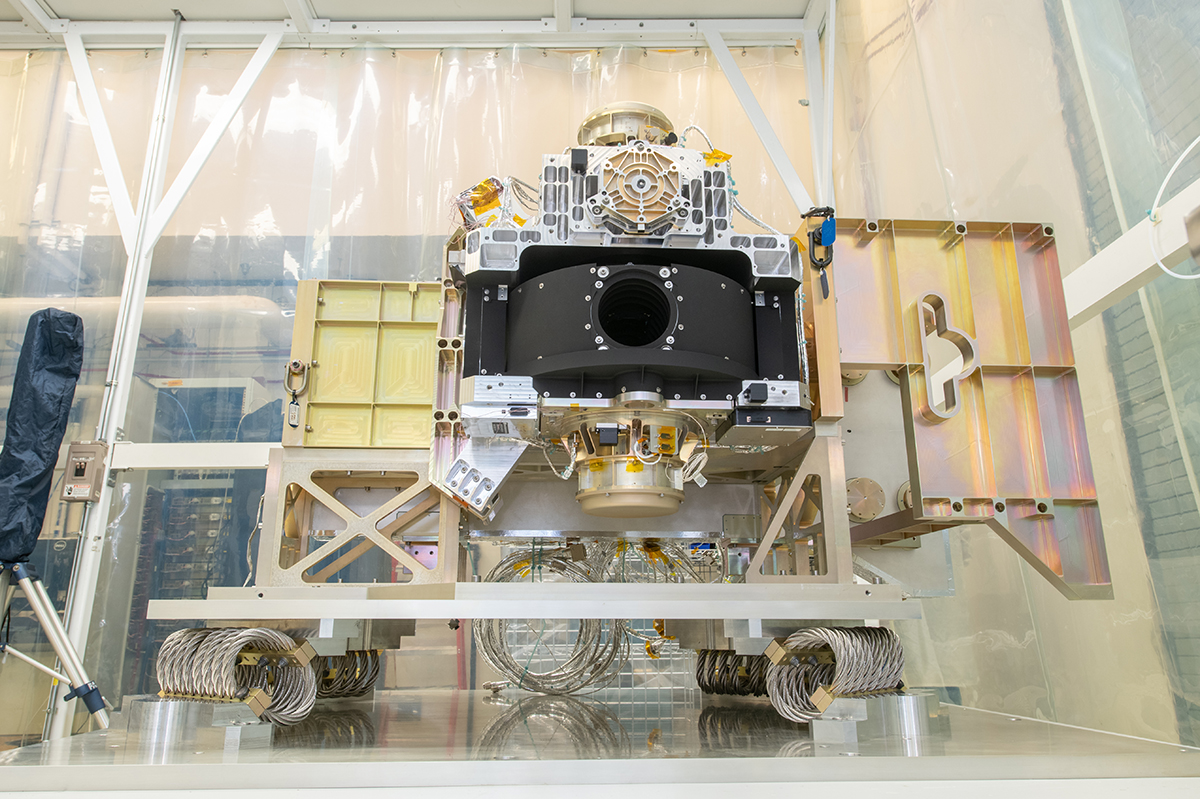
The OCI ETU with the OM installed and ready for I&T.
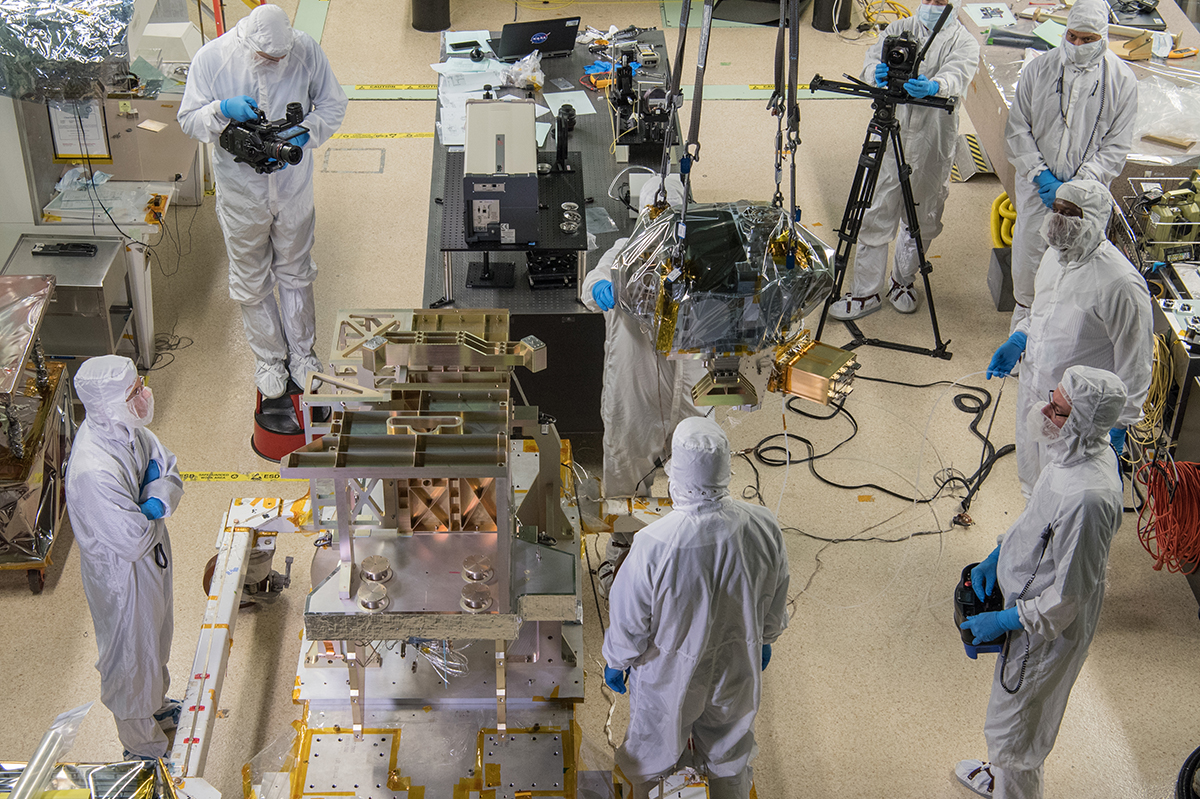
NASA technicians perform a flatness check between the OM and ETU Primary Structure.
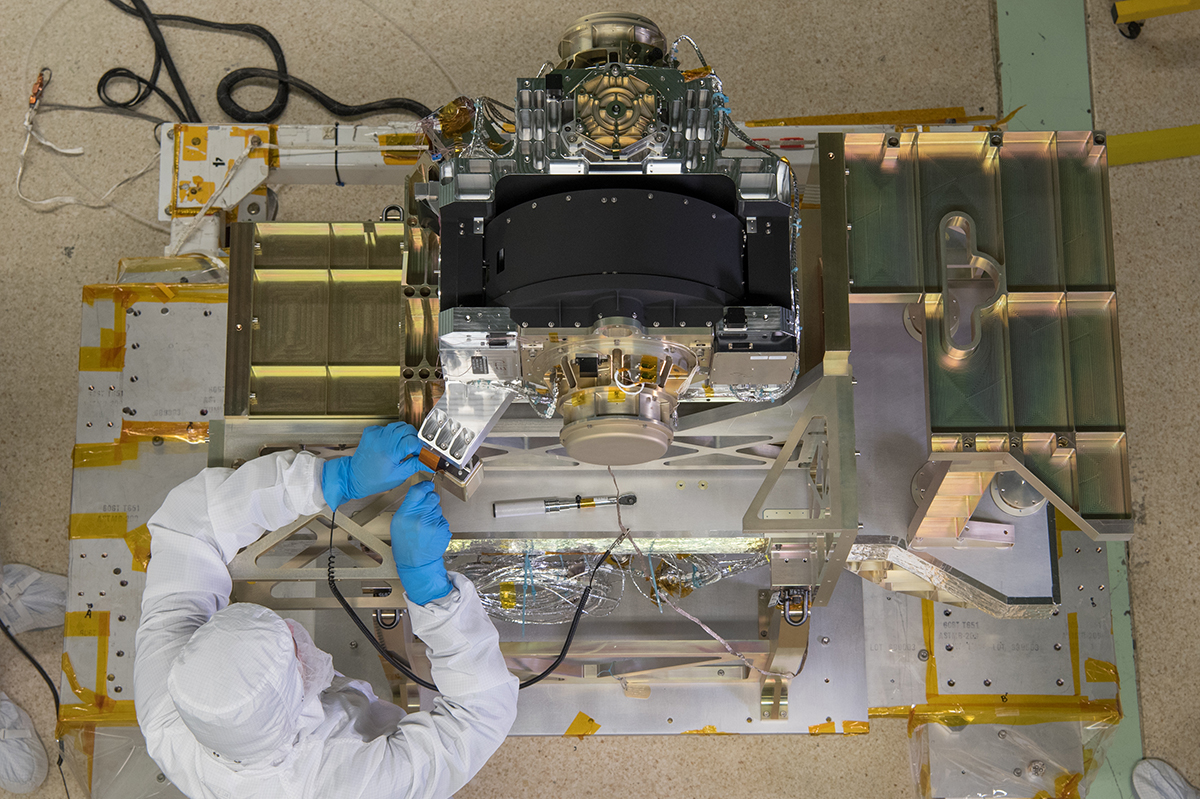
Flatness check between the OM and ETU Primary Structure.
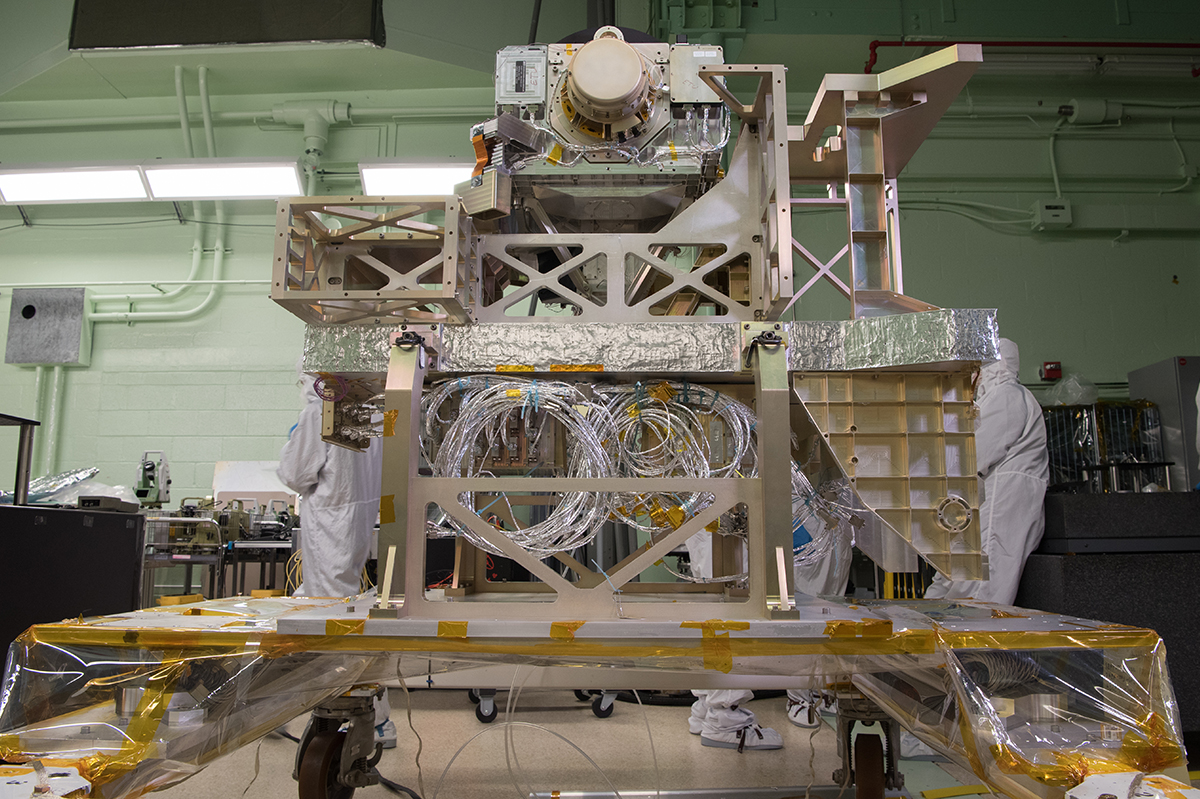
The fully integrated OM on the OCI ETU.
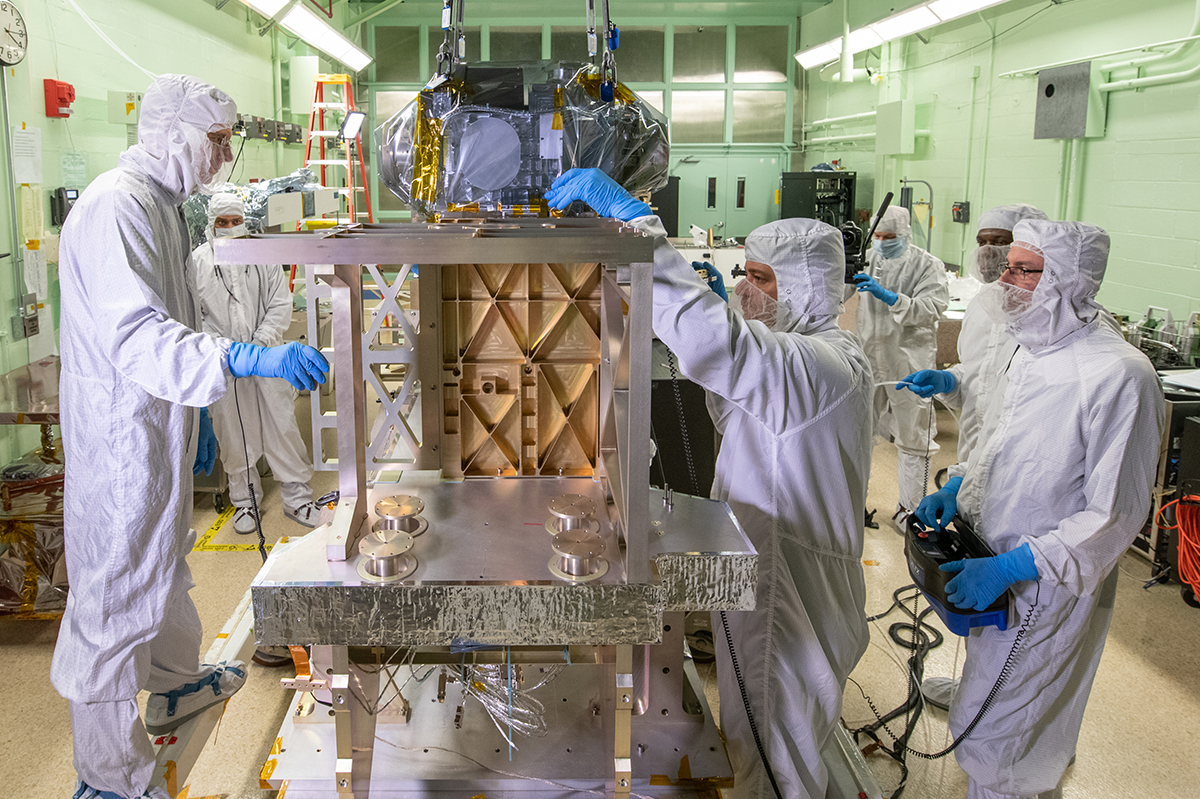
NASA technicians perform a flatness check between the OM and ETU Primary Structure.
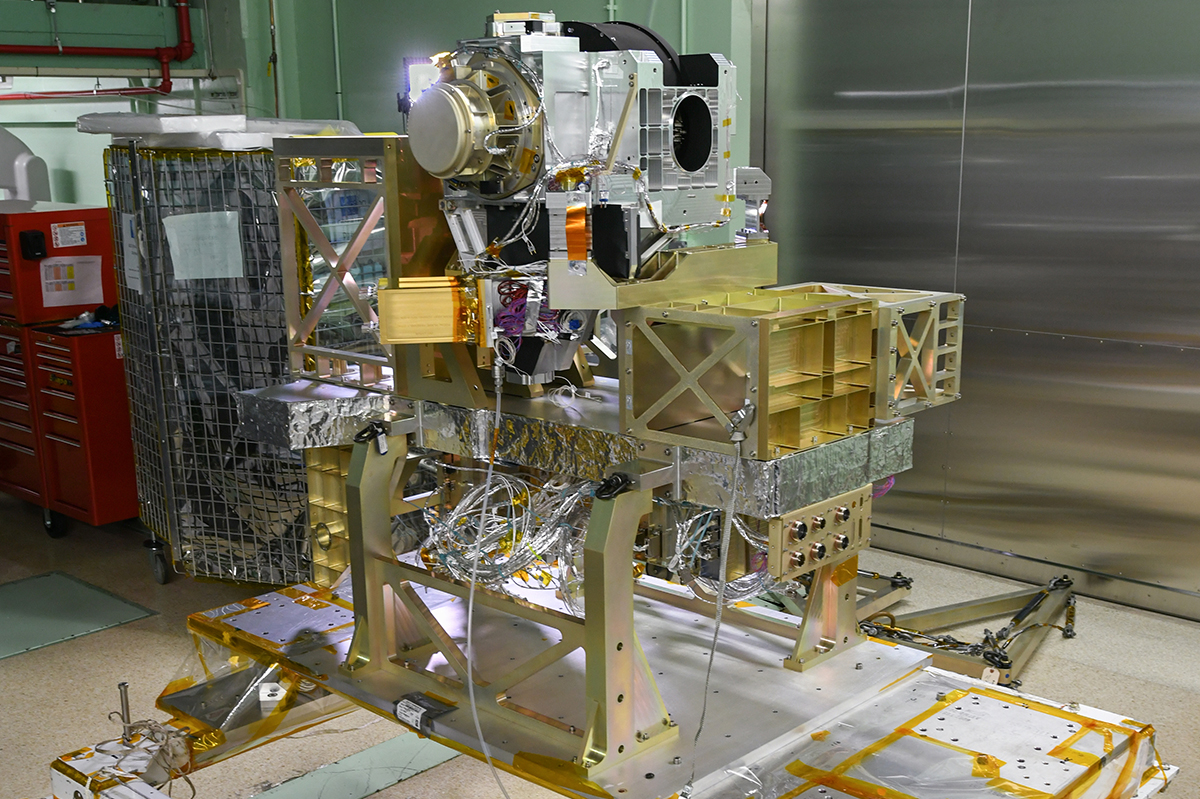
The fully-integrated OM on the ETU.
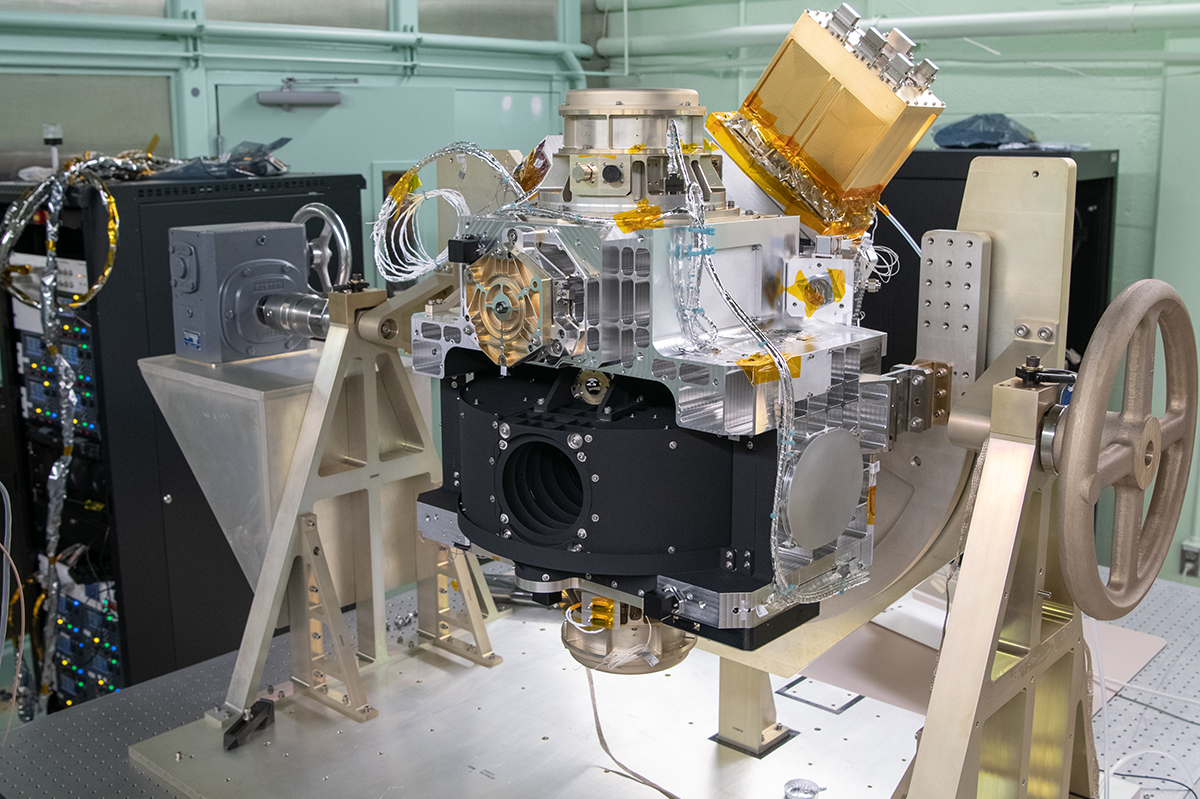
The OCI ETU OM (with Red-Channel FPA installed) oriented for optical testing.
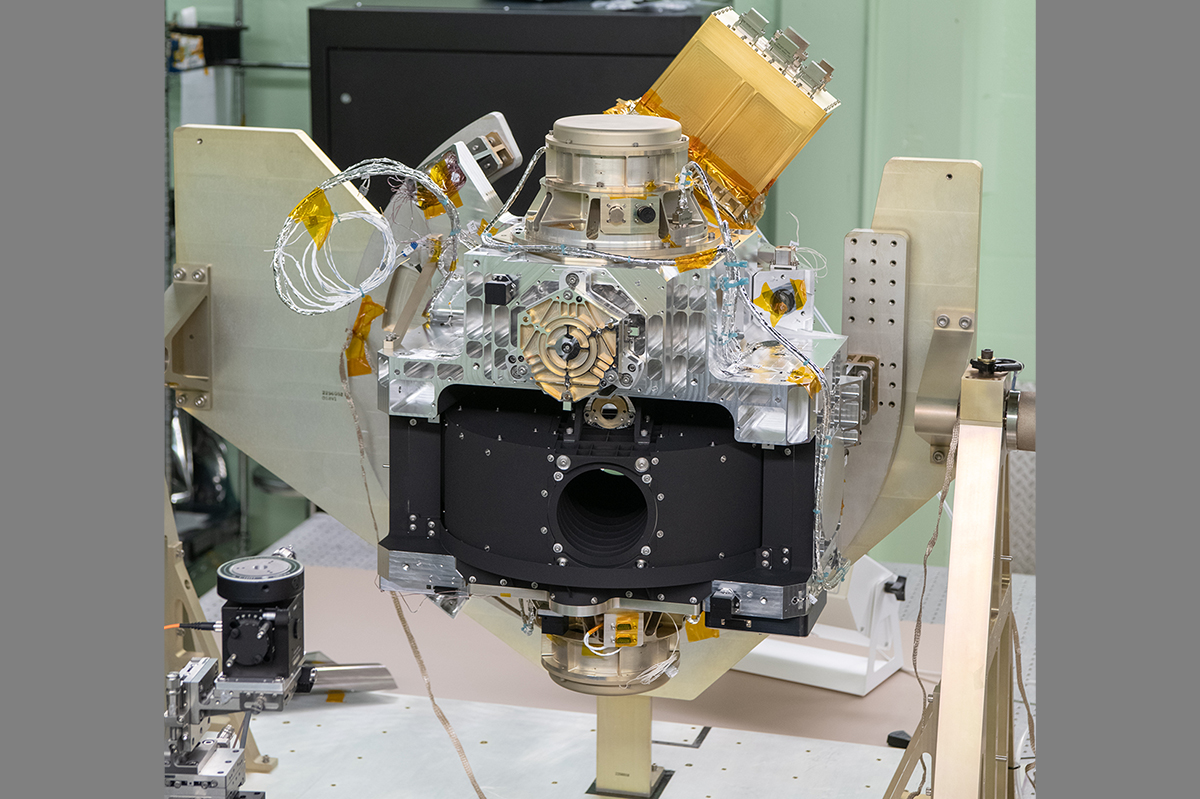
The OCI ETU OM (with Red-Channel FPA installed) oriented for optical testing.
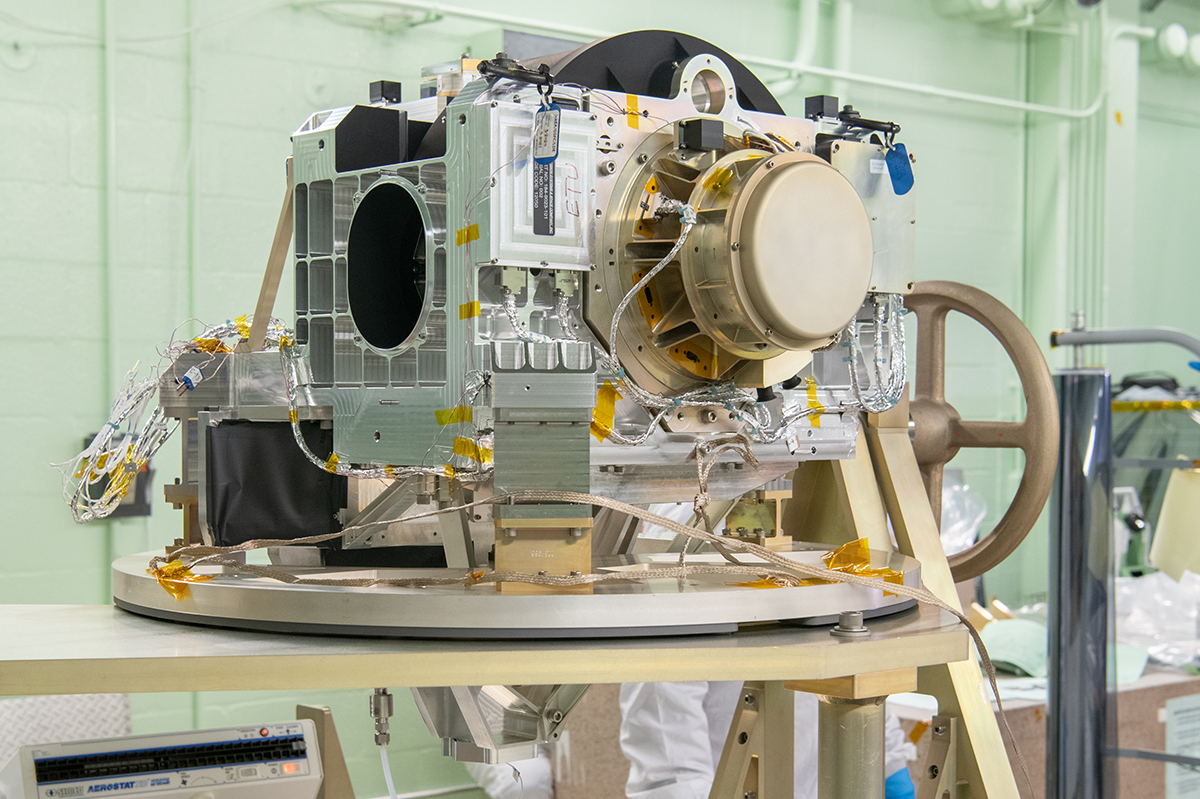
The OCI ETU MOB attached to the Lisard GSE prior to installation of MOSB.

The OM on Lisard GSE. Lift shackles are installed in preparation for an upcoming crane lift.
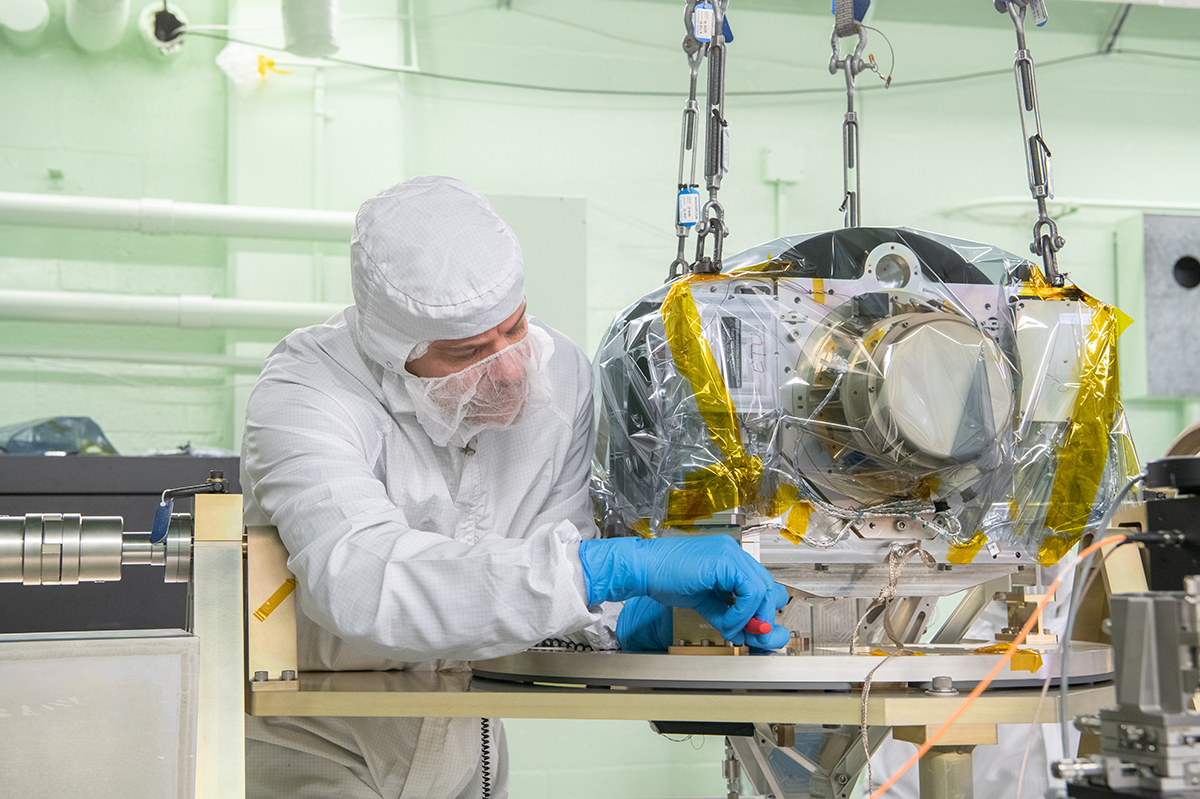
Unbolting the OCI ETU OM from the Lisard GSE in preparation for a crane lift move to the Instrument Structure. Protective contamination bagging is installed.
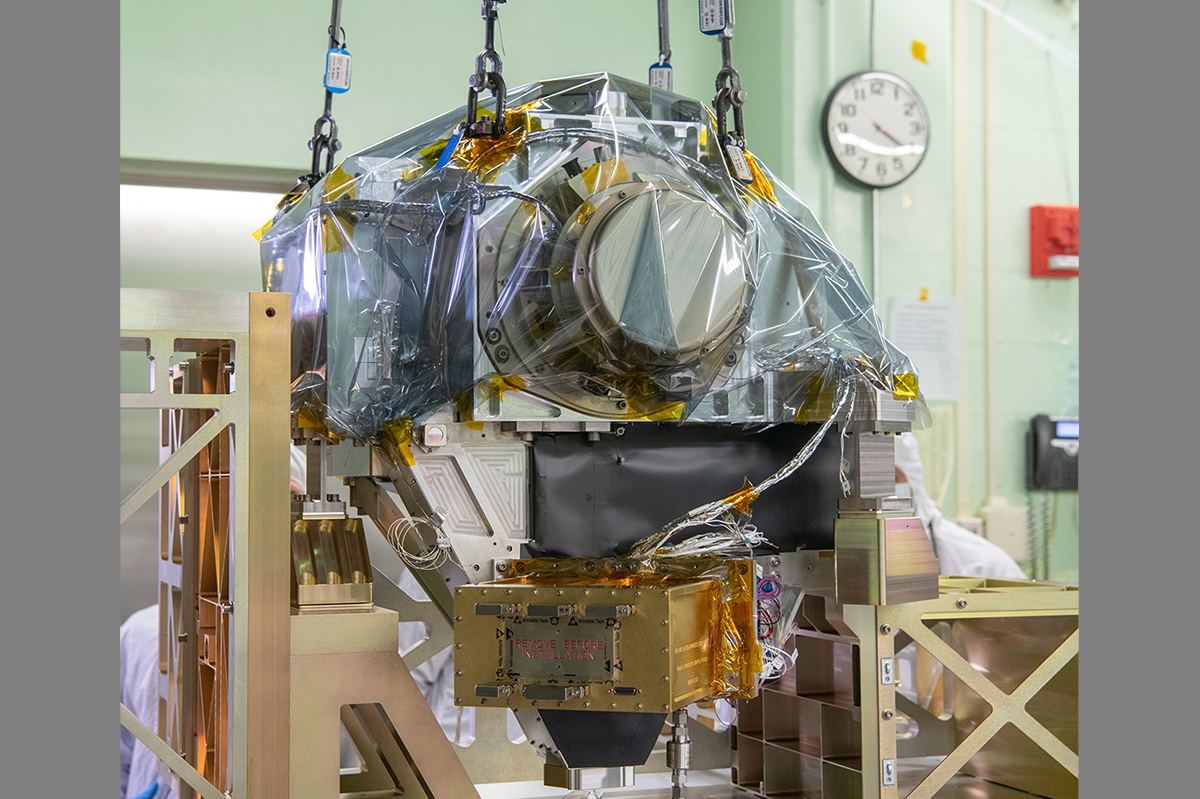
The OM is installed to the OCI ETU Primary Structure.
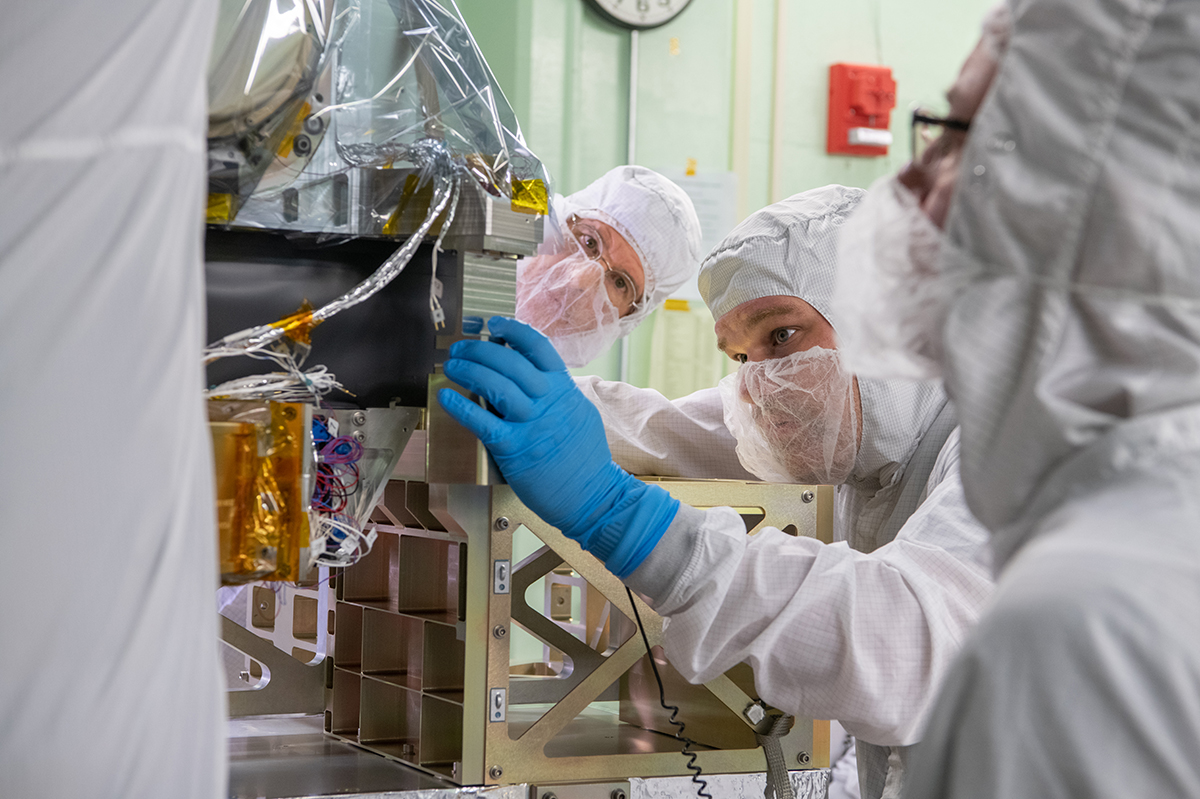
Crane lift of the ETU OM onto the OCI Primary Structure. (In order to protect the OM from potential particulate contamination and humidity, the OM is bagged and purged.)
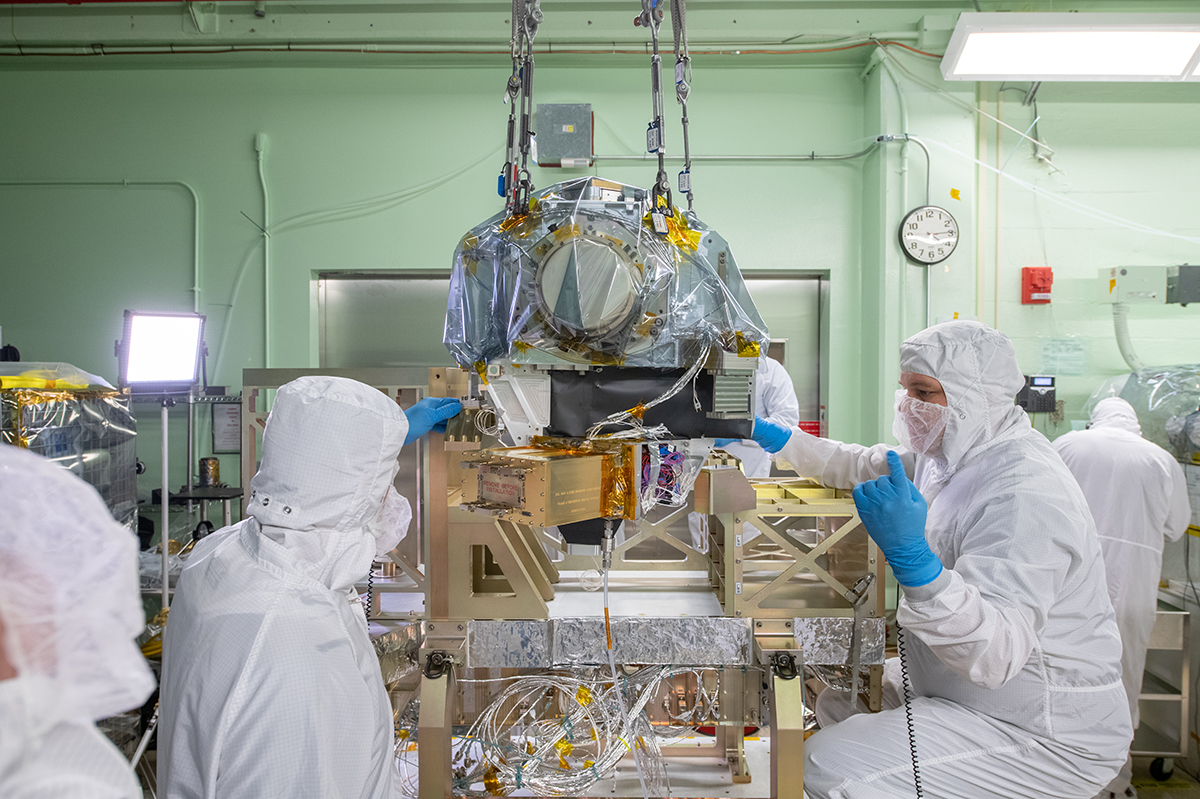
Crane lift of the ETU OM onto the OCI Primary Structure.
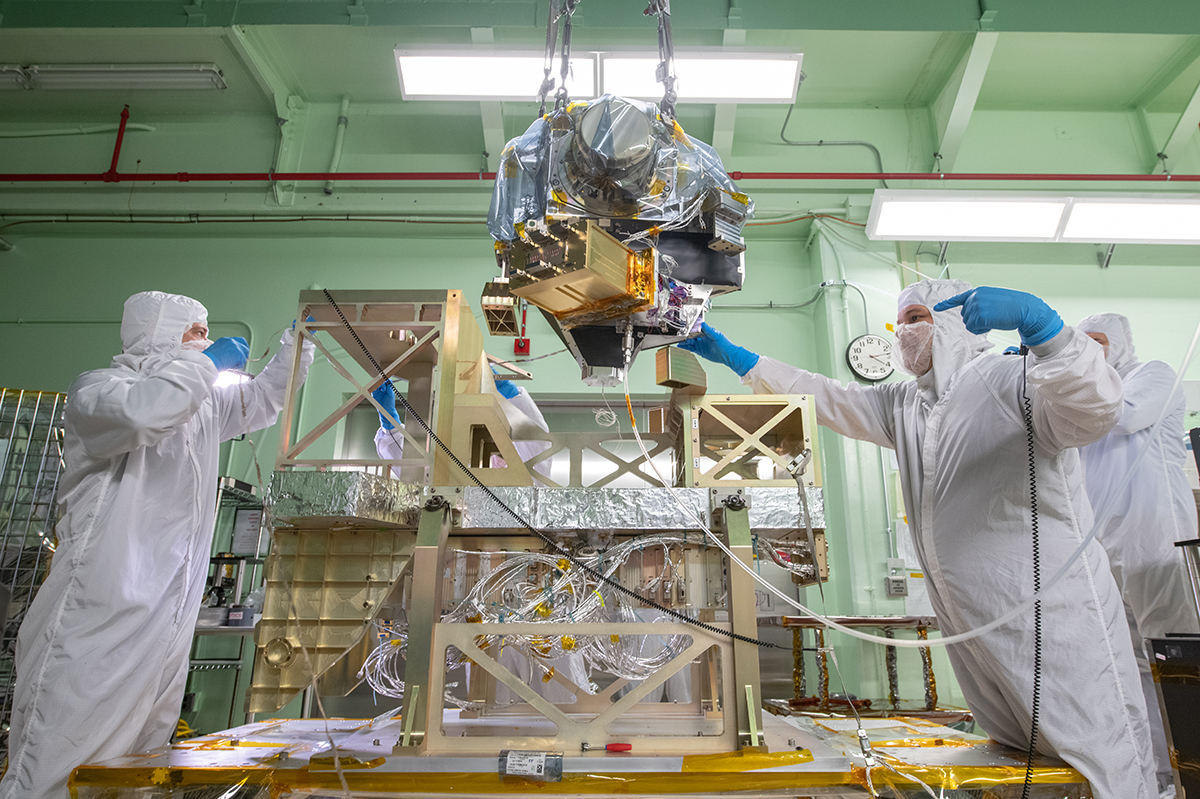
Crane lift of the ETU OM onto the OCI Primary Structure.
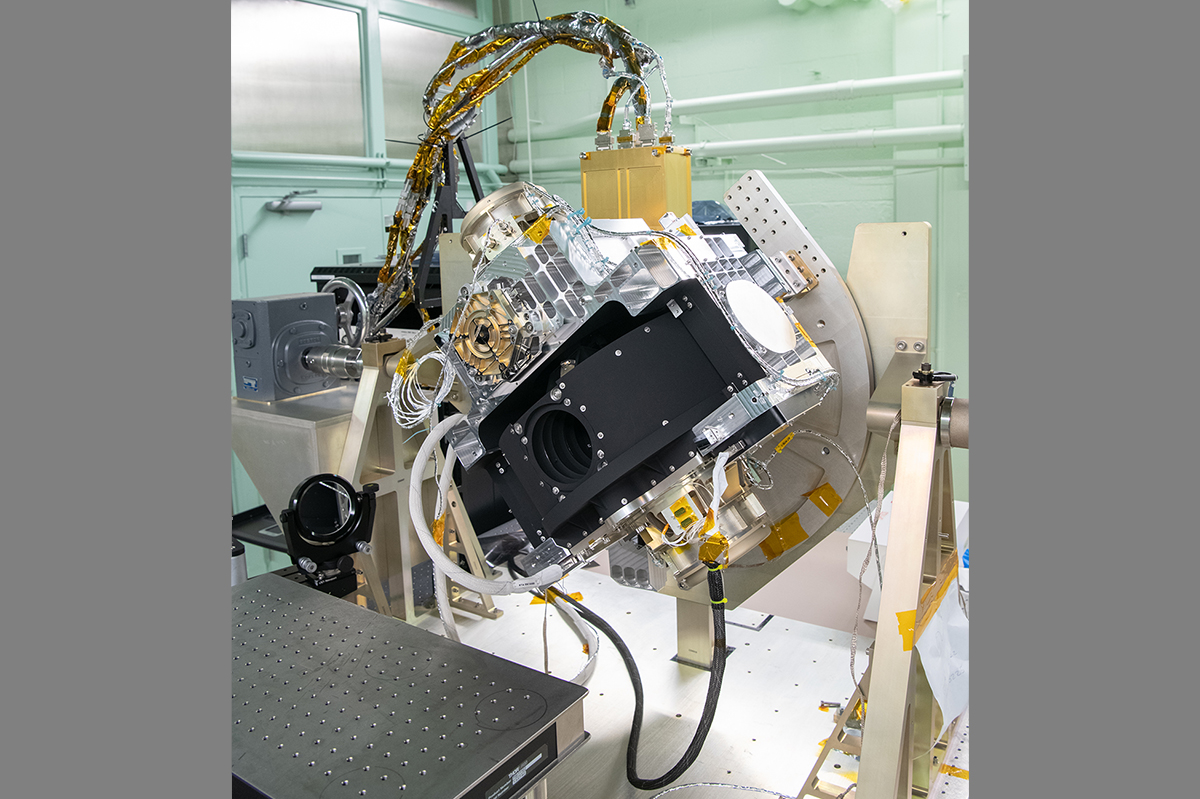
The FPA installed on the ETU OM of the OCI.
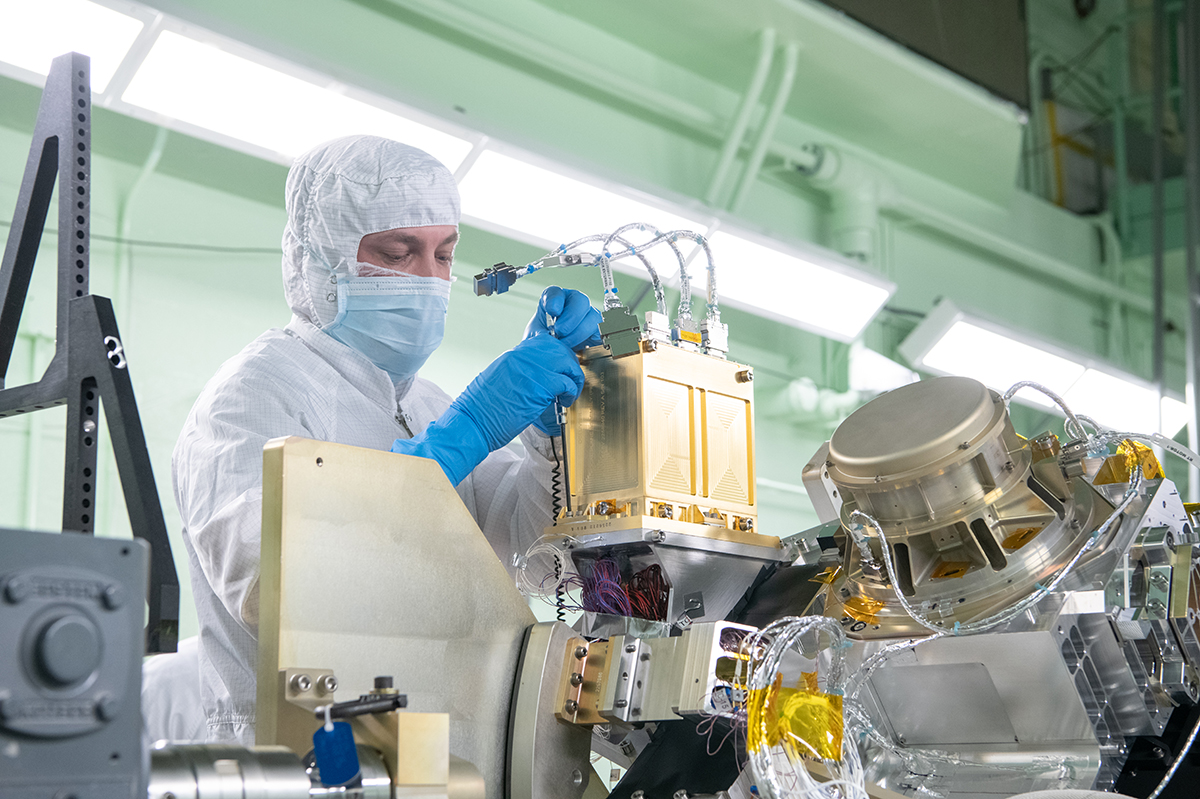
Installation of the Focal Plane Assembly (FPA) on the ETU OM of the OCI.
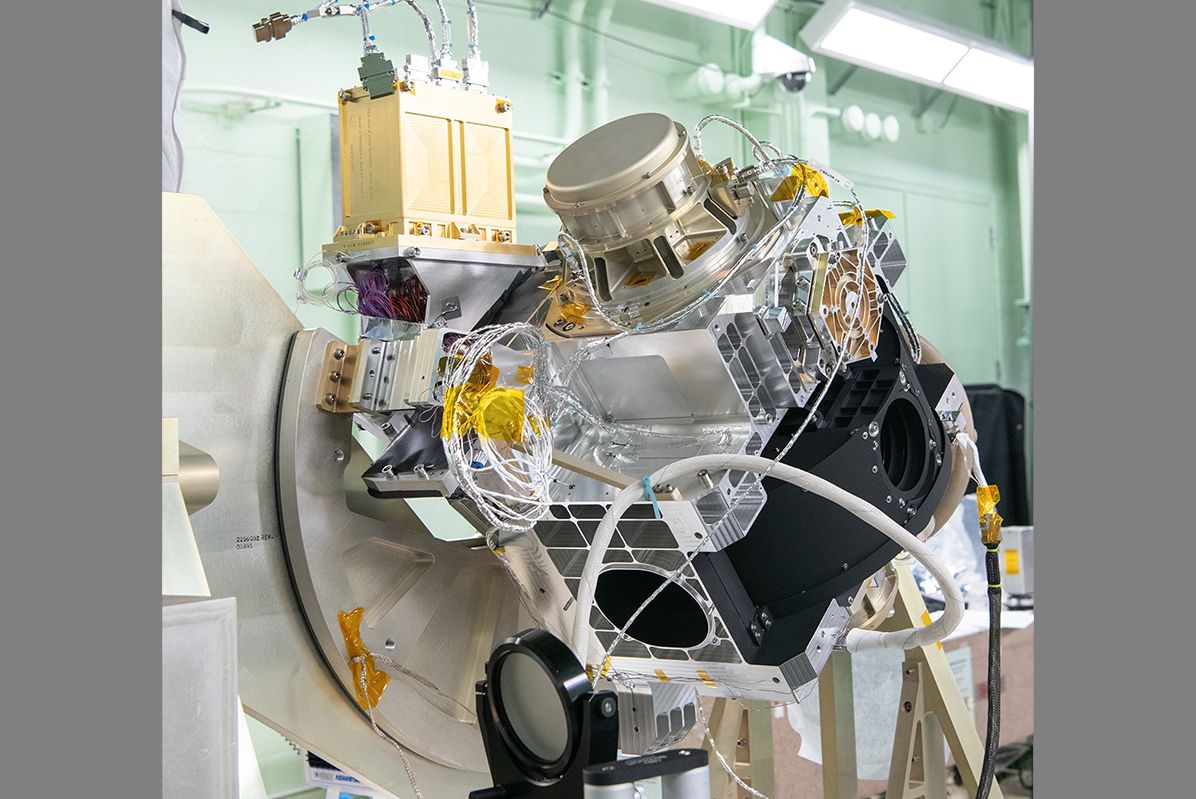
The FPA installed on the ETU OM of the OCI.
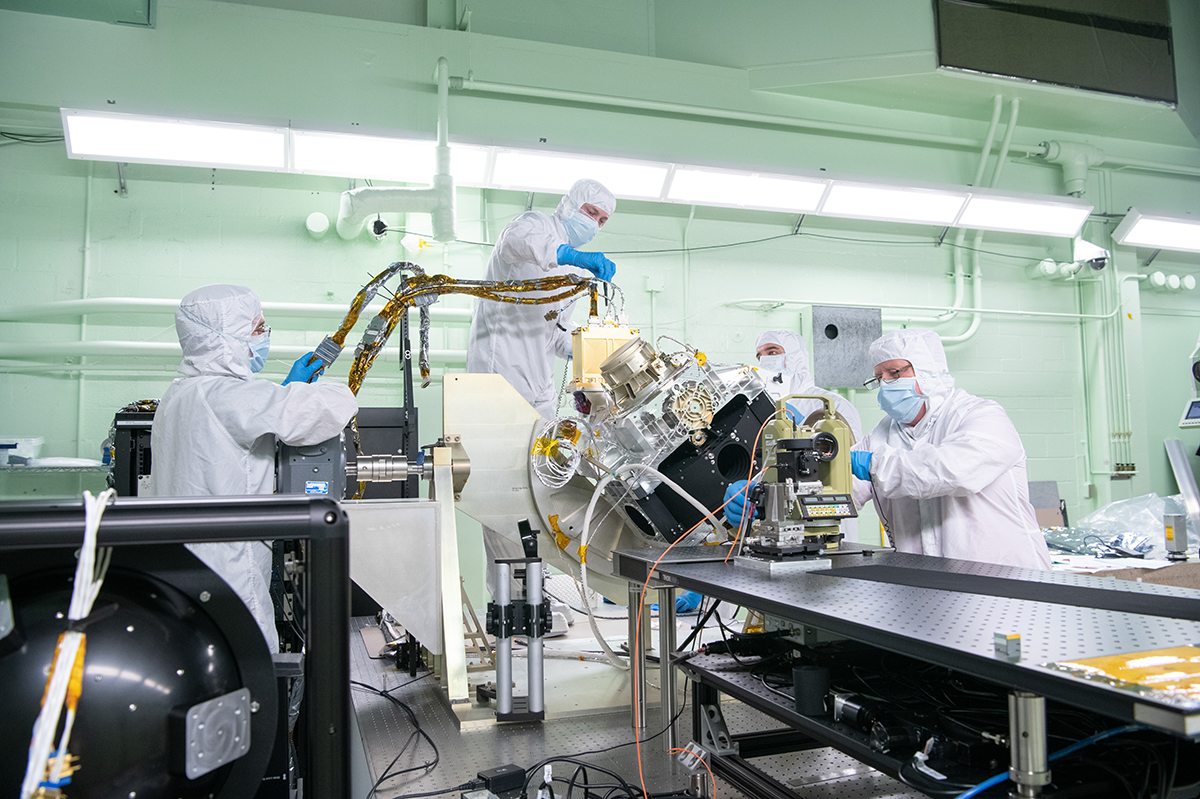
Installation of the FPA on the ETU OM of the OCI.
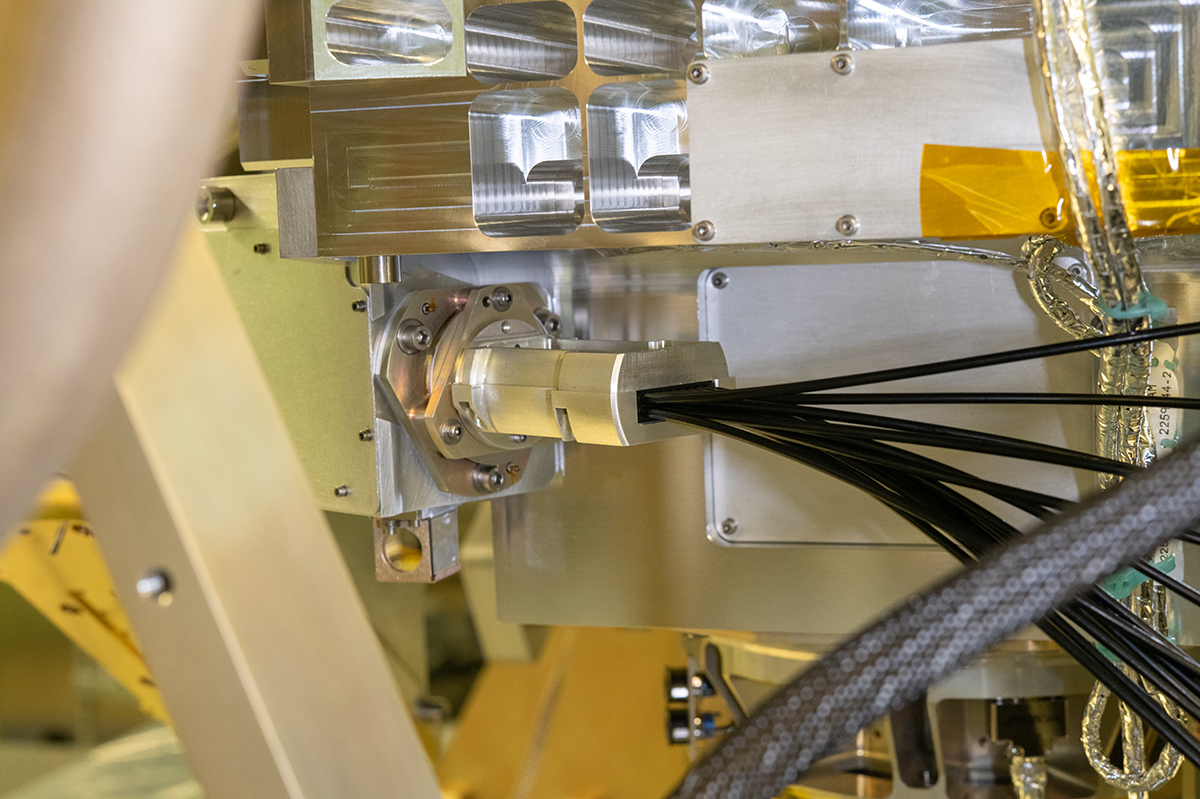
MicroLens Array (MLA) and Fiber Optic Bundle attached to the OCI Optical Module (OM) during alignment and testing.
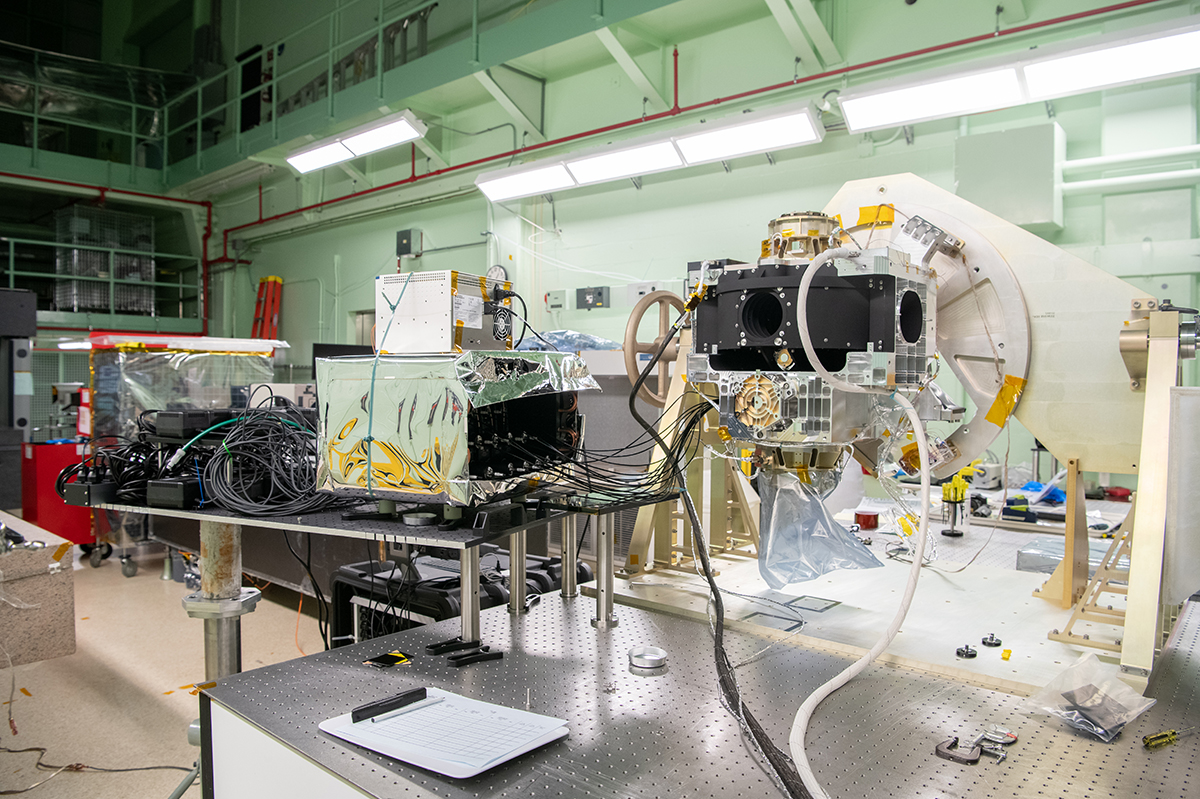
Alignment of the MLA and Fiber Optic Bundle to the OCI OM. The OM is located in the middle of the optical table.
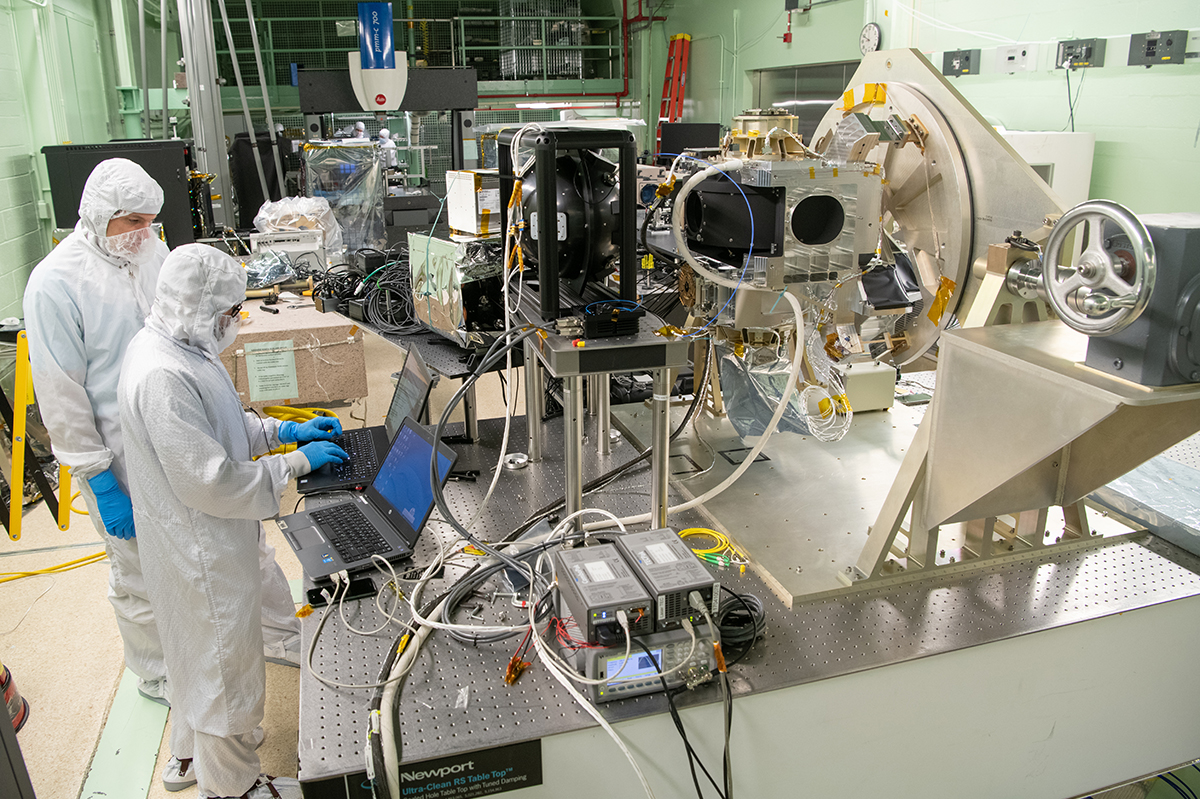
Joe Thomas and Alejandro Rodriguez Perez perform alignment of the MLA and Fiber Optics Bundle to the OCI OM.
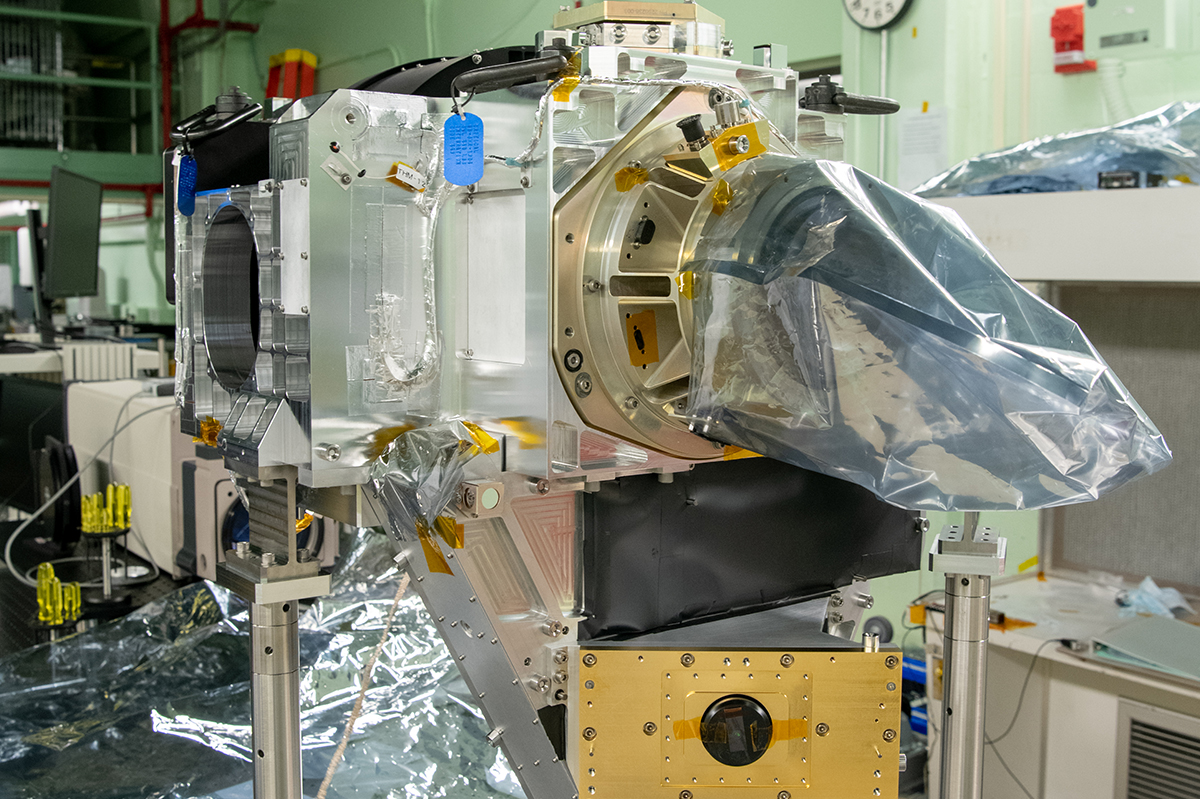
The MOSB installed onto the ETU MOB.
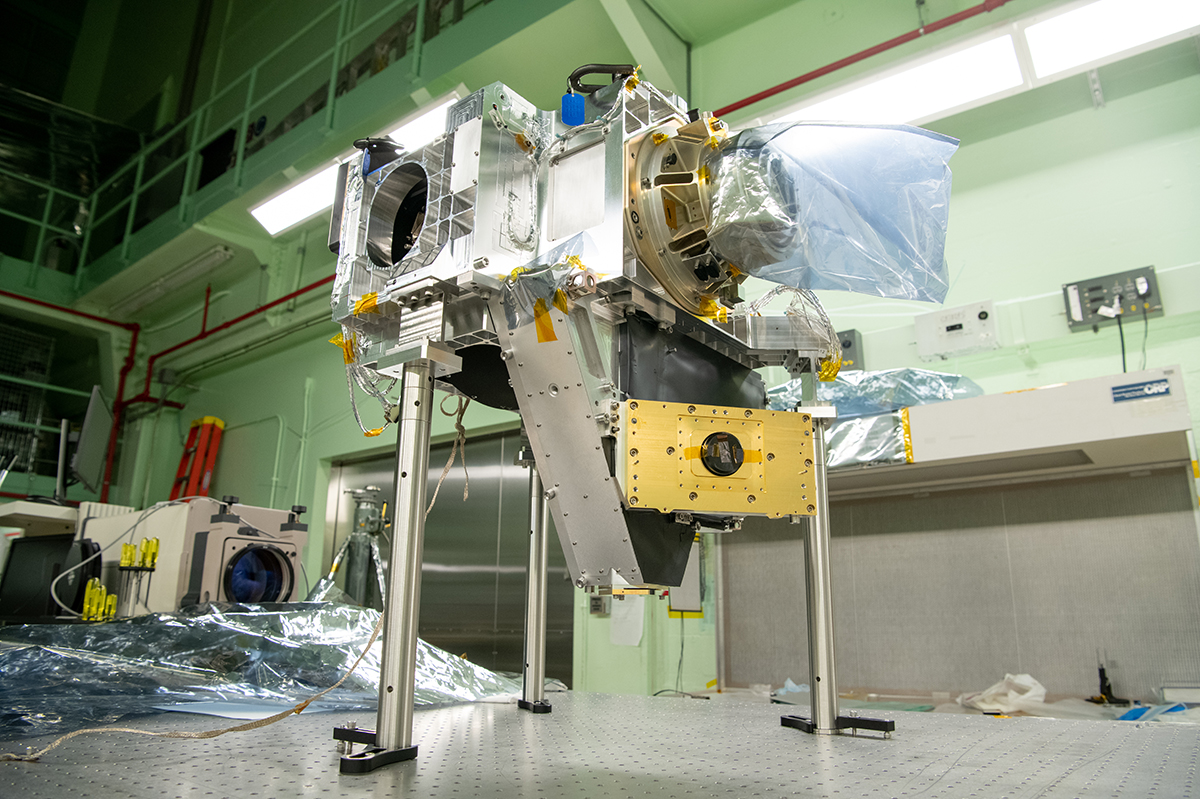
The MOSB installed onto the ETU MOB.
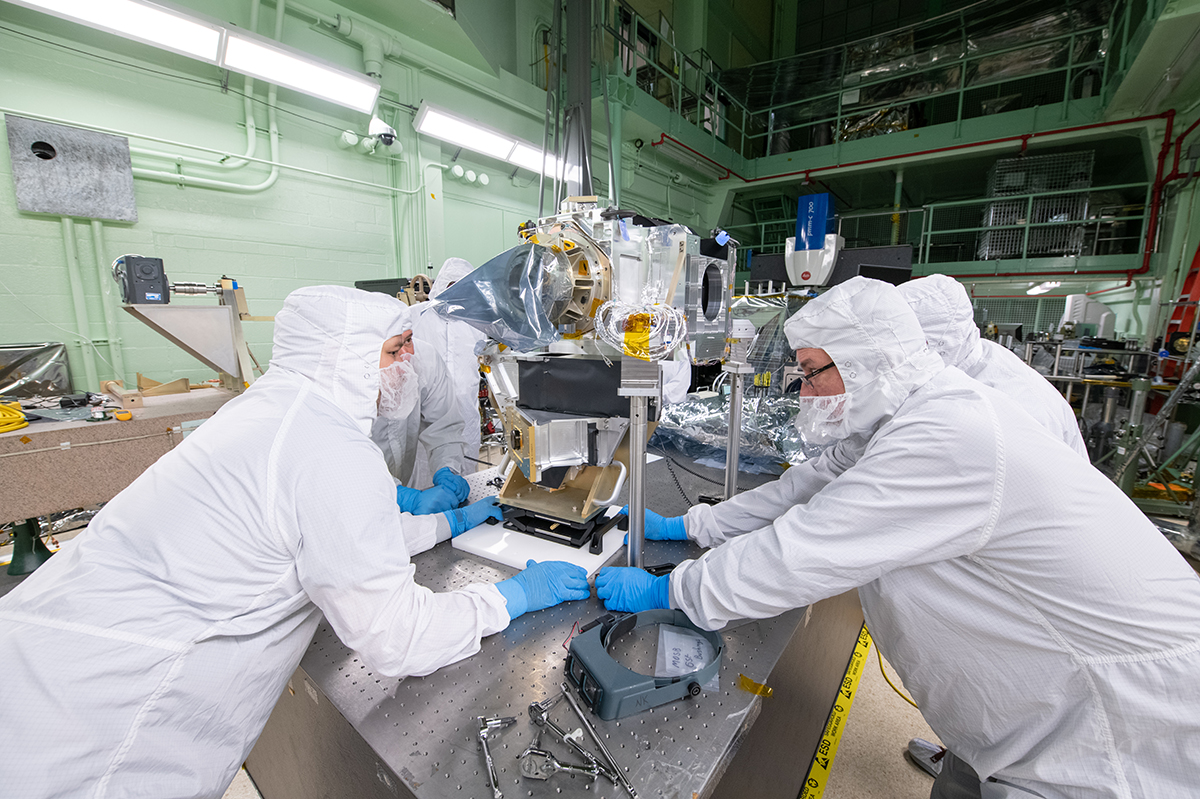
Integration of the populated ETU MOSB onto the ETU MOB.
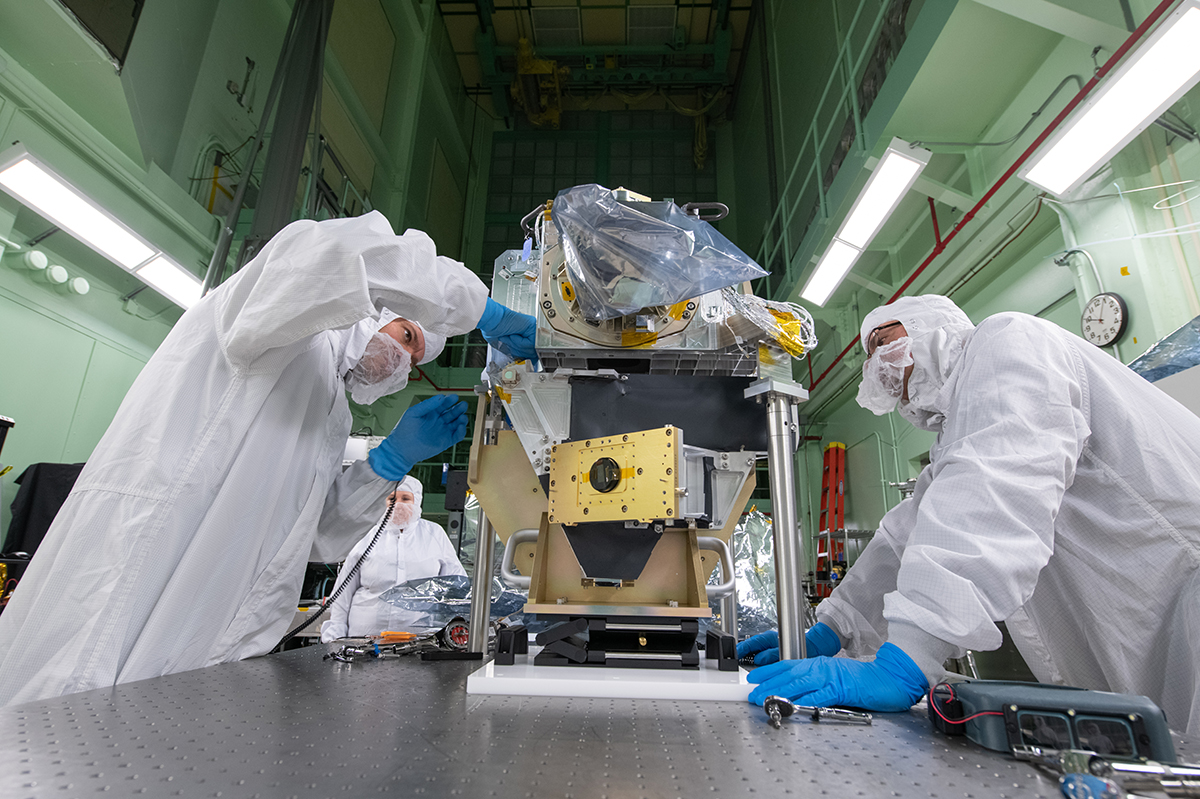
Integration of the populated ETU MOSB onto the ETU MOB.
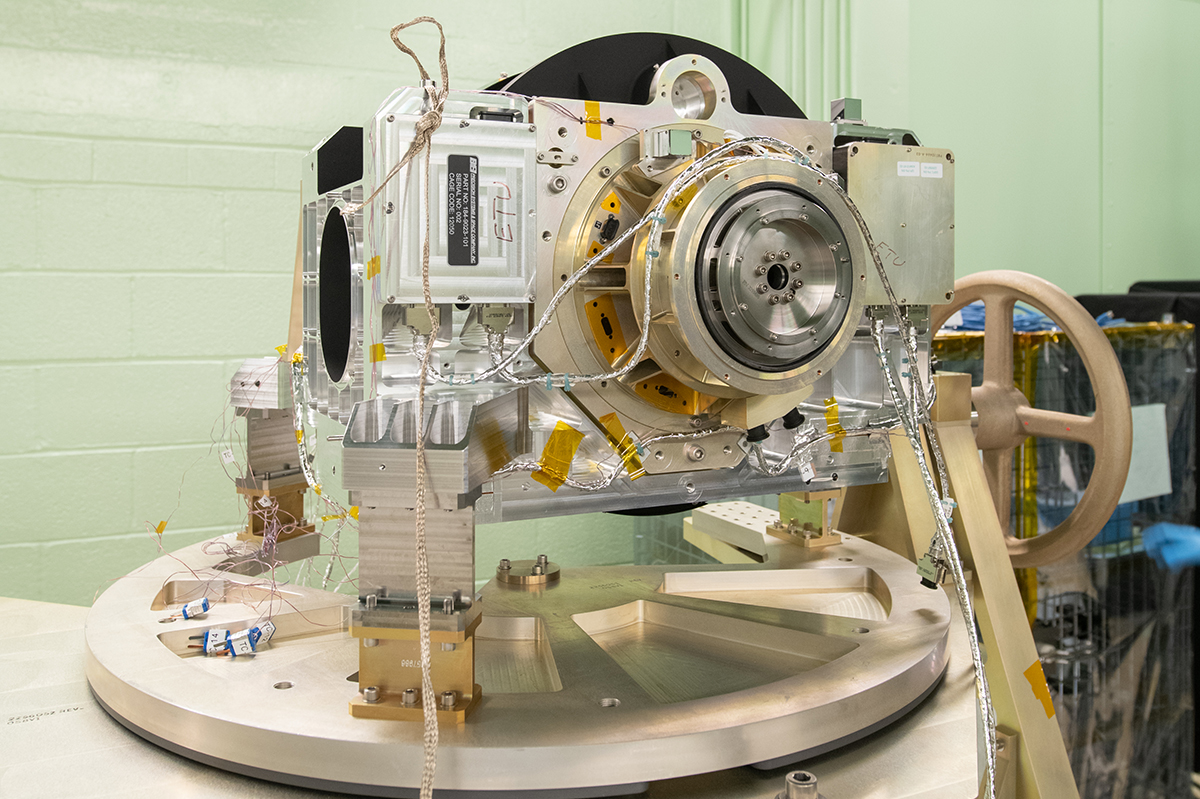
The OCI ETU MOB attached to the Lisard GSE prior to installation of the MOSB.
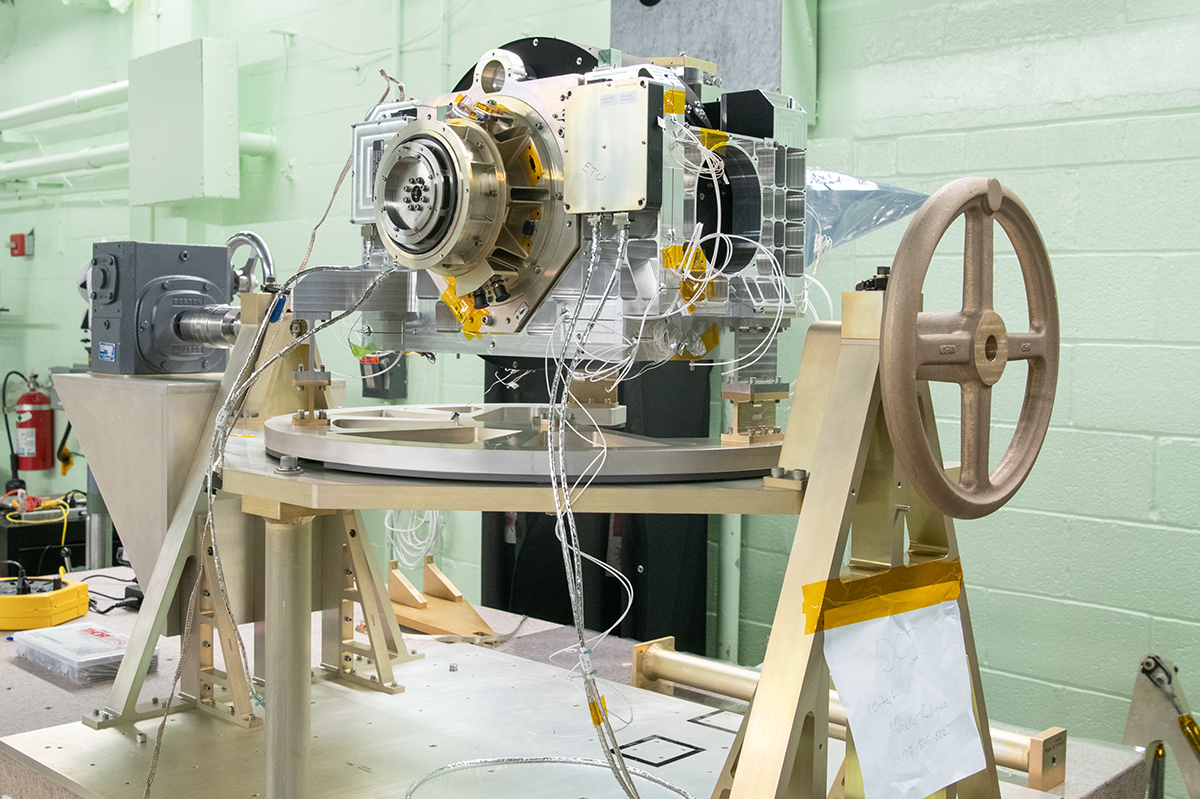
The MOB attached to the Lisard Ground Support Equipment (GSE), prior to installation of the Main Optics Sub-Bench (MOSB).
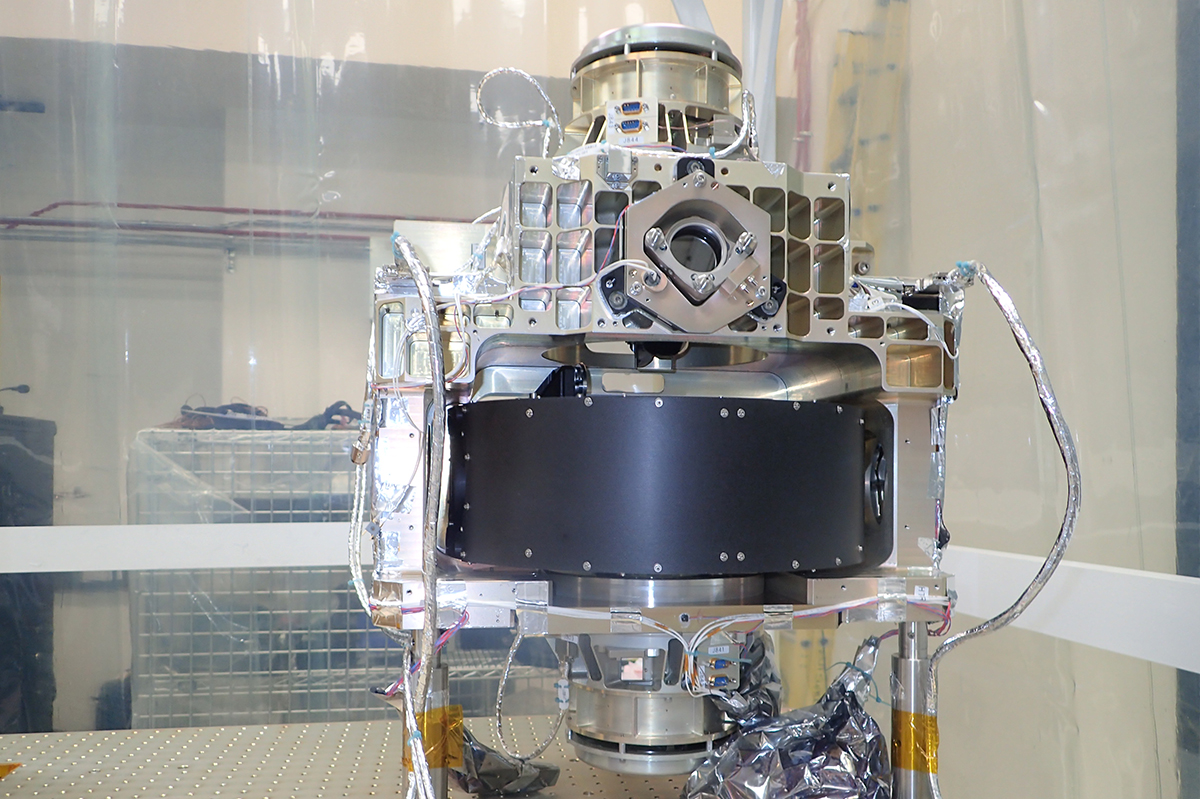
Ocean Color Instrument (OCI) ETU FlatSat End-to-End Electrical System Test - LTU Electrical Integration.
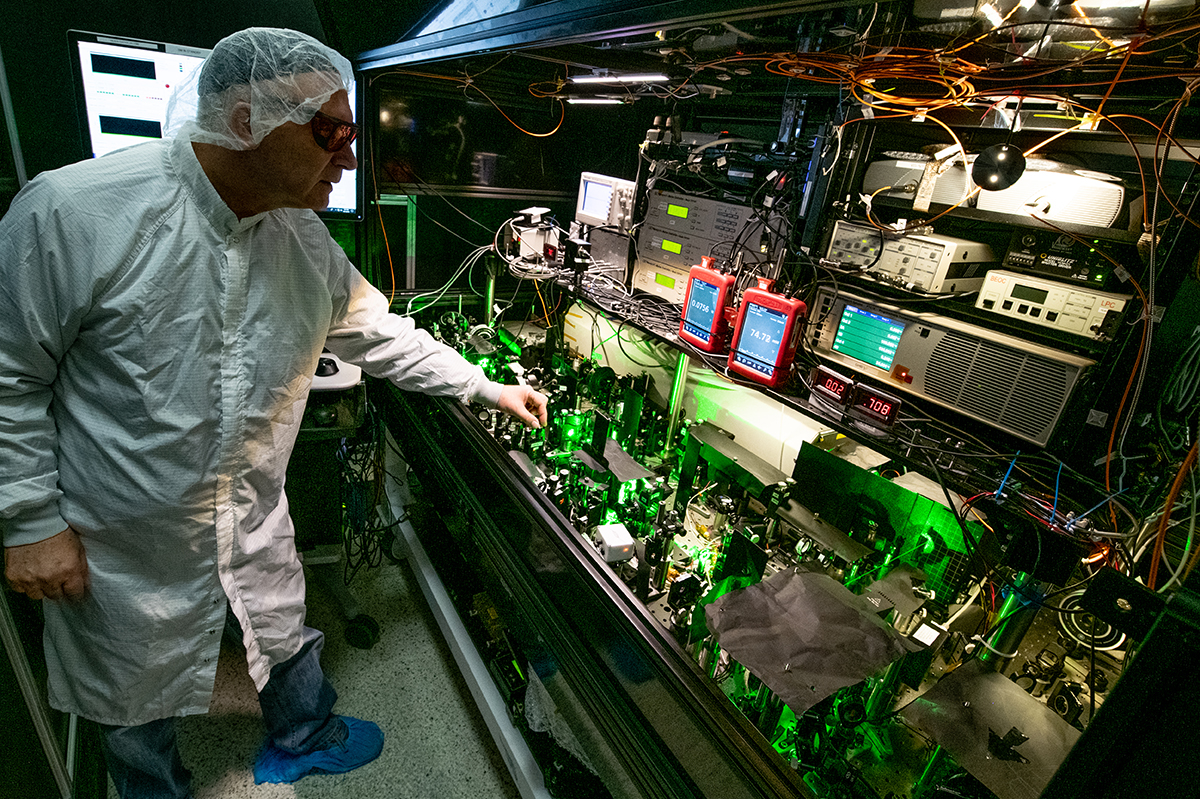
Andrei Sushkov operating the OLAF-2 Goddard Laser for Absolute Measure of Radiance source bench (green light coming from the primary source class-4 laser).
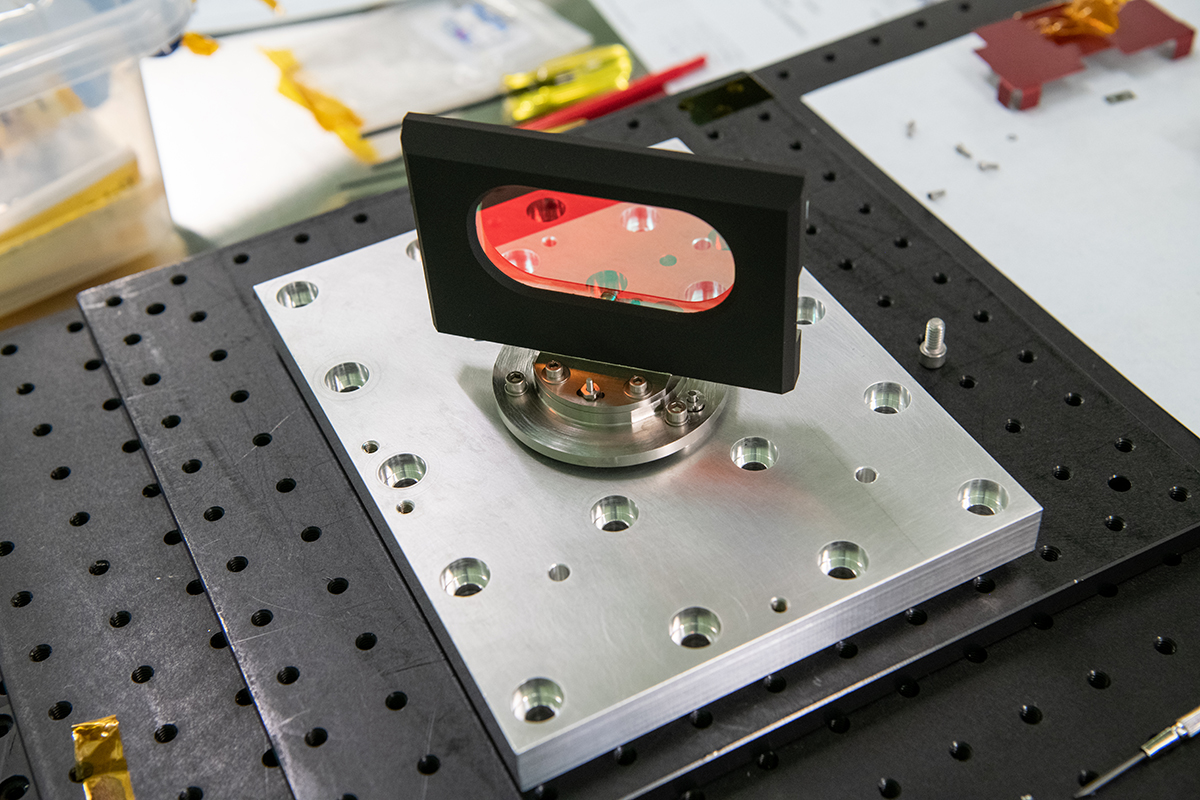
Ultraviolet Visible Risk Mitigation Unit Dichroic Assembly.
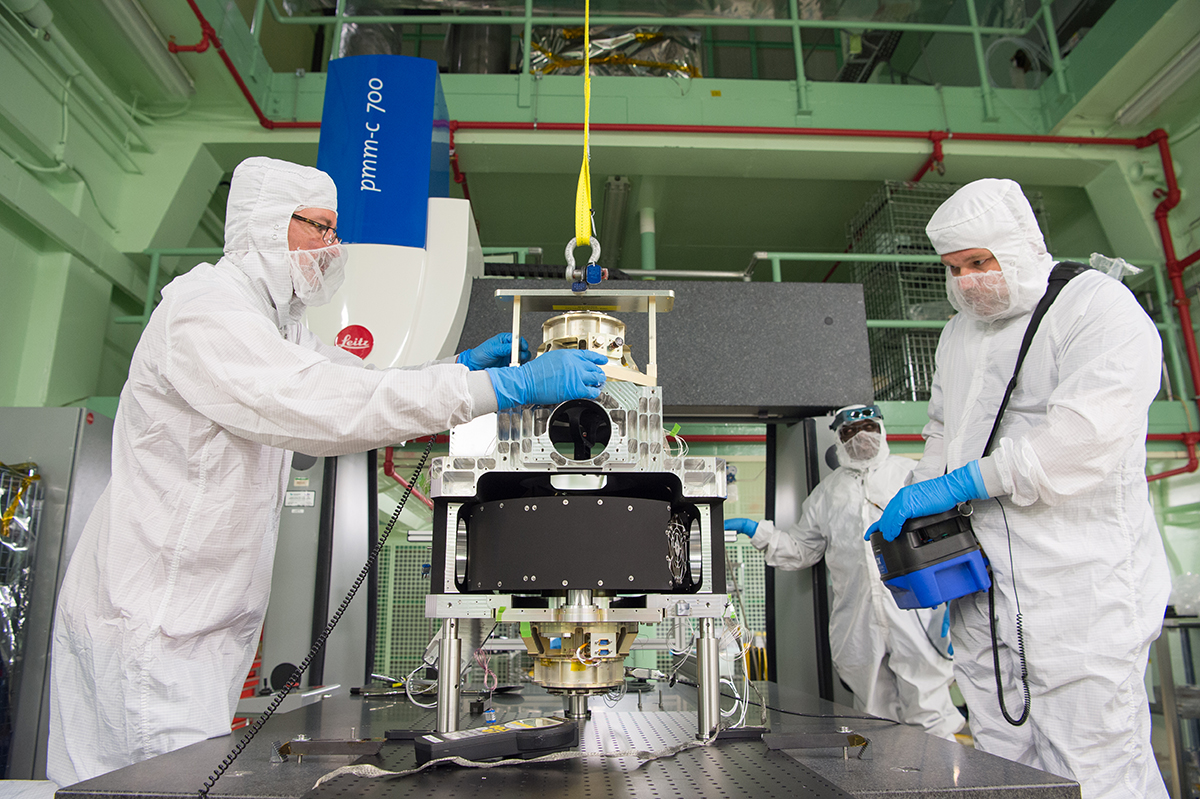
Installation of the ETU HAM mechanism into the Main Optical Bench (MOB) structure.
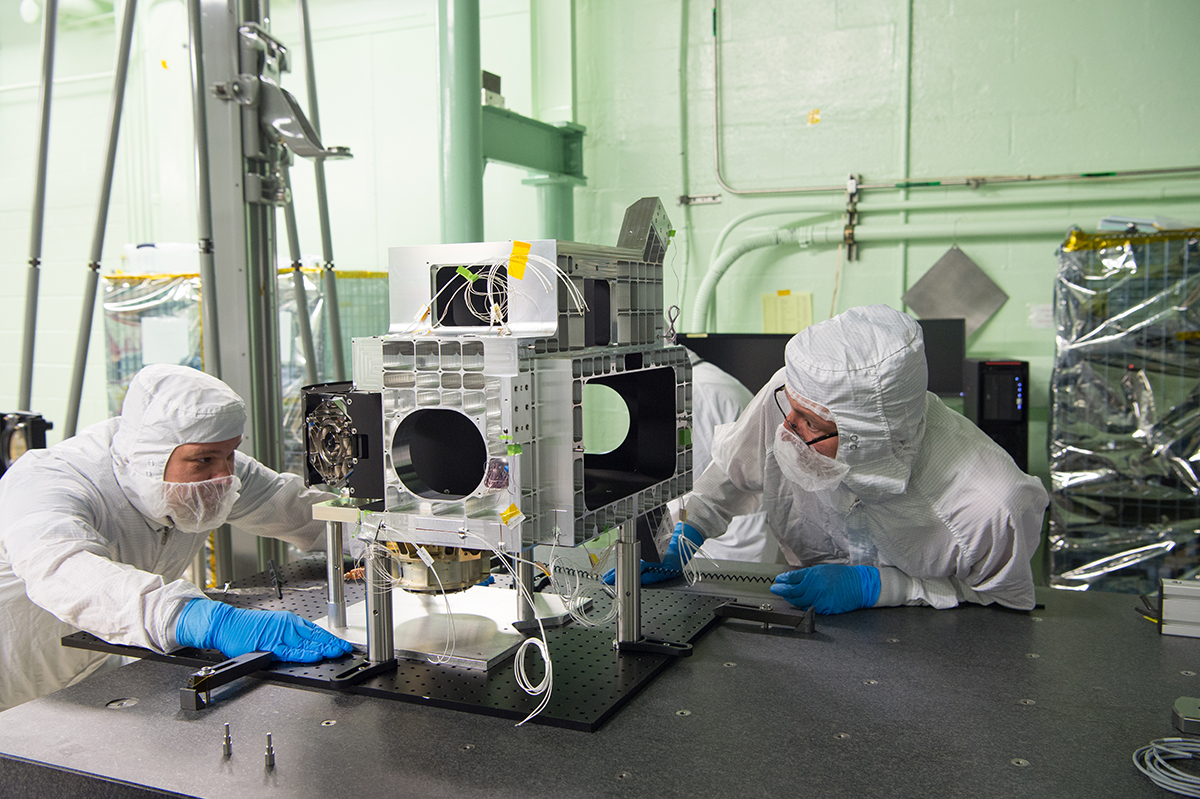
Installation of the ETU Rotating Telescope mechanism into the main optical bench structure.
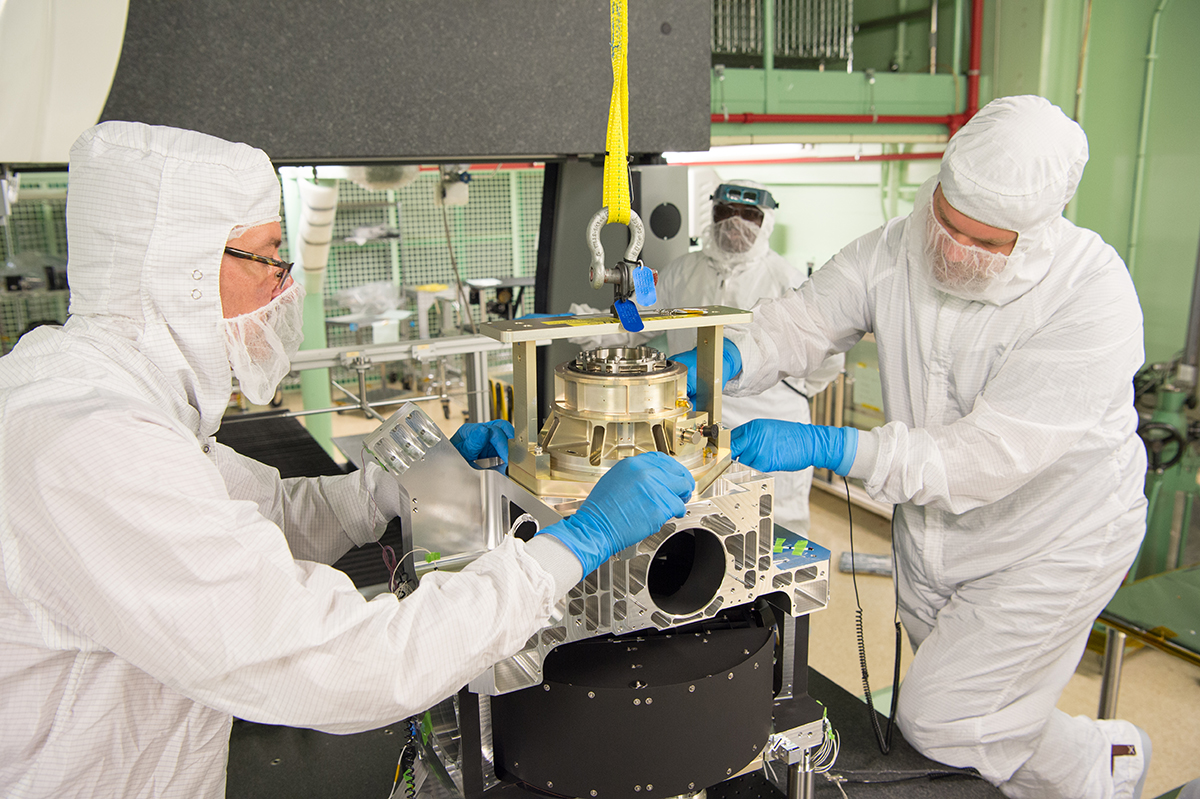
Alignment of the HAM mechanism in the MOB structure.
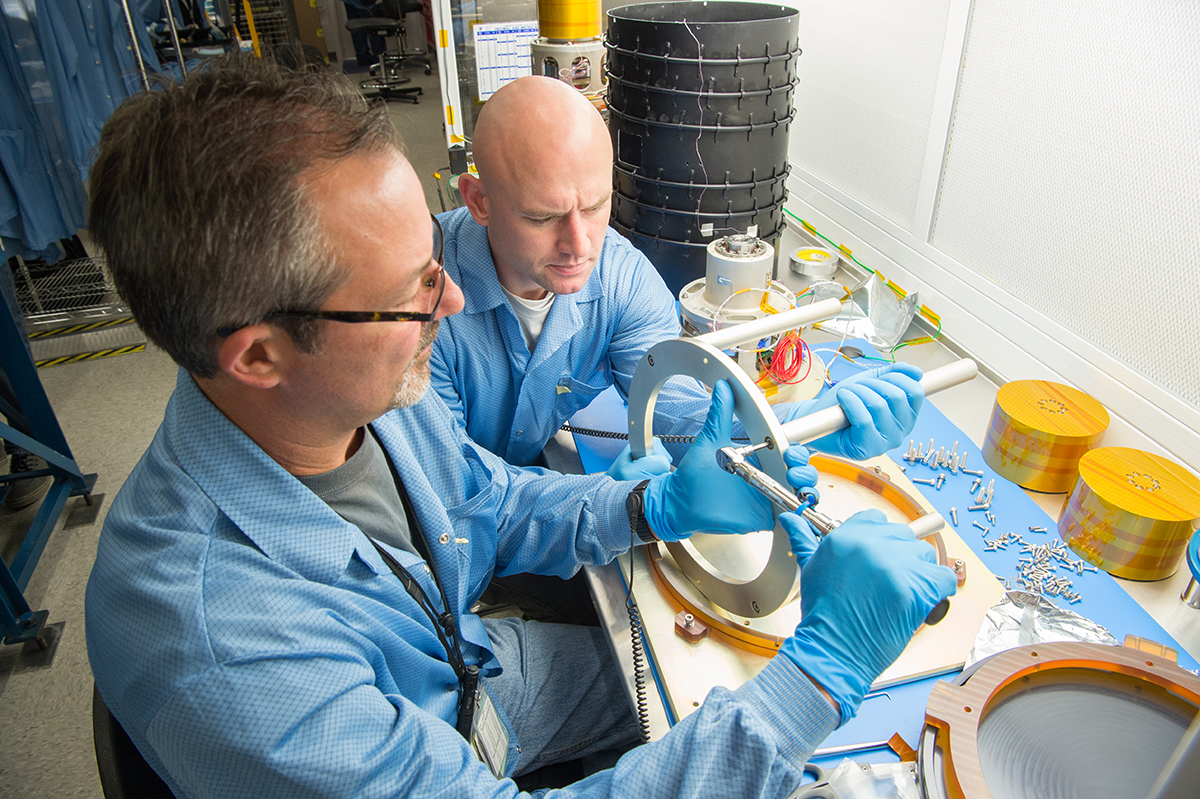
Assembly of the BOLT stack-up frame support structure.
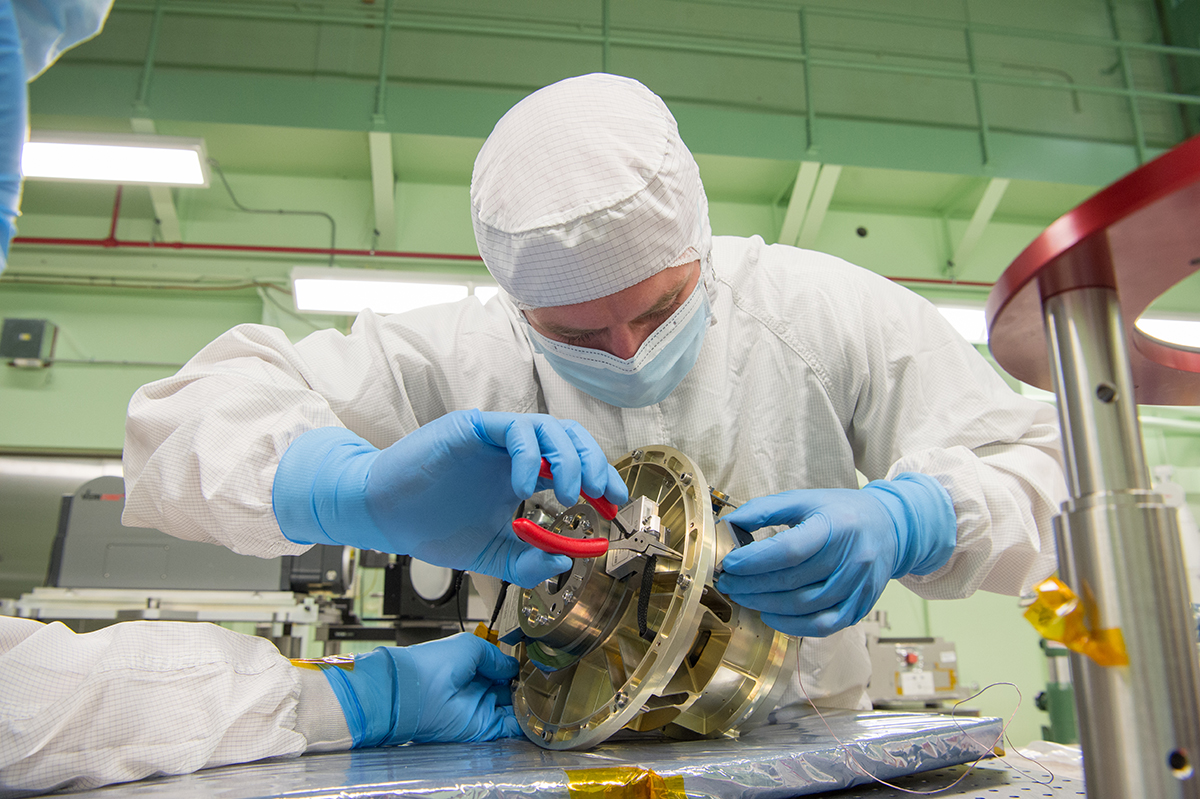
A NASA technician installs an optic reference cube to the HAM mechanism in order to perform alignment measurements.
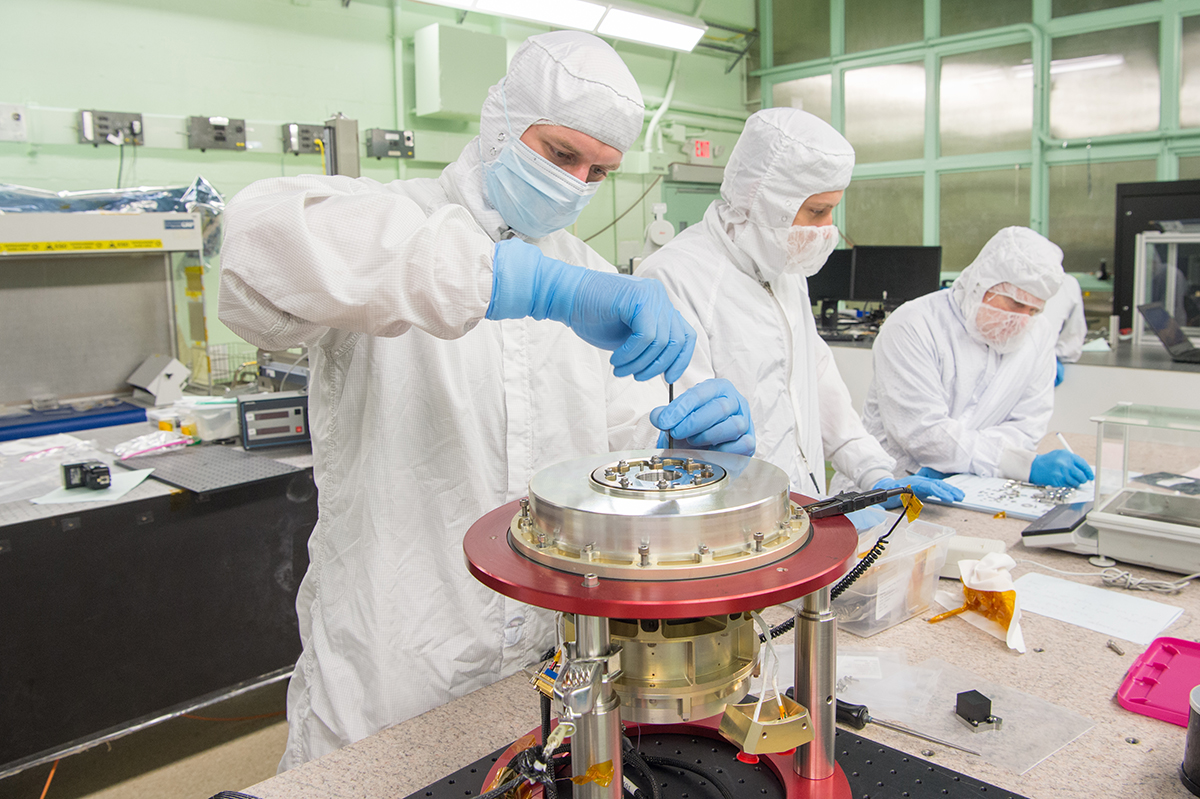
Installation of an optical cover to prevent any debris from contaminating the HAM mechanism optics.
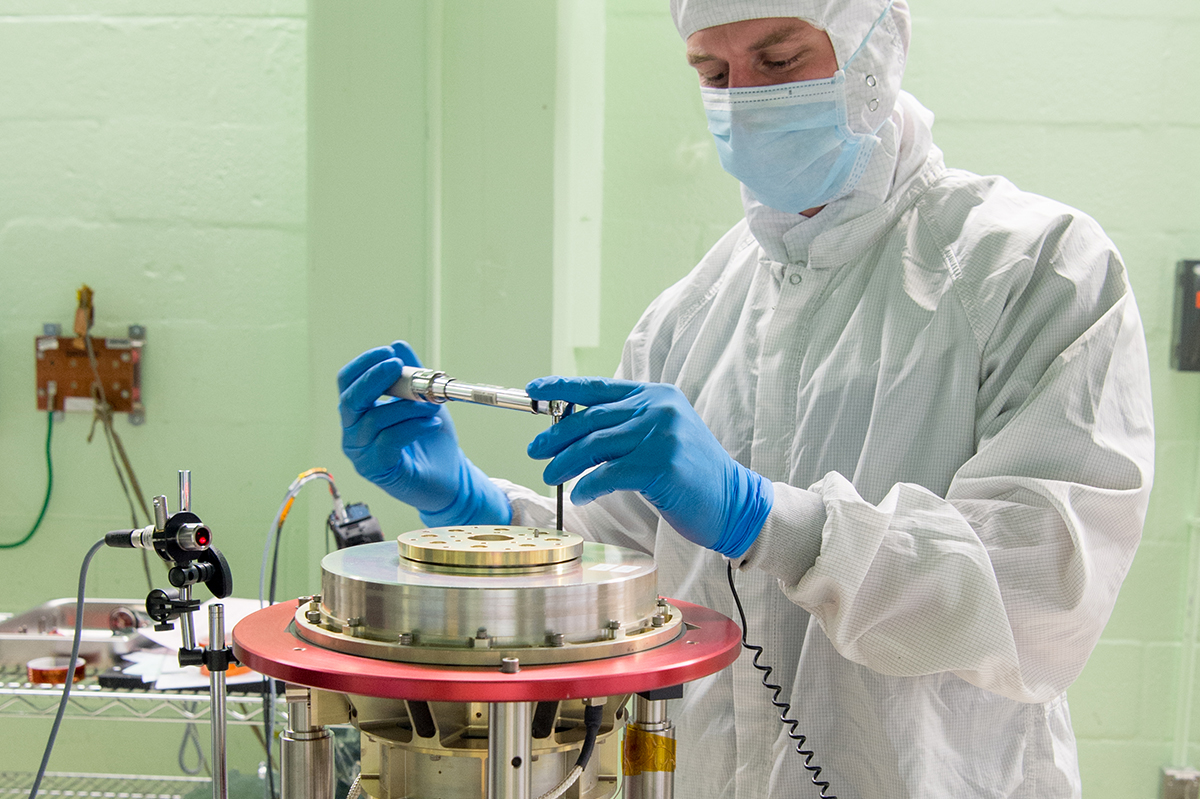
A NASA technician assembles the Half-Angle Mirror (HAM) mechanism in preparation for balancing activities.
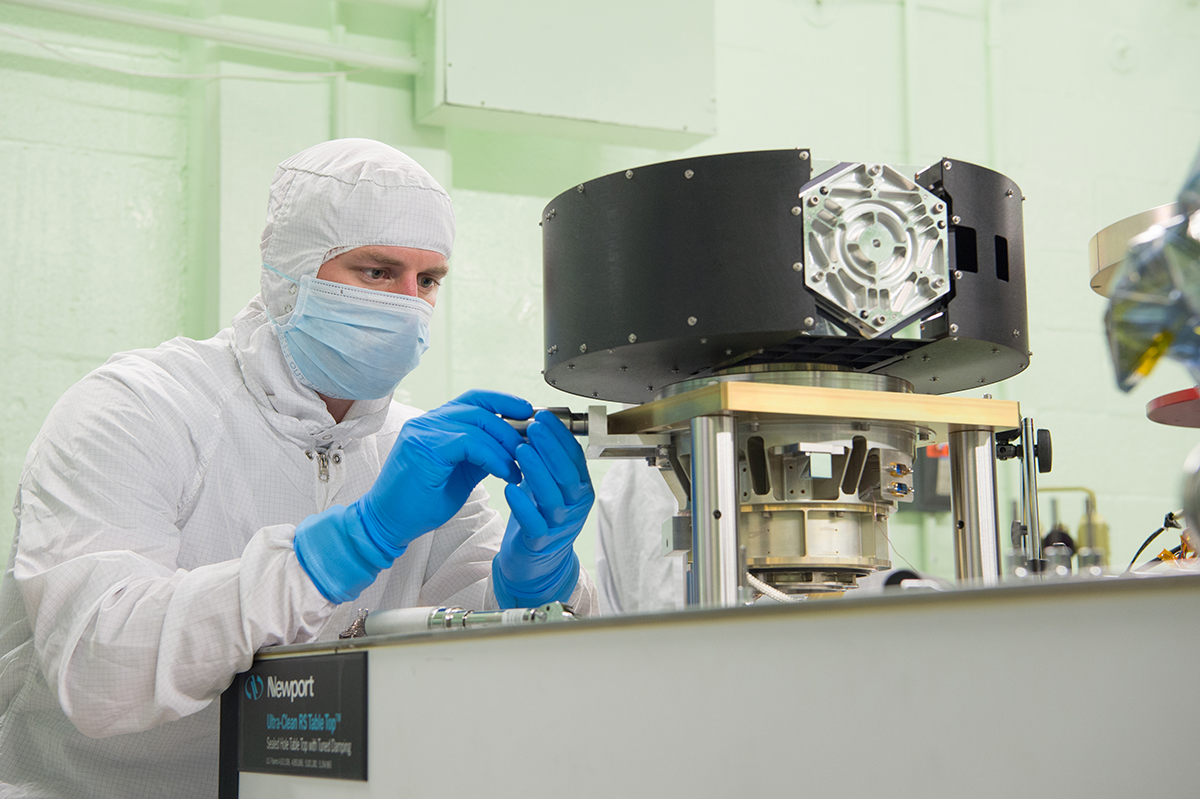
NASA technician, Wes Fincher, installs a temporary vibration sensor to prepare the ETU Rotating Telescope Assembly for dynamic spin evaluation.
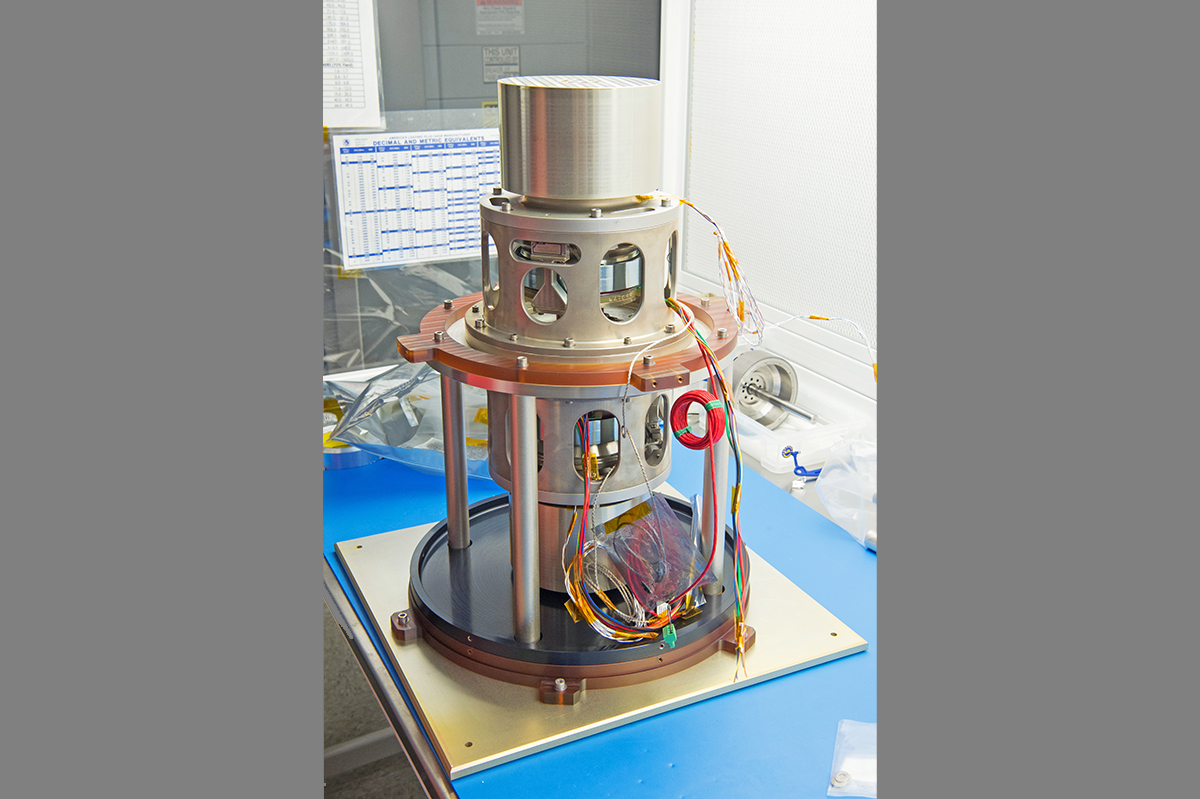
Assembly of the BOLT unit stack-up prior to harness routing.
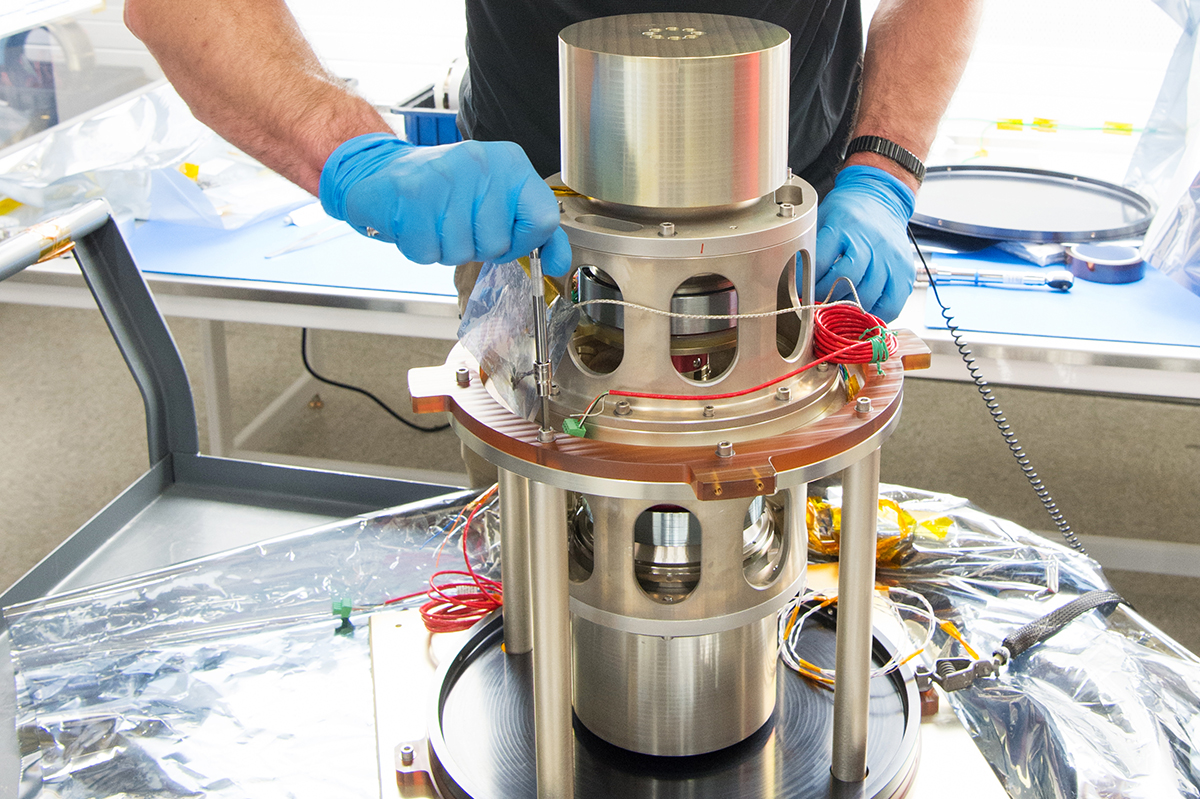
Assembly of the BOLT stack-up.
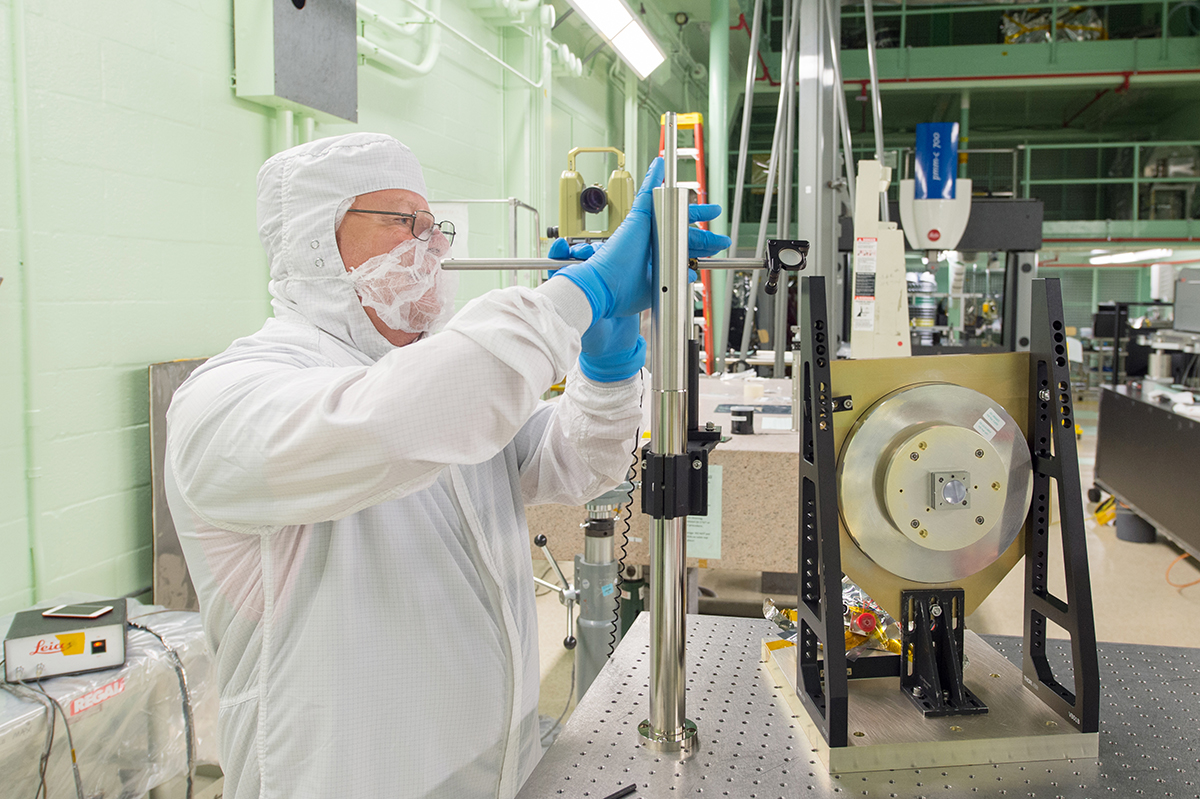
Setting up the Engineering Test Unit (ETU) for spindle axis characterization in order to measure the true spin axis of the mechanism.
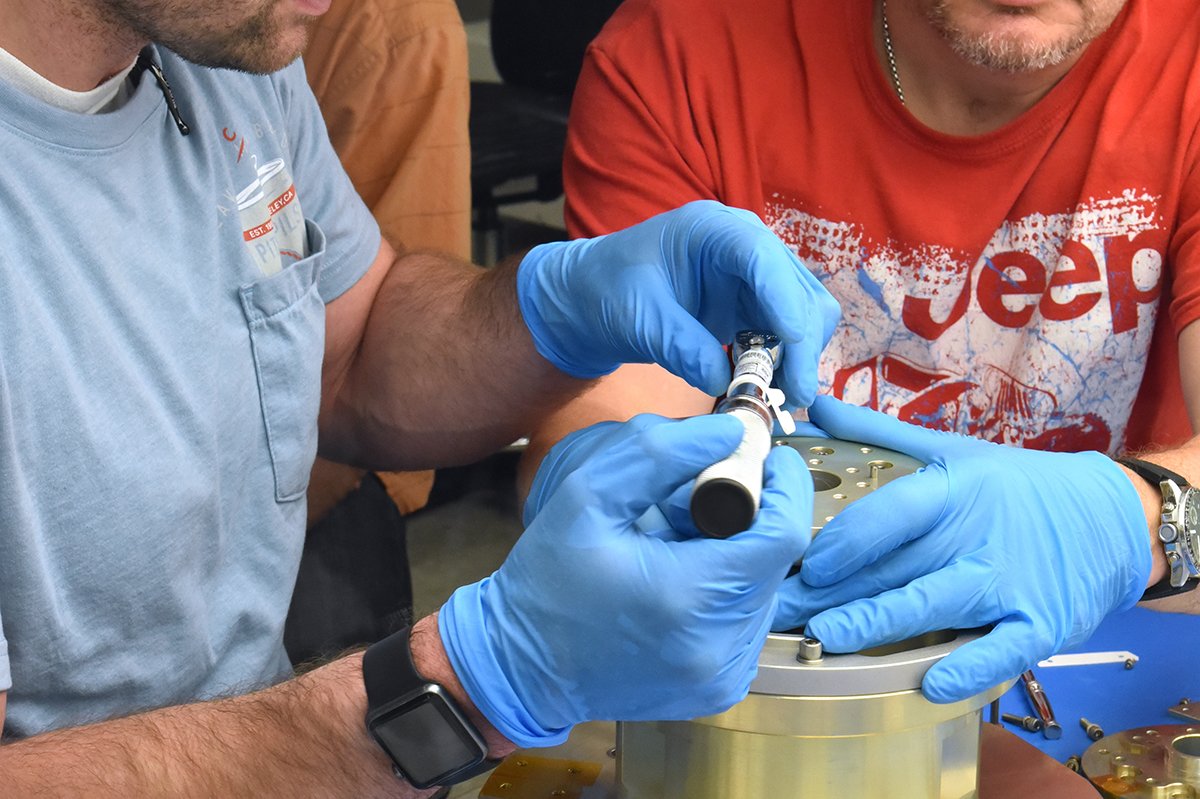
NASA technicians assemble the BOLT unit into the vibration fixture.

Performing BOLT vibration testing. A contamination cover is installed to protect the hardware from debris.
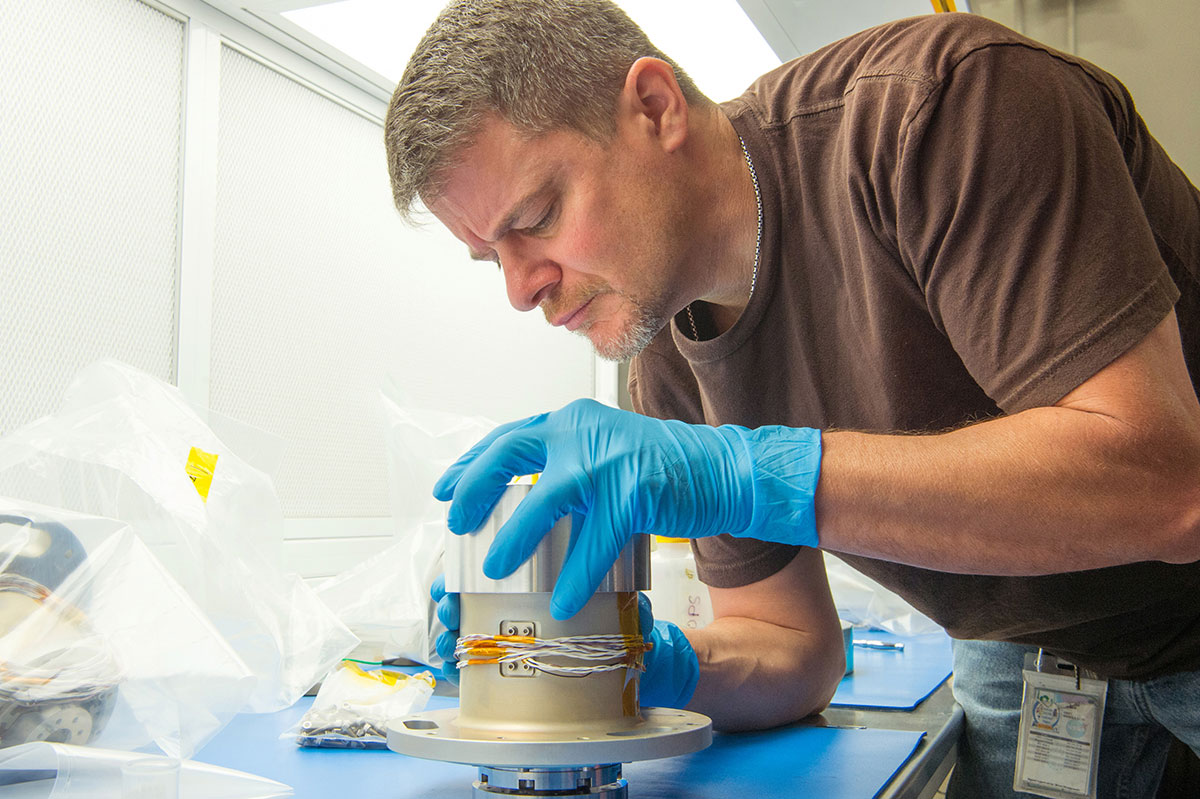
A NASA technician installs the rotor mass simulator to the Bearing Only Life Test (BOLT) unit in preparation for vibration testing.











































